Amazon Mechanical Turk
description: Micro-work service subsidiary of Amazon
125 results

Ghost Work: How to Stop Silicon Valley From Building a New Global Underclass
by
Mary L. Gray
and
Siddharth Suri
Published 6 May 2019
He got the following email: I am sorry but your Amazon Mechanical Turk account was closed due to a violation of our Participation Agreement and cannot be reopened. Any funds that were remaining on the account are forfeited, and we will not be able to provide any additional insight or action. You may review the Participation Agreement/Conditions of Use at this URL: http://www.mturk.com/mturk/conditionsofuse Thank you for trying Amazon Mechanical Turk. Best regards, Laverne P.S. We value your feedback, please rate my response using the link below. Amazon Mechanical Turk Please note: this e-mail was sent from an address that cannot accept incoming e-mail.
…
United Nations Development Programme, Global Dimensions of Human Development, Human Development Report (New York: Oxford University Press, 1992). [back] 19. Jesse Chandler, Pam Mueller, and Gabriele Paolacci, “Nonnaïveté Among Amazon Mechanical Turk Workers: Consequences and Solutions for Behavioral Researchers,” Behavior Research Methods 46, no. 1 (March 2014): 112–30, https://doi.org/10.3758/s13428-013-0365-7. [back] 20. Stewart et al., “The Average Laboratory Samples a Population of 7,300 Amazon Mechanical Turk Workers,” Judgment and Decision Making 10, no. 5 (2015): 13; Karën Fort, Gilles Adda, and K. Bretonnel Cohen, “Amazon Mechanical Turk: Gold Mine or Coal Mine?,” Computational Linguistics 37, no. 2 (2011): 413–20. [back] 21.
…
Temp: How American Work, American Business, and the American Dream Became Temporary. New York: Penguin, 2018. Ipeirotis, Panagiotis G. “Analyzing the Amazon Mechanical Turk Marketplace.” XRDS: Crossroads, The ACM Magazine for Students 17, no. 2 (December 1, 2010): 16. https://doi.org/10.1145/1869086.1869094. Ipeirotis, Panos. “How Many Mechanical Turk Workers Are There?” A Computer Scientist in Business School (blog), January 29, 2018. http://www.behind-the-enemy-lines.com/. Irani, Lilly C., and M. Six Silberman. “Turkopticon: Interrupting Worker Invisibility in Amazon Mechanical Turk.” In CHI ’13: Proceedings of the SIGCHI Conference on Human Factors in Computing Systems.
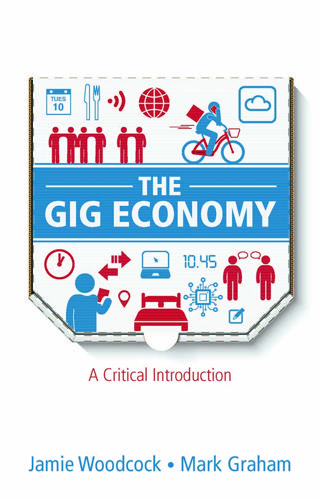
The Gig Economy: A Critical Introduction
by
Jamie Woodcock
and
Mark Graham
Published 17 Jan 2020
Online freelancing involves work that can be completed remotely, like web development, graphic design and writing that happen on platforms like UpWork or Freelancer. Microwork, on the other hand, involves much shorter tasks like image recognition and transcription that are typical on platforms such as Amazon Mechanical Turk. Both forms of work are organized digitally over the internet, with workers completing tasks remotely for the requesting organizations or individuals. Workers live all over the world, doing work that can come from anywhere. The use of digital tools in gig work also makes many jobs increasingly invisible.
…
At the opposite end is cloudwork (microwork), in which there are very low levels of temporality and geographic stickiness: the jobs are of very short duration and can be completed from anywhere with an internet connection. As with online freelancing, which exhibits slightly more geographical stickiness, as well as the potential for longer job duration, platforms provide a way for a client to connect with a worker and set their own rates and conditions, following the model of Upwork or Amazon Mechanical Turk. The platform hosts the requests for work and the response of prospective workers. Geographically tethered platform work requires workers to be in a particular place. This means the platform exerts more control, often involving many of the same controls that a traditional waged employer would deploy.
…
Figure 3(a) The availability of cloudwork Source: https://geonet.oii.ox.ac.uk/blog/mapping-the-availability-of-online-labour-in-2019/ Figure 3(b) The location of cloudworkers on the five largest English-language platforms Source: https://geonet.oii.ox.ac.uk/blog/mapping-the-availability-of-online-labour-in-2019/ Amazon’s Mechanical Turk – the world’s most well-known microwork platform – refers to these tasks as ‘artificial artificial intelligence’. These are tasks that usually rely on a distinctly human ability to interpret things (for instance image recognition or sentiment analysis). These are tasks that might, in theory, be performed by AI, but are cheaper and/or quicker to simply outsource to human workers.
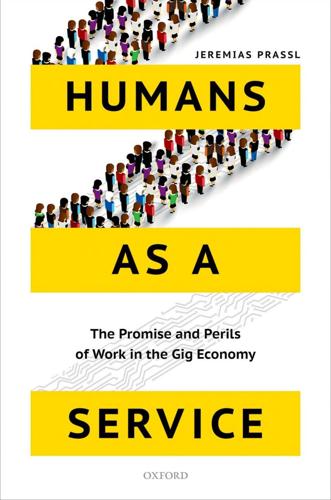
Humans as a Service: The Promise and Perils of Work in the Gig Economy
by
Jeremias Prassl
Published 7 May 2018
‘The “X” rejection and feedback on HITs’, Turk Requesters (30 January 2015), http://turkrequesters.blogspot.co.uk/2015/01/the-x-rejection-and-feedback- on-hits.html, archived at https://perma.cc/A2BK-XT6L; Amazon MTurk, ‘Amazon Mechanical Turk participation agreement’, clause 3(f), http://www. mturk.com/mturk/conditionsofuse, archived at https://perma.cc/6XKA-6QFL; see also Julian Dobson, ‘Mechanical Turk: Amazon’s new underclass’, Huffington Post (21 April 2013), http://www.huffingtonpost.com/julian-dobson/mechanical- turk-amazons-underclass_b_2687431.html, archived at https://perma.cc/9GGZ- 5PL5 (‘There’s no appeal if you think you’ve been exploited or scammed’). 38.
…
This tallies with research commissioned by the World Bank, which estimates that a typical online freelancer on Elance-oDesk (now Upwork) or Freelancer.com will work 20–40 hours per week and earn US$200– 750 per month, whilst only ‘a small subset of highly skilled workers . . . can earn up to $3000 per month’: Siou Chew Kuek, Cecilia Paradi-Guilford, Toks Fayomi, Soari Imaizumi, and Panos Ipeirotis, ‘The Global Opportunity in Online Outsourcing’ (World Bank 2015), 42, http://www.ipeirotis.com/wp-content/ uploads/2015/05/The-World-Bank-The-Global-Opportunity-in-Online- Outsourcing.pdf, archived at https://perma.cc/2AGP-TME6 42. Amazon MTurk, ‘Amazon Mechanical Turk pricing’, https://requester.mturk. com/pricing, archived at https://perma.cc/58T4-BUE7; Panagiotis Ipeirotis, ‘Analyzing the Amazon Mechanical Turk marketplace’ (2010) 17(2) XRDS 16, http://dl.acm.org/citation.cfm?id=1869094, archived at https://perma.cc/ 8C4M-74M8 43. Ibid., 19; Paul Hitlin, Research in the Crowdsourcing Age: A Case Study (Pew Research Center 2016), 8, http://assets.pewresearch.org/wp-content/uploads/ sites/14/2016/07/PI_2016.07.11_Mechanical-Turk_FINAL.pdf, archived at https://perma.cc/38NZ-97C4 44.
…
Amazon MTurk, ‘Amazon Mechanical Turk participation agreement’, clause 11, http://www.mturk.com/mturk/conditionsofuse, archived at https://perma. cc/6XKA-6QFL; Dynamo, ‘MTurk suspensions’, http://www.wearedynamo. org/suspensions, archived at https://perma.cc/SH8S-VAHW 59. John Arlidge, ‘We want it all now—but at what price?’, Sunday Times Magazine (10 July 2016), 13. 60. Mariano Mamertino of economics consultancy Indeed, as cited in REC, Gig Economy: The Uberisation of Work (REC 2016), 52. * * * 164 Notes 61. Caroline O’Donovan, ‘Changes to Amazon’s Mechanical Turk platform could cost workers’, BuzzFeed News (23 June 2015), http://www.buzzfeed.com/caro- lineodonovan/changes-to-amazons-mechanical-turk-platform-could-cost- worke?

What Algorithms Want: Imagination in the Age of Computing
by
Ed Finn
Published 10 Mar 2017
Bogost, Unit Operations; this sampling of tasks was offered on the site on August 15, 2014. 49. Ipeirotis, “Analyzing the Amazon Mechanical Turk Marketplace,” 21. 50. “Mechanical Turk Concepts.” 51. Riskin, “Machines in the Garden.” 52. Ibid., 27. 53. Zuniga, “Kasparov Tries New Strategy to Thwart Computer Opponent.” 54. Finley, “Did a Computer Bug Help Deep Blue Beat Kasparov? | WIRED.” 55. Silver, The Signal and the Noise, 288. 56. Isaacson, “‘Smarter Than You Think,’ by Clive Thompson.” 57. Ipeirotis, “Analyzing the Amazon Mechanical Turk Marketplace,” 21. 58. Glanz, “Data Centers Waste Vast Amounts of Energy, Belying Industry Image.” 59.
…
Ipeirotis, and Siddharth Suri. “The Computer Is the New Sewing Machine: Benefits and Perils of Crowdsourcing.” Presented at the WWW 2011, Hyderabad, India, March 28, 2011. http://www.ipeirotis.com/wp-content/uploads/2012/01/p325.pdf. Cushing, Ellen. “Amazon Mechanical Turk: The Digital Sweatshop.” Utne, January/February 2013. http://www.utne.com/science-and-technology/amazon-mechanical-turk-zm0z13jfzlin.aspx. D’Alembert, Jean Le Rond. Preliminary Discourse. In Encyclopedia of Diderot & d’Alembert—Collaborative Translation Project. Translated by Richard N. Schwab and Walter E. Rex. Ann Arbor: Michigan Publishing, University of Michigan Library, 2009. http://hdl.handle.net/2027/spo.did2222.0001.083.
…
McCulloch, Warren S., and Walter Pitts. “A Logical Calculus of the Ideas Immanent in Nervous Activity.” Bulletin of Mathematical Biophysics 5 (4) (December 1943): 115–133. doi:10.1007/BF02478259. “Mechanical Turk Concepts.” In Amazon Mechanical Turk Requester UI Guide, API Version 2014-08-15. Amazon. Accessed May 21, 2015. http://docs.aws.amazon.com/AWSMechTurk/latest/RequesterUI/mechanical-turk-concepts.html. Metz, Cade. “Google’s AI Takes Historic Match against Go Champ with Third Straight Win.” WIRED, March 12, 2016. http://www.wired.com/2016/03/third-straight-win-googles-ai-claims-victory-historic-match-go-champ.

Artificial Intelligence: A Guide for Thinking Humans
by
Melanie Mitchell
Published 14 Oct 2019
And computers were nowhere near to being reliable at this task, which was the whole reason for constructing ImageNet in the first place. The group was at an impasse, until Li, by chance, stumbled upon a three-year-old website that could deliver the human smarts that ImageNet required. The website had the strange name Amazon Mechanical Turk. Mechanical Turk According to Amazon, its Mechanical Turk service is “a marketplace for work that requires human intelligence.” The service connects requesters, people who need a task accomplished that is hard for computers, with workers, people who are willing to lend their human intelligence to a requester’s task, for a small fee (for example, labeling the objects in a photo, for ten cents per photo).
…
The images were downloaded from repositories such as Flickr.com, and the captions for these images were produced by humans—namely, Amazon Mechanical Turk workers, who were hired by Google for this study. Because captions can be so variable, each image was given a caption by five different people. Thus, each image appears in the training set five times, each time paired with a different caption. Figure 40 shows a sample training image and the captions given by the Mechanical Turk workers. FIGURE 39: Sketch of Google’s automated image-captioning system FIGURE 40: Sample training image with captions given by Amazon Mechanical Turk workers The Show and Tell decoder network was trained on about eighty thousand image-caption pairs.
…
The name Mechanical Turk comes from a famous eighteenth-century AI hoax: the original Mechanical Turk was a chess-playing “intelligent machine,” which secretly hid a human who controlled a puppet (the “Turk,” dressed like an Ottoman sultan) that made the moves. Evidently, it fooled many prominent people of the time, including Napoleon Bonaparte. Amazon’s service, while not meant to fool anyone, is, like the original Mechanical Turk, “Artificial Artificial Intelligence.”5 Fei-Fei Li realized that if her group paid tens of thousands of workers on Mechanical Turk to sort out irrelevant images for each of the WordNet terms, the whole data set could be completed within a few years at a relatively low cost.
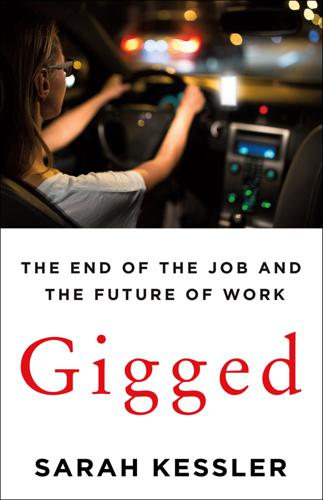
Gigged: The End of the Job and the Future of Work
by
Sarah Kessler
Published 11 Jun 2018
In this case, Mechanical Turk was Amazon’s way of finding thousands of examples of each color so that it could train its algorithms to automatically sort searches for “blue shoes” and “gray sweaters.” Improving technology in this way was one reason that Amazon had created Mechanical Turk. Another reason was to compensate for technology’s shortcomings with human intelligence. Amazon created one of its first applications that used Mechanical Turk in the days when people could email via cell phones, but couldn’t yet access the internet. The idea was that people on their “mobile email” could send questions, such as “Where is the best restaurant near me?”
…
It seemed like magic, but workers like Kristy were at the other end, Googling and answering for a penny per question. Amazon had not launched the Mechanical Turk platform with a promise to create jobs, the way that Uber had early on bragged about adding “20,000 new driver jobs” to the economy every month. Rather, it had built the website as a way to integrate human intelligence with code—as a service for programmers. TechCrunch’s founder wrote shortly after the product launched that. “Amazon’s new Mechanical Turk product is brilliant because it will help application developers overcome certain types of problems (resulting in the possibility for new kinds of applications) and somewhat scary because I can’t get the Matrix-we-are-all-plugged-into-a-machine vision out of my head.”
…
October 2015. http://static1.squarespace.com/static/53c31c5ce4b053fc7d131b18/t/56405d98e4b07bcd9d9704a1/1447058840358/Portner+-+compensating+wage+differentials.pdf. 23 Salehi et al. We Are Dynamo. 24 Harris, Mark. Amazon Mechanical Turk Workers Protest: “I Am a Human Being, Not an Algorithm.” The Guardian. December 3, 2014. https://www.theguardian.com/technology/2014/dec/03/amazon-mechanical-turk-workers-protest-jeff-bezos. 25 Katz, Miranda. Amazon’s Turker Crowd Has Had Enough. Wired. August 23, 2017. https://www.wired.com/story/amazons-turker-crowd-has-had-enough/. 26 The traditional unions that once helped create the American middle class have nowhere near as much influence today as they once did.
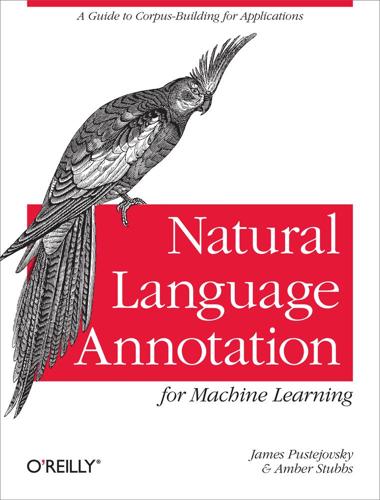
Natural Language Annotation for Machine Learning
by
James Pustejovsky
and
Amber Stubbs
Published 14 Oct 2012
Each of these methods can be performed within the MATTER cycle—they still require coming up with an annotation goal, finding a specification, and defining guidelines for how the annotation will be applied, but the guidelines here aren’t the traditional approach of writing an instruction manual and having the annotators read and apply what they learn. Amazon’s Mechanical Turk One approach to crowdsourcing is this: rather than hire a small number of annotators to annotate a corpus at relatively high wages, the annotation task is divided into very small tasks, which are then distributed over a large number of people for very small amounts of money per task. The most widely used resource for this at the moment is Amazon’s Mechanical Turk (MTurk), where researchers (or businesses) create Human Intelligence Tasks (HITs) which are then posted on something like a job board, and Turkers (as the workers are called) have the option to take on a task, and get paid for completing it.
…
References for Using Amazon’s Mechanical Turk/Crowdsourcing Aker, Ahmet, Mahmoud El-Haj, M-Dyaa Albakour, and Udo Kruschwitz. 2012. “Assessing Crowdsourcing Quality through Objective Tasks.” In Proceedings of the 8th International Conference on Language Resources and Evaluation (LREC’12), Istanbul, Turkey. Filatova, Elena. 2012. “Irony and Sarcasm: Corpus Generation and Analysis Using Crowdsourcing.” In Proceedings of the 8th International Conference on Language Resources and Evaluation (LREC’12), Istanbul, Turkey. Fort, Karën, Gilles Adda, and K. Bretonnel Cohen. 2011. “Amazon Mechanical Turk: Gold Mine or Coal Mine?”
…
representative sampling, importance of, The Ideal Corpus: Representative and Balanced resources for existing, Background Research–NLP Challenges revising distributions/content of, Corpus Distributions and Content size considerations with, The Size of Your Corpus size, comparing with other corpora, Existing Corpora TimeML, building for, and evolution of, Building the Corpus crowdsourcing (of annotation tasks), The Infrastructure of an Annotation Project, Crowdsourcing Annotation–User-Generated Content, Amazon’s Mechanical Turk, Games with a Purpose (GWAP)–Games with a Purpose (GWAP), User-Generated Content Games with a Purpose (GWAP), Games with a Purpose (GWAP)–Games with a Purpose (GWAP) Mechanical Turk (MTurk), Amazon’s Mechanical Turk user-generated content, User-Generated Content D DARPA (Defense Advanced Research Projects Agency), Related Research Data Category Registry (DCR), Annotation format standards data preperation for annotation, Preparing Your Data for Annotation–Writing the Annotation Guidelines, Metadata, Preprocessed Data, Splitting Up the Files for Annotation metadata and the potential for bias in, Metadata preprocessed data, advantages/concerns with, Preprocessed Data splitting files for annotation/testing, Splitting Up the Files for Annotation data sparseness problem, Naïve Bayes Learning dataset, Assembling Your Dataset (see corpus, corpora) DCR (Data Category Registry), Annotation format standards decision tree, Classification decision tree learning, Decision Tree Learning–Decision Tree Learning development corpus, Train and Test the Algorithms over the Corpus development-test set, Train and Test the Algorithms over the Corpus directed acyclic graph (DAG), Kinds of Annotation distributed method of annotation, The Infrastructure of an Annotation Project document annotation, Model the Phenomenon document classification, What Is Natural Language Processing?
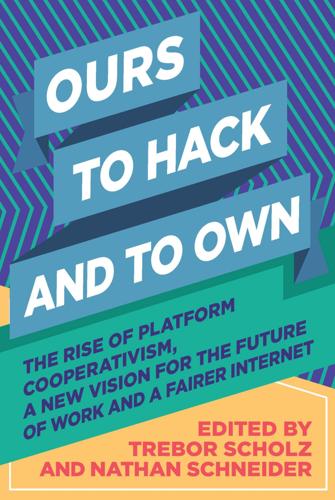
Ours to Hack and to Own: The Rise of Platform Cooperativism, a New Vision for the Future of Work and a Fairer Internet
by
Trebor Scholz
and
Nathan Schneider
Published 14 Aug 2017
Words are the tools of my trade as a writer, so I like to have a handle on what they mean. We rely on them so much. They connect us to each other; they remind us what we’re capable of. And I hope that the Internet can help us make our definitions of democracy more ambitious, rather than redefining it out of existence. In late 2014 I was reporting a story about Amazon’s Mechanical Turk platform, a website where users can find entirely online piece-work—jobs that might take between seconds and hours, like transcribing a receipt, providing feedback on an ad, or taking a sociological survey. I went to Trebor Scholz’s Digital Labor conference in New York, which included real-life Mechanical Turkers.
…
Initially, at these events, discussions focused on the Italian Workerists, immaterial labor, and “playbor.” Artists like Burak Arikan, Alex Rivera, Stephanie Rothenberg, and Dmytri Kleiner played pioneering roles in alerting the public to these issues. Later, debates became more concerned with “crowd fleecing,” the exploitation of thousands of invisible workers in crowdsourcing systems like Amazon Mechanical Turk or content moderation farms in the Philippines. Over the past few years, the search for concrete alternatives for a better future of work has become more dynamic. The theory of platform cooperativism has two main tenets: communal ownership and democratic governance. It is bringing together 135 years of worker self-management, the roughly 170 years of the cooperative movement, and commons-based peer production with the compensated digital economy.
…
This observation resonated with me, because I worked for many years with homecare workers and their allies in the disability rights movement, who have the slogan “Invisible No More.” One of the big differences between domestic workers and platform workers (especially online-only platforms like Amazon’s Mechanical Turk) is that the domestic workers have word of mouth, and references, and do work that is geographically located in a specific place. Most of us employed in traditional jobs have things like resumes, coworkers that we can rely on for references, networks of people who will tell us about jobs, and other advantages that help when we’re looking for new work.
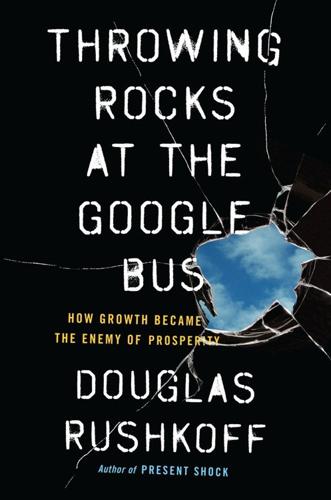
Throwing Rocks at the Google Bus: How Growth Became the Enemy of Prosperity
by
Douglas Rushkoff
Published 1 Mar 2016
The CEO of the CrowdFlower crowdsourcing platform, Lukas Biewald, explains that these platforms are “bringing opportunities to people who never would have had them before, and we operate in a truly egalitarian fashion, where anyone who wants to can do microtasks, no matter their gender, nationality, or socio-economic status, and can do so in a way that is entirely of their choosing and unique to them.”40 Crowdsourcing platforms, such as Amazon Mechanical Turk, pay people to perform tiny, repetitive tasks that computers just can’t handle yet. Workers log into one of the platforms from home or an Internet café and then choose from a series of tasks on offer. They might be paid three cents each time they identify the subject of a photo, transcribe a sentence from a video lecture, or list the items in a scanned receipt.
…
The labor force isn’t simply replaceable; it’s in constant flux, perpetually changing and responsible for its own training and care. As digital labor scholar and activist Trebor Scholz has pointed out,41 in crowdsourcing there’s no minimum wage, no labor regulation, no governmental jurisdiction. Although 18 percent of workers on Amazon Mechanical Turks are full-time laborers, most of them make less than two dollars an hour. Amazon argues that the platform is all about choice and empowerment, that workers can “vote with their feet” against bad labor practices. But when even minimum-wage jobs aren’t available to many workers today, they are empowered to make only one choice or none at all.
…
Amazon then leveraged its monopoly in books and free shipping to develop monopolies in other verticals, beginning with home electronics (bankrupting Circuit City and Best Buy), and then every other link in the physical and virtual fulfillment chain, from shoes and food to music and videos. Finally, Amazon flips into personhood by reversing the traditional relationship between people and machines. Amazon’s patented recommendation engines attempt to drive our human selection process. Amazon Mechanical Turks gave computers the ability to mete out repetitive tasks to legions of human drones. The computers did the thinking and choosing; the people pointed and clicked as they were instructed or induced to do. Neither Amazon nor its founder, Jeff Bezos, is slipping to new lows here. The company is simply operating true to the core program of corporatism, expressed through new digital means.

Speaking Code: Coding as Aesthetic and Political Expression
by
Geoff Cox
and
Alex McLean
Published 9 Nov 2012
But labor is no longer simply contained by 48 Chapter 2 Figure 2.3 Amazon Mechanical Turk’s homepage (2011). Screenshot. the factory walls, as part of a process that Marx termed “real subsumption” (in Grundrisse) to conceptualize the way class exploitation is subsumed into the wider social realm.36 This is clearly more evident under contemporary conditions than it was in the mid-nineteenth century, as the process of subsumption is now assisted by informational technologies and networked intelligence. Amazon’s Mechanical Turk is a case in point. Intriguingly named after Kempelen’s automaton, it is an online marketplace for precarious work, running since 2005.
…
Networked communication technologies play a significant role in these processes of subjectification as they relate to general intellect, forming networked intelligence.47 With this concept (an elaboration of subsumption), already Marx had predicted that the productive forces of the intellect, of human knowledge and skills, would be incorporated into capital itself. The crucial issue, both then and now, is that general intellect Code Working 51 unleashes contradictions by combining technical knowledge and the social cooperation of bodies. The concept is somewhat materialized in the procedures of Amazon’s Mechanical Turk and more generally in coding cultures, where connectivity is reflected in the open-source and free software movements as an example of how technical expertise and socialized labor can be shared and recombined effectively. Such ways of working with software are arguably more robust and less bug-ridden as a result of collective development, but the contradictions are also evident, as this approach becomes the orthodoxy in the release of proprietary software development too.
…
“For Marx, the privileged example of really free working—happiness itself—is ‘composition,’ the construction of the communist score . . . communism whose song will free the space in which it resonates, and spreads.”118 A further example is Aaron Koblin and Daniel Massey’s artwork Bicycle Built for Two Thousand (2009), using Amazon’s Mechanical Turk crowdsourcing web service as mentioned earlier in the chapter. This time over two thousand recorded voices are collected and assembled into the song “Daisy Bell,” the same song that was used in the first example of musical speech synthesis in 1962 (which made the IBM 7094 the first computer to sing a song).119 Yet the comparison between the computer-synthesized vocals and the one created with distributed humans is not very encouraging, as both have been effectively synthesized.

Data Action: Using Data for Public Good
by
Sarah Williams
Published 14 Sep 2020
Jeff Howe codified the term's more contemporary meaning in a 2006 article in Wired titled “The Rise of Crowdsourcing,” using the term to describe the strategic appropriation of specialized labor markets to “create content, solve problems, even do corporate R&D.” 45 Howe tied crowdsourcing to Amazon's Mechanical Turk program, a “Web-based marketplace that helps companies find people to perform tasks computers are generally lousy at,” such as identifying images, sifting through interpretive information in documents, creating annotations, and more.46 This is where historical and contemporary treatments of the term “crowdsourcing” diverge: modern crowdsourcing privileges human intervention over computational algorithms, and relies on the dialectic relationship between humans and technology.
…
Although the term “crowdsourcing” was coined for application to corporations, many public participation science research projects have employed elements of crowdsourcing methodologies in order to annotate or collect large amounts of data that could not otherwise be annotated with a smaller number of researchers addressing the problem. Crowdsourcing is controversial. One of the criticisms levelled at the crowdsourcing method of data collection involves the same criticism of participatory methods: data inaccuracy. Some methods of crowdsourcing are extremely exploitative: at sites such as Amazon's Mechanical Turk, CrowdFlower, Clickworker, or Toluna, for example, workers are often paid well below minimum wage—exploiting labor pools at home and abroad.47 Data Action does not support using exploitative crowdsourcing. In many ways the popularity of crowdsourcing was driven by technology that allowed easy access to vast groups of people.
…
variant=48075678607. 39 Ibid. 40 Ibid. 41 Paolo Cravero, “Mapping for Food Safety,” International Institute for Environment and Development, December 21, 2015, https://www.iied.org/mapping-for-food-safety. 42 Azby Brown et al., “Safecast: Successful Citizen-Science for Radiation Measurement and Communication after Fukushima,” Journal of Radiological Protection 36, no. 2 (2016): S82. 43 “First Safecast Mobile Recon,” Safecast (blog), April 24, 2011, https://blog.safecast.org/2011/04/first-safecast/. 44 “Hands-On Projects for Curious Minds,” n.d., KitHub homepage, https://kithub.cc/. 45 Jeff Howe, “The Rise of Crowdsourcing,” Wired, June 1, 2006, https://www.wired.com/2006/06/crowds/. 46 Ibid. 47 Alek Felstiner, “Working the Crowd: Employment and Labor Law in the Crowdsourcing Industry,” Berkeley Journal of Employment and Labor Law 32 (2011): 143–204; Alana Semuels, “The Internet Is Enabling a New Kind of Poorly Paid Hell,” Atlantic, January 23, 2018, https://www.theatlantic.com/business/archive/2018/01/amazon-mechanical-turk/551192/. 48 Brown et al., “Safecast.” 49 Jonathan Watts, “Almost Four Environmental Defenders a Week Killed in 2017,” Guardian, February 2, 2018, https://www.theguardian.com/environment/2018/feb/02/almost-four-environmental-defenders-a-week-killed-in-2017. 50 Dietmar Offenhuber and Carlo Ratti, Waste Is Information: Infrastructure Legibility and Governance (Cambridge, MA: MIT Press, 2017). 51 Sarah Crean, “While Quietly Improving, City's Air Quality Crisis Quietly Persists,” Gotham Gazette, June 19, 2014, http://www.gothamgazette.com/government/5111-while-improving-quiet-crisis-air-quality-persists-new-york-city-asthma-air-pollution. 52 Zev Ross et al., “Spatial and Temporal Estimation of Air Pollutants in New York City: Exposure Assignment for Use in a Birth Outcomes Study,” Environmental Health 12 (June 27, 2013): 51, https://doi.org/10.1186/1476-069X-12-51. 53 Jane E.
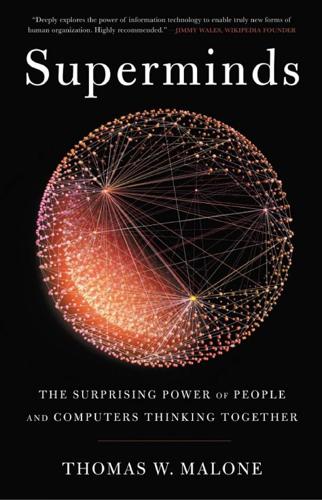
Superminds: The Surprising Power of People and Computers Thinking Together
by
Thomas W. Malone
Published 14 May 2018
In the great tradition of division of labor, this hyperspecialization pays off. Topcoder can often provide its clients with development work comparable in quality to what they would get through more traditional means, but at as little as 25 percent of the cost. Microtasks on Amazon Mechanical Turk Amazon’s Mechanical Turk service is an even more extreme example of hyperspecialization. It’s a kind of online labor market, but instead of finding people to do programming tasks that might take hours or days, Mechanical Turk finds people to do microtasks, which might take only a few minutes and earn them only a few pennies.
…
Jonathan Zittrain, “The Internet Creates a New Kind of Sweatshop,” Newsweek, December 7, 2009, http://www.newsweek.com/internet-creates-new-kind-sweatshop-75751; Fiona Graham, “Crowdsourcing Work: Labour on Demand or Digital Sweatshop?” BBC News, October 22, 2010, http://www.bbc.com/news/business-11600902; Ellen Cushing, “Amazon Mechanical Turk: The Digital Sweatshop,” Utne Reader, January/February 2013, http://www.utne.com/science-and-technology/amazon-mechanical-turk-zm0z13jfzlin. 5. Miranda Katz, “Amazon’s Turker Crowd Has Had Enough,” Wired, August 23, 2017, https://www.wired.com/story/amazons-turker-crowd-has-had-enough. 6. This comparison was suggested by David Nordfors, “The Untapped $140 Trillion Innovation for Jobs Market,” TechCrunch, February 21, 2015, https://techcrunch.com/2015/02/21/the-untapped-140-trillion-innovation-for-jobs-market. 7.
…
For instance, the CrowdForge system, developed by my friends Aniket Kittur, Robert Kraut, and their colleagues at Carnegie Mellon University, uses online workers to write documents like encyclopedia articles.7 We’ll call the online workers Turkers because they are recruited from an Amazon service called Mechanical Turk, which we’ll see in more detail later. The process begins with the system asking Turkers to come up with an outline for a document—say, an encyclopedia article about New York City. An outline for such an article might, for example, include sections for attractions, a brief history, and so forth (see the following chart).8 For each section in the outline, the system then asks other Turkers to find facts that might be relevant for that section.
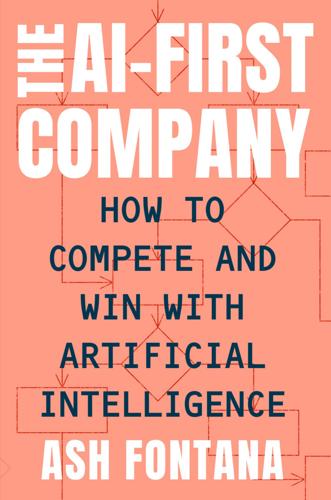
The AI-First Company
by
Ash Fontana
Published 4 May 2021
The cost of a labeling operation hinges on the number of labels required, along with the difficulty of acquiring them, the leverage gained through labeling tools, and the degree of expertise required to label. The cost can range from a few cents per label, using Amazon Mechanical Turk, to hundreds of dollars per label, using a doctor. Nonexpert labelers can be recruited from a variety of places, given the minimal experience required in the role. Classified ads or hourly work agencies are a good place to start. Another option could be to recruit directly from labor marketplaces such as Amazon Mechanical Turk or the freelancing platform Upwork. Expert labelers, on the other hand, will be recruited directly from their respective fields: for instance, radiologists from radiology clinics or loss adjusters from car insurance companies.
…
Finally, users have seen some causes of their effects: some output from their input. Best Practices for Building Data Labeling Operations Setting up a team to label data can be a core process advantage for an AI-First company. Before assembling a team, however, consider the large, platform-based solutions for labeling such as Amazon’s Mechanical Turk. These platforms have many workers, from all around the world, who are able to cope with highly elastic demands and can label data twenty-four hours per day. They also provide tools to assist workers so as to keep costs low and quality high. Management Individual labelers are hired depending on the required expertise, and the labeling team can be split between experts and nonexperts—the expert labelers having some experience in classifying the data on hand.
…
Experts with such special knowledge can be expensive to hire, so these labels cost more on a per-label basis. Nonexpert humans are employed to identify and label things that don’t require special knowledge, such as a chair or box. Nonexperts tend to be flexible in how they work and are available for hire on various platforms, the most well-known being Amazon’s Mechanical Turk. Machines can label things without help from us. The degree to which they can do that depends on the techniques used and the data to label. The first metric is labeling cost per unit of value. This is clear-cut when outsourcing labeling to a vendor—the cost is whatever the vendor bills—but less so when labelers are employed by customers, or staff software engineers pitch in to label data during the training step, or when something breaks.

Rage Inside the Machine: The Prejudice of Algorithms, and How to Stop the Internet Making Bigots of Us All
by
Robert Elliott Smith
Published 26 Jun 2019
But what happens when we can’t actually see what’s going on, much like the trick Vaucanson played on the public with the hidden guise of his Digesting Duck, or the fraud committed by von Kempelen with the chess master hidden inside his chess playing Turk? Without a hint of irony, in 2005 Amazon launched a crowdsourcing Internet marketplace called Amazon Mechanical Turk, the object of which is to crowdsource human intelligence to undertake micro-tasks that computers are currently unable to do. Amazon’s Mechanical Turk is a sort of post-irony imitation of its eighteenth-century predecessor. It is accessed through the Internet through an API (application programming interface), precisely as if its internal operations were those of Internet software.
…
Digital Labor: The Internet as Playground and Factory. New York: Routledge, https://ayhanaytes.files.wordpress.com/2014/06/returnofthecrowds_aytes.pdf 6Alana Semuels, 2018, The Internet Is Enabling a New Kind of Poorly Paid Hell. The Atlantic, www.theatlantic.com/business/archive/2018/01/amazon-mechanical-turk/551192/ 7Sarah Butler, 2017, How Deliveroo’s ‘Dark Kitchens’ Are Catering from Car Parks. Guardian, www.theguardian.com/business/2017/oct/28/deliveroo-dark-kitchens-pop-up-feeding-the-city-london 8John Harris, 2018, Are Dark Kitchens the Satanic Mills of Our Era? Guardian, www.theguardian.com/commentisfree/2018/oct/09/dark-kitchens-satanic-mills-deliveroo 9Kate Crawford and Vladan Joler, 2018, Anatomy of an AI System: The Amazon Echo as an Anatomical Map of Human Labor, Data and Planetary Resources.
…
Bernardi, 2001, The Controversy Over Animal Electricity in 18th-Century Italy: Galvani, Volta, and Others. Revue D’histoire des Sciences, 54: 53–70, www.edumed.org.br/cursos/neurociencia/controversy-bernardi.pdf INDEX abacus, abaci, here, here, here, here ACLU, here Albright, Jonathan, here Alexa. See Amazon’s Echo AlphaGo, here, here, here Amazon, here, here, here Amazon Mechanical Turk, here Amazon’s Echo, here American Eugenics Records Office, here American Study Group, here antibodies, here, here antigens, here, here Aristotle, here, here, here, here, here Arrow, Kenneth, here associationism, here, here astragalus, astragali, here, here, here automata, here, here, here, here Aytes, Ayhan, here Babbage, Charles, here, here, here, here, here, here, here, here, here, here, here Babbage Effect, here, here, here Babbage’s Engines, here, here, here, here, here, here, here, here Bacon, Francis, here Bayes, Thomas, here Bayesian inference, here Bayesian reasoning, here, here Bayes’ rule, here Bedford College for Women, here Bell Curve, here, here, here, here, here, here, here, here, here, here, here, here Bell Laboratories, here Bernoulli, Jacob, here, here Binet, Alfred, here, here, here binomial distribution, here black swans, here, here, here Blackwell, Antoinette Brown, here Bloomfield, Leonard, here Box, George, here, here, here Brexit, here, here, here, here brittleness, here, here, here, here, here, here Bryan, William Jennings, here Bryon, Lord, here, here Buolamwini, Joy, here Burks, Arthur, here Byron, Lord, here, here, here, here Cajal, Santiago Ramon y, here Cambridge Analytica, here, here Campbell, Joseph, here Cardano, Gerolamo, here, here, here, here, here Cardwell, Chris, here Carroll, Galen, here Cattell, Raymond, here Central Limit Theorem.
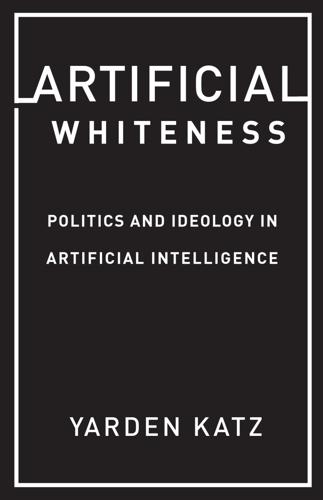
Artificial Whiteness
by
Yarden Katz
All these systems depend on the substantial human labor needed to assemble and curate training data, which is hidden from view; this being another way in which the appearance of universality is staged. Google’s Show and Tell, as we saw, was trained on hundreds of thousands of captioned images—but who provided the captions? Some image data sets that were used for training the system, such as Microsoft’s COCO, were captioned by workers on Amazon’s Mechanical Turk platform (AMT).36 Google researchers also used AMT workers in evaluating the image-captioning system by having them score the model-generated captions. From the universal-intelligence perspective, what matters is that the captions were produced or validated by some human. The identity of the viewer isn’t considered relevant, although it plainly shapes how images are seen: a photograph of a checkpoint in occupied Palestinian territories may well be perceived differently by a viewer in Ramallah compared with a viewer in London.
…
See Vicente Ordonez, Girish Kulkarni, and Tamara L. Berg, “Im2text: Describing Images Using 1 Million Captioned Photographs,” in Advances in Neural Information Processing Systems (Cambridge, Mass.: MIT Press, 2011), 1143–51. 37. Lilly Irani, “Difference and Dependence Among Digital Workers: The Case of Amazon Mechanical Turk,” South Atlantic Quarterly 114, no. 1 (2015): 225–34. 38. Irani, 228. 39. Vinyals et al., “Show and Tell.” 40. Xiaoliang Ling et al., “Model Ensemble for Click Prediction in Bing Search Ads,” in Proceedings of the 26th International Conference on World Wide Web Companion, 2017, 689–98. 41.
…
Immigrant Defense Project, Mijente, and National Immigration Project of the National Lawyers Guild. Who’s Behind ICE? The Tech and Data Companies Fueling Deportations. August 2018. INCITE!. The Revolution Will Not Be Funded: Beyond the Non-Profit Industrial Complex. Durham, N.C.: Duke University Press, 2017. Irani, Lilly. “Difference and Dependence Among Digital Workers: The Case of Amazon Mechanical Turk.” South Atlantic Quarterly 114, no. 1 (2015): 225–34. Jacobsen, Annie. The Pentagon’s Brain: An Uncensored History of DARPA, America’s Top-Secret Military Research Agency. Boston: Little, Brown, 2015. Jacobson, Matthew Frye. Whiteness of a Different Color. Cambridge, Mass.: Harvard University Press, 1999.

Everything Is Obvious: *Once You Know the Answer
by
Duncan J. Watts
Published 28 Mar 2011
colleague Winter Mason and I conducted a series of Web-based experiments in which subjects were paid at different rates to perform a variety of simple repetitive tasks, like placing a series of photographs of moving traffic into the correct temporal sequence, or uncovering words hidden in a rectangular grid of letters. All our participants were recruited from a website called Amazon’s Mechanical Turk, which Amazon launched in 2005 as a way to identify duplicate listings among its own inventory. Nowadays, Mechanical Turk is used by hundreds of businesses looking to “crowd-source” a wide range of tasks, from labeling objects in an image to characterizing the sentiment of a newspaper article or deciding which of two explanations is clearer. However, it is also an extremely effective way to recruit subjects for psychology experiments—much as psychologists have done over the years by posting flyers around college campuses—except that because workers (or “turkers”) are usually paid on the order of a few cents per task, it can be done for a fraction of the usual cost.21 In total, our experiments involved hundreds of participants who completed tens of thousands of tasks.
…
And BuzzFeed—a platform for launching “contagious media”—keeps track of hundreds of potential hits and only promotes those that are already generating enthusiastic responses from users.8 As creative as they are, these examples of crowdsourcing work best for media sites that already attract millions of visitors, and so automatically generate real-time information about what people like or don’t like. So if you’re not Bravo or Cheezburger or BuzzFeed—if you’re just some boring company that makes widgets or greeting cards or whatnot—how can you tap into the power of the crowd? Fortunately, crowdsourcing services like Amazon’s Mechanical Turk (which Winter Mason and I used to run our experiments on pay and performance that I discussed in Chapter 2) can also be used to perform fast and inexpensive market research. Unsure what to call your next book? Rather than tossing around ideas with your editor, you can run a quick poll on Mechanical Turk and get a thousand opinions in a matter of hours, for about $10—or better yet, have the “turkers” come up with the suggestions as well as voting on them.
…
Communication technologies, like e-mail, cell phones, and instant messaging now implicitly trace out social networks among billions of individuals, along with the flow of information among them. Online communities such as Facebook, Twitter, Wikipedia, and World of Warcraft facilitate interactions among people in ways that both promote new kinds of social activity and also record it. Crowdsourcing sites like Amazon’s Mechanical Turk are increasingly being used as “virtual labs” in which researchers can run psychological and behavioral experiments.12 And Web search, online media, and electronic commerce are generating ever-increasing insight into the intentions and actions of people everywhere. The capability to observe the actions and interactions of potentially billions of people presents some serious issues about the rights and privacy of individuals, and so we must proceed with caution.13 Nevertheless, these technologies also exhibit enormous scientific potential, allowing us for the first time in history to observe, in high fidelity, the real-time behavior of large groups, and even societies as a whole.

Designing Social Interfaces
by
Christian Crumlish
and
Erin Malone
Published 30 Sep 2009
. • Where appropriate, incorporate a mechanism for compensation for the participants (Figure 12-19). Download at WoweBook.Com Collaboration 329 Figure 12-19. Tasks for Amazon’s Mechanical Turk all come with price tags, so it’s easy to decide if you’re willing to do the work for the payment offered. Why Crowdsourcing breaks large jobs into pieces that can be tackled with a much lower commitment threshold, taking advantage of the loose ties in social networks. As seen on Amazon Mechanical Turk (http://www.mturk.com/mturk/welcome) Assignment Zero (http://zero.newassignment.net/) The ESP Game (http://www.cs.cmu.edu/~biglou/ESP.pdf) iStockphoto (http://istockphoto.com) ReCAPTCHA (http://recaptcha.net/) SETI@home (http://setiathome.ssl.berkeley.edu/) Threadless (http://threadless.com) Download at WoweBook.Com 330 Chapter 12: Barnraising Further Reading “Berners-Lee on the read/write web,” BBC News, August 9, 2005, http://news.bbc.co.uk/2/ hi/technology/4132752.stm Cross Cultural Collaboration, http://crossculturalcollaboration.pbwiki.com/ “Deriving Process-driven Collaborative Editing Pattern from Collaborative Learning Flow Patterns,” by Olivera Marjanovic, Hala Skaf-Molli, Pascal Molli, and Claude Godart, http://www.ifets.info/journals/10_1/12.pdf “Edit This Page,” by Dave Winer, http://www.scripting.com/davenet/1999/05/24/editThisPage.html Edit This Page PHP, http://sourceforge.net/projects/editthispagephp/ Paylancers blog, http://paylancers.blogspot.com/ The Power of Many, http://thepowerofmany.com Regulating Prominence: A Design Pattern for Co-Located Collaboration (http://www.ida.liu.se/~matar/coop04arvola-web.pdf) “The Rise of Crowdsourcing,” by Jeff Howe, Wired 14.06, http://www.wired.com/wired/archive/14.06/crowds.html “The Simplest Thing That Could Possibly Work,” by Bill Venners, http://www.artima.com/intv/simplest.html Universal Edit Button, http://universaleditbutton.org/Universal_Edit_Button Wiki Design Principles, http://c2.com/cgi/wiki?
…
The community will benefit if the interface provides a way to break a large project into smaller pieces and engage and give incentives to a wider group of people (or “crowd”) to tackle those smaller pieces (Figure 12-15). Download at WoweBook.Com 326 Chapter 12: Barnraising Figure 12-15. Amazon’s Mechanical Turk plays matchmaker to people looking for distributed help in solving problems or answering questions, and other people willing to do said work for a fee. Use when Use this pattern when you wish to enable your active core community members to engage with the wider set of people participating in your social environment and get their help accomplishing ambitious projects that would not be possible with fewer people.
…
How • Provide a method for splitting up a project into individual tasks so that each task may be advertised individually. Also, provide a venue for announcing crowdsourced projects. • Give community members a way to “shop for,” review, and claim individual tasks for the project (Figures 12-16, 12-17, and 12-18). Download at WoweBook.Com Collaboration 327 Figure 12-16. At Amazon’s Mechanical Turk, one can easily sign up and start reviewing human intelligence tasks (HITs) before deciding whether to do any of the work for the offered pay. Figure 12-17. When designing a t-shirt for Threadless, you can volunteer to have others critique your design for you, and then iterate the design based on the feedback.

The Corruption of Capitalism: Why Rentiers Thrive and Work Does Not Pay
by
Guy Standing
Published 13 Jul 2016
They also rely mainly on money wages, which are often inadequate, volatile and unpredictable.38 They lack access to rights-based state benefits and are losing civil, cultural, social, economic and political rights, making them supplicants if they need help to survive. The precariat is growing all over the world, accelerated by the likes of Uber, TaskRabbit and Amazon Mechanical Turk discussed in Chapter 6. It is in turmoil, reflected in the confusion over perceived class membership. For instance, more Americans today see themselves as in the lower classes. In 2000, according to Gallup polls, 63 per cent saw themselves as middle-class and 33 per cent as lower-class. In 2015, 51 per cent saw themselves as middle-class and 48 per cent as lower-class.
…
‘Crowdwork’ platforms also act as labour brokers, providing a digital labour exchange through which organisations (‘requesters’) post online tasks, split into small, sometimes micro tasks, which workers (‘taskers’) then bid for. The platforms charge 10 per cent or more per transaction. The pioneer in micro-tasking was Amazon Mechanical Turk (AMT), set up by Amazon in 2005, but there are now dozens of crowdwork platforms, among the biggest being Upwork, PeoplePerHour and CrowdFlower. Clickworker, based in Germany, boasts 700,000 ‘clickworkers’ in 136 countries and big-name clients such as Honda and PayPal. Lancers, a Japanese platform, had 420,000 registered workers in 2015 and the Japanese crowd-labour industry body aims to increase the number of crowdworkers to 10 million by 2018 and 20 million by 2023.6 The platforms have grown astonishingly rapidly.
…
* ‘The invisible precariat – We are breaking the silence’. INDEX A Mechanical Age 1 Abbott, Arnold 1 AET (Academy Enterprise Trust) 1 agnotology 1 Airbnb 1, 2, 3, 4, 5, 6, 7 Alaska Permanent Fund 1 Allergan 1 allotments 1 Alperovitz, Gar 1 Altman, Sam 1 Amazon 1, 2, 3, 4 American Medical Association 1, 2 Amey 1 AMT (Amazon Mechanical Turk) 1, 2 Apple 1, 2, 3, 4, 5, 6, 7, 8 Arab Spring 1, 2 ASBOs (Anti-Social Behaviour Orders) 1 ASMS (Association of Salaried Medical Specialists) 1 Astor, Lord 1 Atkinson, Tony 1, 2, 3 Atlas Network 1 Auboin, Roger 1 austerity 1, 2, 3, 4, 5, 6, 7, 8, 9, 10, 11 automation 1, 2 Axelrod, David 1 Bahramipour, Bob 1 ‘bailouts’ 1, 2 Baker, Howard 1 Baker, Philip 1 Ballmer, Steve 1 Banco Espírito Santo 1 Bank of America 1, 2 Bank of England 1, 2, 3, 4, 5, 6, 7, 8, 9 Bank of Japan 1 banking systems and austerity 1 ‘bailouts’ 1, 2 and British Disease 1 and debt 1, 2, 3, 4, 5 and democracy 1, 2, 3, 4, 5, 6, 7 and ‘helicopter money’ 1 independence of central banks 1, 2 quantitative easing 1, 2, 3, 4, 5, 6 and rise of rentiers 1 trade and investment treaties 1 Barclay, David 1 Barclay, Frederick 1 basic income systems 1 Bayh–Dole Act (1980) 1 BBC (British Broadcasting Corporation) 1, 2 Benyon, Richard 1 BEPS (base erosion and profit shifting) 1 Bernanke, Ben 1 Berne Convention for the Protection of Literary and Artistic Works (1886) 1, 2 Berners-Lee, Tim 1, 2 Bernstein, Michael 1 Beveridge, William 1 BIEN (Basic Income European (later ‘Earth’) Network) 1 Bieńkowska, Elżbieta 1 Biewald, Lukas 1 Big Bang (1986) 1 Bilderberg Group 1 Billionaires Report (2015) 1 BIS (Bank for International Settlements) 1 BITs (bilateral investment treaties) 1 BlaBlaCar 1 BlackRock 1 Blair, Cherie 1 Blair, Tony 1, 2, 3, 4, 5, 6, 7 BNP Paribas 1 Born This Way foundation 1 Boston Tea Party 1 Bourdieu, Pierre 1 branding 1 Bretton Woods system 1, 2, 3 ‘Brexit’ debate/campaign 1, 2 Bridgepoint Capital 1, 2 British Disease 1, 2 British Rail 1 Broadbent, Ben 1 Brown, Gordon 1, 2, 3, 4 Brzezinski, Zbigniew 1 Buffett, Warren 1, 2 ‘build-to-rent’ projects 1 Burke, Edmund 1 Burns, Arthur 1 bus services 1 Bush, George H.

Terms of Service: Social Media and the Price of Constant Connection
by
Jacob Silverman
Published 17 Mar 2015
Sept. 3, 2013. stanfordlawreview.org/online/privacy-and-big-data/big-data-small-hands. 219 Nandini Balial background and Rabbit experience: Author interviews with Nandini Balial. July and August 2014. 226 Mechanical Turk earnings: Jeremy Wilson. “My Grueling Day as an Amazon Mechanical Turk.” Kernel. Aug. 28, 2013. kernelmag.com/features/report/4732/my-gruelling-day-as-an-amazon-mechanical-turk. 228 “a cloud-computing cross”: Quentin Hardy. “Elance Pairs Hunt for Temp Work with Cloud Computing.” Bits, a blog on NYTimes.com. Sept. 24, 2013. bits.blogs.nytimes.com/2013/09/24/elance-pairs-hunt-for-temp-work-with-cloud-computing. 228 Mechanical Turk survey: Panos Ipeirotis.
…
Usually, a would-be worker signs up, enters some information, and allows the site to connect to her social-media profiles in order to confirm her identity. Jobs then start to come down the pipe—some services allow workers to bid for jobs, with the lowest price usually winning out—and the worker goes off and performs the task for a few cents or a few dollars. Amazon’s Mechanical Turk, with its optimistically named “Human Intelligence Tasks,” offers some of the most menial work: copying receipts, drawing triangles, mimicking facial expressions, clicking on random URLs—all of it presented with as little contextual/explanatory information as possible. A Mechanical Turk worker might be kept busy, he might even be mildly entertained, but he would be lucky to earn minimum wage.
…
Twitter’s fleet of Mechanical Turk workers are accomplishing much the same sleight of hand, providing the illusion of seamless, automated competency, concealing the fact that company is relying on cheap, remote labor. As Ayhan Aytes describes it, “In both cases, the performance of the workers who animate the artifice is obscured by the spectacle of the machine.” Amazon calls this “artificial artificial intelligence.” In an added dose of perverse irony, Twitter’s Mechanical Turk workers are, in all likelihood, helping to train the machine-learning algorithms that Twitter hopes will eventually replace them. As with a number of other menial tasks common to the micro-work field, the human is there to complete the smallest unit of work that can’t be done by a computer.
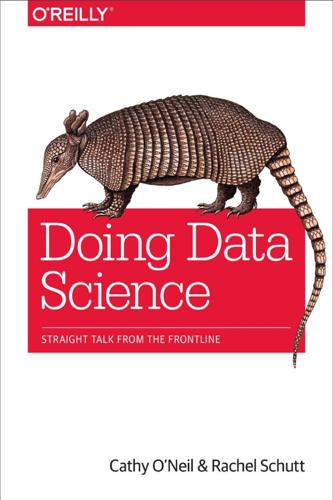
Doing Data Science: Straight Talk From the Frontline
by
Cathy O'Neil
and
Rachel Schutt
Published 8 Oct 2013
It is only under certain conditions (independence of the individuals rather than group-think where a group of people talking to each other can influence each other into wildly incorrect solutions), where groups of people can arrive at the correct solution. And only certain problems are well-suited to this approach. Amazon Mechanical Turk is an online crowdsourcing service where humans are given tasks. For example, there might be a set of images that need to be labeled as “happy” or “sad.” These labels could then be used as the basis of a training set for a supervised learning problem. An algorithm could then be trained on these human-labeled images to automatically label new images.
…
An algorithm could then be trained on these human-labeled images to automatically label new images. So the central idea of Mechanical Turk is to have humans do fairly routine tasks to help machines, with the goal of the machines then automating tasks to help the humans! Any researcher with a task they need automated can use Amazon Mechanical Turk as long as they provide compensation for the humans. And any human can sign up and be part of the crowdsourcing service, although there are some quality control issues—if the researcher realizes the human is just labeling every other image as “happy” and not actually looking at the images, then the human won’t be used anymore for labeling.
…
linear regression, Linear Regression–Exercise machine learning, Machine Learning Algorithms, Other Examples of MapReduce models vs., Linear Regression Allstate, Their Customers alternating k-stars, A Second Example of Random Graphs: The Exponential Random Graph Model alternating least squares, Alternating Least Squares Amazon, Why Now?, Amazon Case Study: Big Spenders recommendation engines and, Recommendation Engines: Building a User-Facing Data Product at Scale Amazon Mechanical Turk, Background: Crowdsourcing ambient analytics, Data Visualization at Square Amstat News, The Current Landscape (with a Little History) analytical applications Hadoop, So How to Get Started with Hadoop? MapReduce, So How to Get Started with Hadoop? Anderson, Chris, Modeling Apache Hive, Cloudera Apache Software Foundation, Cloudera APIs, warnings about, Scraping the Web: APIs and Other Tools area under the cumulative lift curve, Evaluation area under the curve (AUC), How to Be a Good Modeler goodness of, Research Experiment (Observational Medical Outcomes Partnership) Artificial Artificial Intelligence, Background: Crowdsourcing Artificial Intelligence (AI), Machine Learning Algorithms ASA, The Current Landscape (with a Little History) association algorithms, Being an Ethical Data Scientist associations, Linear Regression assumptions, Populations and Samples of Big Data explicit, Machine Learning Algorithms attributes, predicting, Beyond Nearest Neighbor: Machine Learning Classification autocorrelation, A Baby Model–A Baby Model automated statistician thought experiment, Thought Experiment: Automated Statistician averages, The Gold Standard: Randomized Clinical Trials Avro, Back to Josh: Workflow B backward elimination, Selecting an algorithm bagging, Random Forests base, The Dimensionality Problem base rates, The Underlying Math Basic Machine Learning Algorithm Exercise, Exercise: Basic Machine Learning Algorithms–Sample R code: K-NN on the housing dataset Bayesian Information Criterion (BIC), Selection criterion, Beyond Nearest Neighbor: Machine Learning Classification Beautiful Soup, Scraping the Web: APIs and Other Tools Before Us is the Salesman’s House (Thorp/Hansen), eBay Transactions and Books–eBay Transactions and Books Bell Labs, Exploratory Data Analysis Bernoulli model, Jake’s Exercise: Naive Bayes for Article Classification Bernoulli network, A First Example of Random Graphs: The Erdos-Renyi Model betweenness, Centrality Measures bias-variance, Random Forests biases, Populations and Samples, Populations and Samples of Big Data Big Data, Big Data and Data Science Hype, Why Now?

Machine, Platform, Crowd: Harnessing Our Digital Future
by
Andrew McAfee
and
Erik Brynjolfsson
Published 26 Jun 2017
Lakhani, “Marginality and Problem-Solving Effectiveness in Broadcast Search,” Organization Science, February 22, 2010, http://pubsonline.informs.org/doi/abs/10.1287/orsc.1090.0491. 260 Amazon’s Mechanical Turk: Jason Pontin, “Artificial Intelligence, with Help from the Humans,” New York Times, March 25, 2007, http://www.nytimes.com/2007/03/25/business/yourmoney/25Stream.html. 260 transcribing text from business cards into a spreadsheet: Jeremy Wilson, “My Gruelling Day as an Amazon Mechanical Turk,” Kernel, August 28, 2013, http://kernelmag.dailydot.com/features/report/4732/my-gruelling-day-as-an-amazon-mechanical-turk. 260 “programming design pattern”: Michael Bernstein et al., “Soylent: A Word Processor with a Crowd Inside,” 2010, http://courses.cse.tamu.edu/caverlee/csce438/readings/soylent.pdf. 260 people who identify as designers: Topcoder, “Topcoder Is Different,” accessed February 8, 2017, https://www.topcoder.com/member-onboarding/topcoder-is-different. 261 Kaggle: Kaggle, accessed March 10, 2017, https://www.kaggle.com. 261 officiating at a wedding: JamieV2014, “Task of the Week: Perform My Marriage,” TaskRabbit (blog), March 26, 2014, https://blog.taskrabbit.com/2014/03/26/task-of-the-week-perform-my-marriage. 261 delivering ice cream cake: LauraTaskRabbit, “Task of the Week: Deliver Ice Cream Cake to My Grandpa,” TaskRabbit (blog), November 18, 2014, https://blog.taskrabbit.com/2014/11/18/task-of-the-week-deliver-ice-cream-cake-to-my-grandpa. 261 waiting in line at the Apple Store: JamieV2014, “We’re First in Line at the Apple Store,” TaskRabbit (blog), September 17, 2012, https://blog.taskrabbit.com/2012/09/17/were-first-in-line-at-the-apple-store. 261 The TV show Veronica Mars: IMDb, s. v.
…
As we’ve seen with Wikipedia and Linux, the crowd can come together to build things of great value, especially if a set of principles like openness and noncredentialism is followed. Some organizations are putting these principles into practice in order to offer what might be called crowd construction as a service to companies. One of the earliest examples was Amazon’s Mechanical Turk, which started as an internal effort to find and eliminate duplicate product pages and was released for outside use in November 2005. Today, the crowd of “Turkers” is used for a wide variety of tasks, such as transcribing text from business cards into a spreadsheet, answering surveys for psychology research, and labeling images for input into AI programs.
…
Acton, Brian, 140 additive manufacturing, 107; See also 3D printing Adore Me, 62 adults, language learning by, 68–69 advertising content platforms and, 139 data-driven decision making for, 48, 50–51 Facebook and, 8–9 radio airplay as, 148 advertising agencies, 48 advertising revenue Android as means of increasing, 166 Craigslist’s effect on, 139 free apps and, 162 print media and, 130, 132, 139 African Americans identifying gifted students, 40 and search engine bias, 51–52 aggregators, 139–40 AGI (artificial general intelligence), 71 agriculture automated milking systems, 101 drones and, 99–100 “food computers,” 272 machine learning and, 79–80 robotics and, 101–2 Airbnb future of, 319–20 hotel experience vs., 222–23 lack of assets owned by, 6–7 limits to effects on hotel industry, 221–23 network effects, 193 as O2O platform, 186 peer reviews, 209–10 rapid growth of, 9 as two-sided network, 214 value proposition compared to Uber, 222 Airline Deregulation Act, 181n airlines, revenue management by, 181–82 air travel, virtualization in, 89 Akerlof, George, 207, 210 albums, recorded music, 145 algorithms; See also data-driven decision making bias in systems, 51–53 and Cambrian Explosion of robotics, 95–96 comparing human decisions to, 56 O2O platforms and, 193 Quantopian and, 267–70 superiority to System 1 reasoning, 38–41 “algo traders,” 268; See also automated investing Alibaba, 6–8 Alipay, 174 AlphaGo, 4–6, 14, 74, 80 Alter, Lloyd, 90 Amazon automatic price changes, 47 bar code reader app, 162 data-driven product recommendations, 47 development of Web Services, 142–43 Mechanical Turk, 260 as stack, 295 warehouse robotics, 103 Amazon EC2, 143 Amazon Go, 90–91 Amazon S3, 143 Amazon Web Services (AWS), 75, 142–43 American Airlines (AA), 182 amino acid creation, 271–72 analog copies, digital copies vs., 136 “Anatomy of a Large-Scale Hypertextual Web Search Engine, The” (Page and Brin), 233 Anderson, Chris, 98–100 Anderson, Tim, 94 Andreessen, Marc on crowdfunding, 262–63 and Netscape, 34 as self-described “solutionist,” 297 on Teespring, 263–64 Android Blackberry vs., 168 contribution to Google revenue/profits, 204 iOS vs., 166–67 Angry Birds, 159–61 anonymity, digital currency and, 279–80 Antikythera mechanism, 66 APIs (application programming interfaces), 79 apophenia, 44n apparel, 186–88 Apple; See also iPhone acquiring innovation by acquiring companies, 265 and industrywide smartphone profits, 204 leveraging of platforms by, 331 Postmates and, 173, 185 profitability (2015), 204 revenue from paid apps, 164 “Rip, Mix, Burn” slogan, 144n as stack, 295 application programming interfaces (APIs), 79 AppNexus, 139 apps; See also platforms for banking, 89–90 demand curve and, 157–61 iPhone, 151–53 App Store, 158 Apter, Zach, 183 Aral, Sinan, 33 Archilochus, 60–61 architecture, computer-designed, 118 Aristophanes, 200 Arnaout, Ramy, 253 Arthur, Brian, 47–48 artificial general intelligence (AGI), 71 artificial hands, 272–75 artificial intelligence; See also machine learning current state of, 74–76 defined, 67 early attempts, 67–74 implications for future, 329–30 rule-based, 69–72 statistical pattern recognition and, 72–74 Art of Thinking Clearly, The (Dobelli), 43 arts, digital creativity in, 117–18 Ashenfelter, Orley, 38–39 ASICs (application-specific integrated circuits), 287 assets and incentives, 316 leveraging with O2O platforms, 196–97 replacement by platforms, 6–10 asymmetries of information, 206–10 asymptoting, 96 Atkeson, Andrew, 21 ATMs, 89 AT&T, 96, 130 August (smart door lock), 163 Austin, Texas, 223 Australia, 100 Authorize.Net, 171 Autodesk, 114–16, 119, 120 automated investing, 266–70 automation, effect on employment/wages, 332–33 automobiles, See cars Autor, David, 72, 101 background checks, 208, 209 back-office work, 82–83 BackRub, 233 Baidu, 192 Bakos, Yannis, 147n Bakunin, Mikhail, 278 Ballmer, Steve, 151–52 bandwagon effect, 217 banking, virtualization and, 89–90, 92 Bank of England, 280n bank tellers, 92 Barksdale, Jim, 145–46 barriers to entry, 96, 220 Bass, Carl, 106–7, 119–20 B2B (business-to-business) services, 188–90 Beastmode 2.0 Royale Chukkah, 290 Behance, 261 behavioral economics, 35, 43 Bell, Kristen, 261, 262 Benioff, Mark, 84–85 Benjamin, Robert, 311 Benson, Buster, 43–44 Berlin, Isiah, 60n Berners-Lee, Tim, 33, 34n, 138, 233 Bernstein, Michael, 260 Bertsimas, Dimitris, 39 Bezos, Jeff, 132, 142 bias of Airbnb hosts, 209–10 in algorithmic systems, 51–53 digital design’s freedom from, 116 management’s need to acknowledge, 323–24 and second-machine-age companies, 325 big data and Cambrian Explosion of robotics, 95 and credit scores, 46 and machine learning, 75–76 biology, computational, 116–17 Bird, Andrew, 121 Bitcoin, 279–88 China’s dominance of mining, 306–7 failure mode of, 317 fluctuation of value, 288 ledger for, 280–87 as model for larger economy, 296–97 recent troubles with, 305–7 and solutionism, 297 “Bitcoin: A Peer-to-Peer Electronic Cash System” (Nakamoto), 279 BlaBlaCar, 190–91, 197, 208 BlackBerry, 168, 203 Blitstein, Ryan, 117 blockchain as challenge to stacks, 298 and contracts, 291–95 development and deployment, 283–87 failure of, 317 and solutionism, 297 value as ledger beyond Bitcoin, 288–91 Blockchain Revolution (Tapscott and Tapscott), 298 Bloomberg Markets, 267 BMO Capital Markets, 204n Bobadilla-Suarez, Sebastian, 58n–59n Bock, Laszlo, 56–58 bonds, 131, 134 bonuses, credit card, 216 Bordeaux wines, 38–39 Boudreau, Kevin, 252–54 Bowie, David, 131, 134, 148 Bowie bonds, 131, 134 brand building, 210–11 Brat, Ilan, 12 Bredeche, Jean, 267 Brin, Sergey, 233 Broward County, Florida, 40 Brown, Joshua, 81–82 Brusson, Nicolas, 190 Burr, Donald, 177 Bush, Vannevar, 33 business conference venues, 189 Business Insider, 179 business processes, robotics and, 88–89 business process reengineering, 32–35 business travelers, lodging needs of, 222–23 Busque, Leah, 265 Buterin, Vitalik, 304–5 Byrne, Patrick, 290 Cairncross, Francis, 137 California, 208; See also specific cities Calo, Ryan, 52 Cambrian Explosion, 94–98 Cameron, Oliver, 324 Camp, Garrett, 200 capacity, perishing inventory and, 181 Card, David, 40 Care.com, 261 cars automated race car design, 114–16 autonomous, 17, 81–82 decline in ownership of, 197 cash, Bitcoin as equivalent to, 279 Casio QV-10 digital camera, 131 Caves, Richard, 23 Caviar, 186 CDs (compact discs), 145 cell phones, 129–30, 134–35; See also iPhone; smartphones Census Bureau, US, 42 central bankers, 305 centrally planned economies, 235–37 Chabris, Chris, 3 Chambers, Ephraim, 246 Champy, James, 32, 34–35, 37, 59 Chandler, Alfred, 309n Chase, 162 Chase Paymentech, 171 check-deposit app, 162 children, language learning by, 67–69 China Alibaba in, 7–8 concentration of Bitcoin wealth in, 306–7 and failure mode of Bitcoin, 317 mobile O2O platforms, 191–92 online payment service problems, 172 robotics in restaurants, 93 Shanghai Tower design, 118 Xiaomi, 203 Chipotle, 185 Choudary, Sangeet, 148 Christensen, Clay, 22, 264 Churchill, Winston, 301 Civil Aeronautics Board, US, 181n Civis Analytics, 50–51 Clash of Clans, 218 classified advertising revenue, 130, 132, 139 ClassPass, 205, 210 and economics of perishing inventory, 180–81 future of, 319–20 and problems with Unlimited offerings, 178–80, 184 and revenue management, 181–84 user experience, 211 ClassPass Unlimited, 178–79 Clear Channel, 135 clinical prediction, 41 Clinton, Hillary, 51 clothing, 186–88 cloud computing AI research, 75 APIs and, 79 Cambrian Explosion of robotics, 96–97 platform business, 195–96 coaches, 122–23, 334 Coase, Ronald, 309–13 cognitive biases, 43–46; See also bias Cohen, Steven, 270 Coles, John, 273–74 Collison, John, 171 Collison, Patrick, 171–74 Colton, Simon, 117 Columbia Record Club, 131 commoditization, 220–21 common sense, 54–55, 71, 81 companies continued dominance of, 311–12 continued relevance of, 301–27 DAO as alternative to, 301–5 decreasing life spans of, 330 economics of, 309–12 future of, 319–26 leading past the standard partnership, 323–26 management’s importance in, 320–23 markets vs., 310–11 as response to inherent incompleteness of contracts, 314–17 solutionism’s alternatives to, 297–99 TCE and, 312–15 and technologies of disruption, 307–9 Compass Fund, 267 complements (complementary goods) defined, 156 effect on supply/demand curves, 157–60 free, perfect, instant, 160–63 as key to successful platforms, 169 and open platforms, 164 platforms and, 151–68 and revenue management, 183–84 Stripe and, 173 complexity theory, 237 Composite Fund (D.
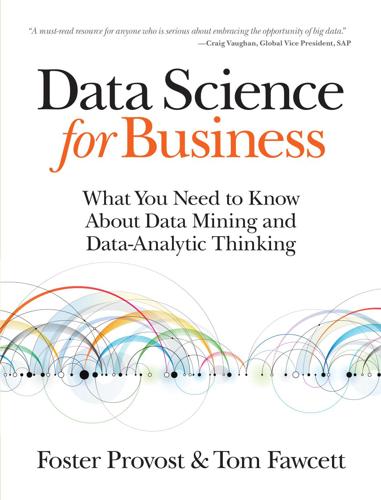
Data Science for Business: What You Need to Know About Data Mining and Data-Analytic Thinking
by
Foster Provost
and
Tom Fawcett
Published 30 Jun 2013
Cloud labor changes the economics of investing in data in our example of getting labeled training data. We can engage very inexpensive labor via the Internet to invest in data in various ways. For example, we can have workers on Amazon Mechanical Turk label pages as objectionable or not, providing us with target labels, much more cheaply than hiring even student workers. The rate of completion, when done by a trained intern, was 250 websites per hour, at a cost of $15/hr. When posted on Amazon Mechanical Turk, the labeling rate went up to 2,500 websites per hour and the overall cost remained the same. (Ipeirotis et al., 2010) The problem is that you get what you pay for, and low cost sometimes means low quality.
…
If we apply our general framework of considering the costs and benefits in data science projects explicitly, it leads us to new thinking about investing in data. Final Example: From Crowd-Sourcing to Cloud-Sourcing The connectivity between businesses and “consumers” brought about by the Internet has changed the economics of labor. Web-based systems like Amazon’s Mechanical Turk and oDesk (among others) facilitate a type of crowd-sourcing that might be called “cloud labor”—harnessing via the Internet a vast pool of independent contractors. One sort of cloud labor that is particularly relevant to data science is “micro-outsourcing”: the outsourcing of large numbers of very small, well-defined tasks.
…
Network-based marketing: Identifying likely adopters via consumer networks. Statistical Science, 21 (2), 256–276. Holte, R. C. (1993). Very simple classification rules perform well on most commonly used datasets. Machine Learning, 11, 63–91. Ipeirotis, P., Provost, F., & Wang, J. (2010). Quality management on Amazon Mechanical Turk. In Proceedings of the 2010 ACM SIGKDD Workshop on Human Computation, pp. 64-67. ACM. Jackson, M. (1989). Michael Jackson’s Malt Whisky Companion: a Connoisseur’s Guide to the Malt Whiskies of Scotland. Dorling Kindersley, London. Japkowicz, N., & Stephen, S. (2002). The class imbalance problem: A systematic study.

Thinking Machines: The Inside Story of Artificial Intelligence and Our Race to Build the Future
by
Luke Dormehl
Published 10 Aug 2016
story_id=7001738 22 Chen, Edwin, ‘Improving Twitter Search with Real-Time Human Computation’, 8 January 2013: blog.echen.me/2013/01/08/improving-twitter-search-with-real-time-human-computation/ 23 forums.aws.amazon.com/thread.jspa?threadID=58891 24 Cushing, Ellen, ‘Amazon Mechanical Turk: The Digital Sweatshop’, East Bay Express, Jan/Feb 2013: utne.com/science-and-technology/amazon-mechanical-turk-zm0z13jfzlin.aspx 25 Conley, Neil and Braegelmann, Tom, ‘Decision of the German Federal Supreme Court no. I ZR 112/06’, Journal of the Copyright Society, Vol. 56, 2009: http://papers.ssrn.com/sol3/papers.cfm?abstract_id=1504982 26 Lanier, Jaron, Who Owns the Future?
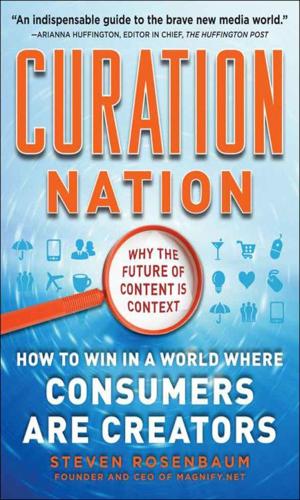
Curation Nation
by
Rosenbaum, Steven
Published 27 Jan 2011
The need to access human skills on demand was what convinced the folks at Amazon to create a service known as Mechanical Turk. The name Mechanical Turk is based on a “robot” that dates back to 1769, when a nobleman astonished Europe by building a mechanical chess-playing automaton that was able to beat human opponents. The Turk toured Europe and overcame brilliant challengers such as Benjamin Franklin and Napoleon Bonaparte. The secret behind the Mechanical Turk was a human chess master cleverly concealed inside the cabinet. It was a trick. Today Amazon’s Mechanical Turk is founded on the premise that there are still many things that human beings can do that computers can’t.
…
Many of those interviews were conducted in person, and rather than take notes, the conversations were recorded and then transcribed. The rest of the interviews were conducted via Skype, and those too were transcribed. In both cases the transcriptions were turned around almost magically by a team of online workers known as Turkers, who are members of an Amazon service called Mechanical Turk. I talk more about Mechanical Turk in chapter 6, so I won’t repeat the details here. Suffice it to say that the ability to have a Skype interview at 5 p.m. and have a transcript in your in box at 9 a.m. the next morning is for this author an awe-inspiring experience. The world moves quickly now.
…
dailyfinance.com, April 13, 2010. http://www.dailyfinance.com/story/who-knows-you-better-your-credit-card-company-or-your-spouse/19436105 Conclusion http://www.comscore.com INDEX About.com Abrams, Dan Abrams, Floyd Abu Dhabi Media Accidental curation Acheson, Lila Bell Addis, Steve Addis/Creson AdSense Advertising AdSense fees affiliated marketing changes in consumer conversations and on curated networks micronets and nature of commerce and sponsorships trends in (See also Brands and branding) Advertising Age Adweek Affiliated marketing Affiliate Summit Aggregation balance of power and criticism of curation versus Flipboard multimedia reaggregation video aggregators All Things Digital Alvey, Brian Amazon Mechanical Turk American Association of Museums Anderson, Chris AOL Armstrong, Tim Arora, Samir Arrington, Michael Artist Direct Associated Content Associated Press Atari AT&T AVC.Blogspot.com Avid editing equipment Axel Springer Baer, Jay Baltimore Museum of Art Bankoff, Jim Barnett, Rob BBC Beckland, Jamie Berra, Yogi Bhargava, Rohit Bicycling magazine Big Apple Circus Biondi, Frank Bionic journalism Bit.ly BitTorrent Blau, Andrew Blippy Blip.tv Blogger.com Blogging BlogHer Blogmaverick.com Bloomberg Company Blurry-edged privacy Boing Boing Bough, Bonin Boyle, Susan Brands and branding adaptation in changes in consumer conversations and content creation and content strategy and public relations in.
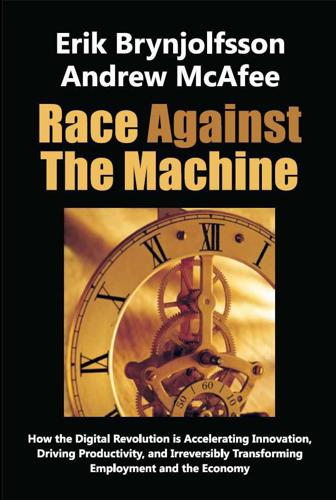
Race Against the Machine: How the Digital Revolution Is Accelerating Innovation, Driving Productivity, and Irreversibly Transforming Employment and the Economy
by
Erik Brynjolfsson
Published 23 Jan 2012
The Long Tail of new products offered enormous consumer value and is a rapidly growing segment of the economy. Apple’s App Store and Google’s Android Marketplace make it easy for people with ideas for mobile applications to create and distribute them. Threadless lets people create and sell designs for t-shirts. Amazon’s Mechanical Turk makes it easy to find cheap labor to do a breathtaking array of simple, well-defined tasks. Kickstarter flips this model on its head and helps designers and creative artists find sponsors for their projects. Heartland Robotics provides cheap robots-in-a-box that make it possible for small business people to quickly set up their own highly automated factory, dramatically reducing the costs and increasing the flexibility of manufacturing.
…
Tying health care and other mandated benefits to jobs makes it harder for people to move to new jobs or to quit and start new businesses. For instance, many a potential entrepreneur has been blocked by the need to maintain health insurance. Denmark and the Netherlands have led the way here. 15. Don’t rush to regulate new network businesses. Some observers feel that “crowdsourcing” businesses like Amazon’s Mechanical Turk exploit their members, who should therefore be better protected. However, especially in this early, experimental period, the developers of these innovative platforms should be given maximum freedom to innovate and experiment, and their members’ freely made decisions to participate should be honored, not overturned. 16.
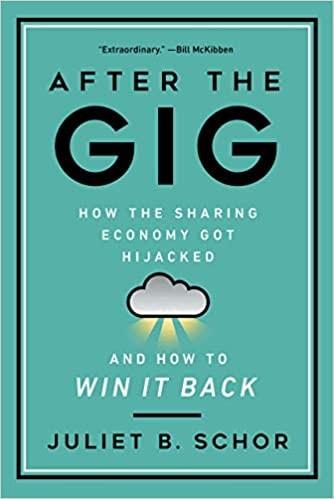
After the Gig: How the Sharing Economy Got Hijacked and How to Win It Back
by
Juliet Schor
,
William Attwood-Charles
and
Mehmet Cansoy
Published 15 Mar 2020
We exclude B2C and B2B platforms because company ownership of goods obviates the sharing dimension. Zipcar, however, which owns the cars it rents, is often considered a pioneering sharing economy company. There is also the difference between offline and online work. Digital labor on platforms such as Amazon Mechanical Turk or Upwork is generally not included in the “sharing economy” but is termed crowdwork or microwork. In 2016 the Census Bureau provided the first official definition of the sector, using the term digital matching firms. It identified four characteristics: (1) the use of information technology to facilitate peer-to-peer transactions, (2) the use of ratings systems, (3) flexibility for workers to choose hours, and (4) worker-provided tools and assets necessary to do the job (Telles 2016).
…
Forde et al. (2017) and Pesole, Brancati, and Fernandez-Macias (2018) both found a similar percentage of dependent workers as we did—25 percent and 24 percent respectively, using the definition of earning 50 percent or more of income from platform work. The former surveyed only microworkers (on platforms such as Amazon Mechanical Turk and Crowdflower) and the latter included both microworkers and offline service providers. Forde et al. did latent class analyses of the three groups and found significant differences among them, especially on income. Similar results were found by Broughton et al. (2018) for the U.K. An International Labour Organization study on crowdwork finds that it is a “main source of income” for only 32 percent of respondents.

The Sharing Economy: The End of Employment and the Rise of Crowd-Based Capitalism
by
Arun Sundararajan
Published 12 May 2016
Today, smaller and smaller tasks can increasingly be outsourced with minimal transaction costs to crowds of workers connected to digital platforms. An early example of this form of “taskification” can be seen in the popular Amazon’s Mechanical Turk, which connects millions of workers around the world to customers who have broken down projects into simple tasks with compensation ranging from a few pennies to a couple of dollars. One might wonder if a platform like Amazon’s Mechanical Turk, which seems to be, like Spare5, largely used for simple tasks like image tagging and survey responses, can make a dent in how the vast majority of the economy’s productive work is done.
…
An especially compelling example comes from a recent prototype, built by Devin Fidler of the Institute of the Future, called iCEO, “a virtual management system that automates complex work by dividing it into small, individual tasks.”24 Fidler’s system demonstrates how the complex work we typically associate with senior managers can be instead done by software that parcels tasks to workers on oDesk, Elance, and Amazon’s Mechanical Turk workers. For example, iCEO was given the project of creating a 124-page research report for a Fortune 50 client. As Fidler describes it: We spent a few hours plugging in the parameters of the project, i.e. structuring the flow of tasks, then hit play. For instance, to create an in-depth assessment of how graphene is produced, iCEO asked workers on Amazon’s Mechanical Turk to curate a list of articles on the topic. After duplicates were removed, the list of articles was passed on to a pool of technical analysts from oDesk, who extracted and arranged the articles’ key insights.
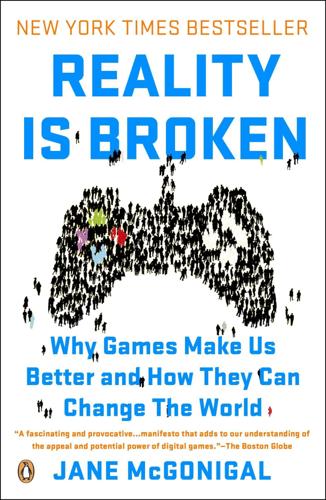
Reality Is Broken: Why Games Make Us Better and How They Can Change the World
by
Jane McGonigal
Published 20 Jan 2011
By my own back-of-the-envelope estimate, there are currently more than 200 million public requests for crowd participation on the Internet, across thousands of different networks, ranging from citizen journalism, citizen science, and open government to peer-to-peer advice, social networking, and open innovation. This estimate factors in, for example, more than 1 million public social networks created on Ning, more than 100,000 wikis on Wikia, more than 100,000 crowdsourcing projects on Amazon’s Mechanical Turk, at least 20,000 videos awaiting transcription and translation on DotSUB, as well as myriad smaller clusters of open collaboration, such as the more than 3,300 public “idea spaces” for proposing and developing innovative ideas on IBM Lotus’ IdeaJam and more than 14,000 on Dell’s IdeaStorm.
…
There’s no shortage of world-changing collective work to be done—so we can’t allow ourselves to be limited by a shortage of incentive or compensation. Many crowdsourcing projects today are experimenting with micropayments, or small amounts of monetary reward, in return for contributions. The Amazon Mechanical Turk marketplace, which gives businesses access to a global virtual workforce, pays participants a few cents for each helpful contribution to a human intelligence task, or HIT—a cognitive task “that only a human, and not a computer, could do” (such as labeling images, characterizing the emotional quality of song lyrics, or describing the action in short videos).
…
Bungie.net, accessed May 1, 2010. http://www.bungie.net/Inside/jobs.aspx. CHAPTER 12 1 “Epic Win.” Urban Dictionary entry. http://www.urbandictionary.com/define.php?term=epic%20win. 2 Twitter replies to @avantgame from @tobybarnes, @changeist, and @incobalt, on November 4, 2009. 3 Many of The Extraordinaries’ microvolunteer missions are more like Amazon Mechanical Turk-style human intelligence tasks—labeling, tagging, and sorting digital objects for museums, scientists, and government agencies, for example. This is important, but it doesn’t represent the epic win. In phone conversations with the founders of the project in early 2010, I learned that the company aims to focus on developing more real-world, mobile missions and rely less on online human intelligence tasks. 4 “Chat with an Extraordinary: Nathan Hand of Christel House.”

To Save Everything, Click Here: The Folly of Technological Solutionism
by
Evgeny Morozov
Published 15 Nov 2013
Well, this exception is no more: BinCam, a new project from researchers in Britain and Germany, seeks to modernize how we deal with trash by making our bins smarter and—you guessed it—more social. Here is how it works: The bin’s inside lid is equipped with a tiny smartphone that snaps a photo every time someone closes it—all of this, of course, in order to document what exactly you have just thrown away. A team of badly paid humans, recruited through Amazon’s Mechanical Turk system, then evaluates each photo. What is the total number of items in the picture? How many of them are recyclable? How many are food items? After this data is attached to the photo, it’s uploaded to the bin owner’s Facebook account, where it can also be shared with other users. Once such smart bins are installed in multiple households, BinCam creators hope, Facebook can be used to turn recycling into a game-like exciting competition.
…
Take the fake novelty of a term like “crowdsourcing”—supposedly, one of the chief attributes of the Internet era, an idea that gave us that great source of didactic knowledge, Wikipedia. “Crowdsourcing” is certainly a very effective term; calling some of the practices it enables as “digitally distributed sweatshop labor”—for this seems like a much better description of what’s happening on crowdsource-for-money platforms like Amazon’s Mechanical Turk—wouldn’t accomplish half as much. But effective euphemisms come with trade-offs; they don’t always capture the historical complexity of the processes they purport to describe. Didn’t the British government turn to “crowdsourcing”—in 1714!—to solve the “longitude problem” and solicit proposals for how to better navigate at sea?
…
Britney Spears is a public figure, and the controversy here seems moot at best. But suppose that an enemy of yours, in a deliberate effort to smear your reputation, starts paying users to search for your name followed by the word “pedophile.” An army of eager contributors, recruited through sites like Craigslist and Amazon’s Mechanical Turk, are now generating enough search volume to make this new query replace a few other, more positive terms associated with your name. Now, everyone who searches for your name is also informed that you might be a pedophile—and, remember, you have no way to appeal, for Google’s algorithms are in charge, and they never get things wrong.
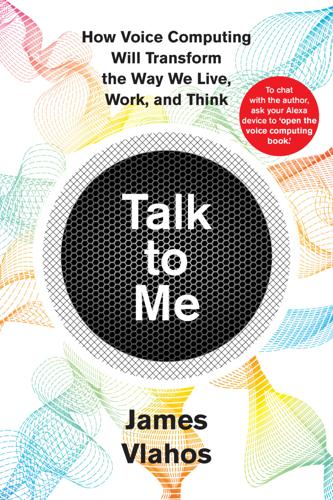
Talk to Me: How Voice Computing Will Transform the Way We Live, Work, and Think
by
James Vlahos
Published 1 Mar 2019
This part of the system began with work that took place off-line from the contest socialbot. Serban and his teammates took several thousand sample user utterances and supplied four possible things that the socialbot could say in response to each one. MILA then had human workers, recruited online via Amazon Mechanical Turk, rank the quality of each potential response from one to five. How appropriate, interesting, and engaging was it? These ratings, in turn, were used to train a neural network in hopes that it would ultimately learn to emulate the humans in their ability to evaluate just what made for a good conversational response.
…
See also Alexa; Alexa Prize competition advertising and, 233, 282–83 ASR and, 41–43, 97 at CES, xv, xvi eavesdropping and, 227–28, 230, 232, 233–34 Fire Phone, 44 founding of, 39 knowledge graphs and, 205 Lab126, 41, 42, 44, 140 partnerships with, 213 platform war and, 7–9, 278–85 SEO and, 209 shopping at, 209, 283–84 voice revolution and platform development, 7, 8–9, 13, 40–45 youth market and, 235 Amazon Echo. See also Alexa; Alexa Prize competition Evi and, 204, 213 Google Home release and, 54 privacy and surveillance and, 222–24, 238 release of, 8, 44–45, 50, 280 sales of, 282 voice search using, 209 Amazon Echo Dot, 226, 282 Amazon Echo Show, 58 Amazon Mechanical Turk, 151 ambient computing, 5 American Psychological Association, 249 Anagram Genius, 198–99 Android operating system and devices, 24, 203 Apple. See also iPhone; Siri ASR and, 98 eavesdropping and, 225, 227, 230, 231 knowledge graphs and, 205 mobile computing and, 3 smart home devices and, 50, 213, 218, 280 virtual assistant development, 16–18, 27, 118 voice revolution and platform development, 7, 8–9, 40, 280–81 Aquinas, Thomas, 65 Aristo, 162–63 Arkin, Ronald, 240 Arkush, Anne, 268 ARPANET, 78 artificial intelligence (AI).
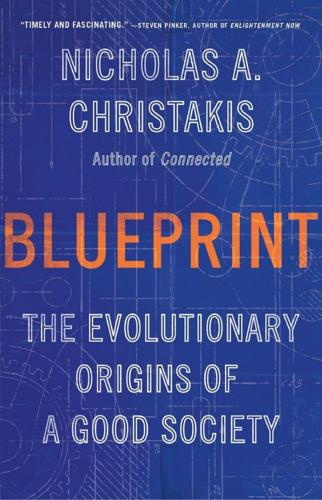
Blueprint: The Evolutionary Origins of a Good Society
by
Nicholas A. Christakis
Published 26 Mar 2019
Having solved its own problem, Amazon started allowing other employers, for a fee, to use the platform to hire workers, turning its invention into a profit center. The service was named Amazon Mechanical Turk, after a chess-playing machine first shown at the Austrian imperial court in the eighteenth century. That machine featured a mechanical man made of wood and wearing a turban, ostensibly driven by clockwork, who could play chess. The automaton was a hoax. It was actually controlled by a chess master of very short stature hidden inside, a human player good enough to beat Napoleon Bonaparte and Benjamin Franklin when they played against him, to their astonishment.1 The Amazon Mechanical Turk system is similar in that it emulates a machine even though, in actuality, humans are under the hood.
…
About twenty thousand people are active at any given time, earning about six dollars per hour performing dozens of tiny chores that typically take a few minutes each. For instance, using this platform, one firm hired fifty thousand people to label the content of fourteen million images in order to create a database to train computers in image recognition.2 After the humans did their work, the real machines could take over. Amazon Mechanical Turk and other crowdsourcing platforms introduced in the past decade have revolutionized science as well as business. Scientists use these platforms to code data (like galaxies in astronomical images, proteins in biochemical images, or ancient ruins beneath jungles in satellite photographs), conduct marketing and scientific surveys, and get subjects for social science experiments.

The Alignment Problem: Machine Learning and Human Values
by
Brian Christian
Published 5 Oct 2020
You couldn’t train a network unless you knew what the network’s output was supposed to be. In 2005, Amazon launched its “Mechanical Turk” service, allowing for the recruiting of human labor on a large scale, making it possible to hire thousands of people to perform simple actions for pennies a click. (The service was particularly well suited to the kinds of things that future AI is thought to be able to do—hence its tagline: artificial artificial intelligence.) In 2007, Princeton professor Fei-Fei Li used Amazon Mechanical Turk to recruit human labor, at a scale previously unimaginable, to build a dataset that was previously impossible.
…
Said another way, they were adjusted so that neither term was represented in the model as more “gender-specific” or more “gender-neutral” than the other. Was this new, debiased model an improvement? The team took a methodological page from the social sciences and simply asked people. They used American workers on the Amazon Mechanical Turk platform to categorize a number of the model’s analogies as either “stereotypes” or not. Even here, the input of the sociologists was critical. The wording of exactly what they asked was going to be important. “We had to talk to them because when we were designing these experiments on Mechanical Turk, the way you ask questions makes a difference, actually,” says Bolukbasi.
…
See Arcade Learning Environment Alexander, Robert McNeill, 382n13 Alexnder VIII (Pope), 303 AlexNet brittleness of, 279 complexity of, 100 development of, 21, 23–25 dropout and, 24, 285, 389n21 ensembles and, 285 feature visualization and, 108, 109–10 ground truth gaps and, 75 algorithms, for risk assessment, 7–9, 12, 337n6, 346n13 alignment problem amplification/distillation and, 249 analogies and, 317 corrigibility and, 295 defined, 13 as hopeful, 327–28 inverse reinforcement learning and, 255 parenting and, 166 reinforcement learning and, 151 technical limitations and, 313, 395–96n4 thermostats and, 311–12, 313 See also value alignment Allen, Woody, 170 AlphaGo, 162–63, 243–44, 380nn84–85 AlphaGoZero, 162–63, 244–45, 356n59, 380n86 AlphaZero, 141, 162–63, 205, 248, 380n86 Alstrøm, Preben, 167, 177 ALVINN, 225–26, 228, 229–30, 378n47 Amazon hiring by, 40, 48, 343nn76–77 Mechanical Turk, 22, 43, 75, 179, 369n73 Ambrosino, Richard, 83, 84 Amodei, Dario, 9–11, 263–64 Ampère, André-Marie, 359n19 amplification, 244–46, 381n90 analogies, 38, 41–42, 316–17, 342n66, 397n13 Andre, David, 167, 177 Angwin, Julia, 7–8, 58–61, 62–63, 72, 79 Animal Behavior Enterprises, 154, 161, 364n8 animal research, 121–24, 134, 135, 150, 152–54 animal training, 152, 154, 161, 187–88, 364n8, 365n26 antidiscrimination law, 63–64 Ape and the Child, The (Kellogg and Kellogg), 214–15 Apple, differential privacy, 347n33 Arcade Learning Environment (ALE), 181–83, 209, 369n4 architecture, 18 Arendt, Hannah, 121, 326 Armstrong, Stuart, 291–92, 299 artificial general intelligence (AGI), 208–10 boat race scenario and, 9–11 boredom and, 205 delay risks, 309–10 risks of, 13 as source of knowledge, 328 artistic creation, 110–11 Askell, Amanda, 239 Aspire Mirror, 30 AssistWare, 377n39 “Astronomical Waste” (Bostrom), 309 AT&T Bell Laboratories, 234 Atari.

Custodians of the Internet: Platforms, Content Moderation, and the Hidden Decisions That Shape Social Media
by
Tarleton Gillespie
Published 25 Jun 2018
Machine learning depends on starting with a known database, a “gold standard” collection of examples, an agreed upon “ground truth” that becomes the basis upon which an algorithm can be expected to learn distinctive features. In computer science, this has either meant that researchers (or their underpaid undergrad research assistants) manually labeled data themselves, paid crowdworkers through sites like Amazon Mechanical Turk to do it, or have been in a position to get data from social media platforms willing to share it. Platforms designing their own algorithms can use the corpus of data they have already moderated. This raises two further problems. First, just as measurable data (skin-colored pixels or spamlike activity) stands in for the problem being assessed, the training database must stand in for the judgment being automated.
…
They might be employed by the platform, at the home office, or in satellite offices located around the world in places like Dublin and Hyderabad. But more and more commonly they are hired on a contract basis: as independent contractors through third-party “temp” companies, or as on-demand labor employed through crowdwork services such as Amazon’s Mechanical Turk, Upwork, Accenture, or TaskUs—or both, in a two-tiered system.19 The leaked 2017 documents discussed at the start of this chapter were the removal instructions provided by Facebook to its crowdworkers, to guide, harmonize, and speed their review of flagged content. Crowdworkers are now used as a first-response team, looking at flagged posts and images from users and making quick decisions about how to respond.

The Costs of Connection: How Data Is Colonizing Human Life and Appropriating It for Capitalism
by
Nick Couldry
and
Ulises A. Mejias
Published 19 Aug 2019
The result is that artists and record companies collect less revenue from YouTube than from other music-streaming platforms, even though their content is played many more times on YouTube than anywhere else.79 Underpaid Labor Sometimes, participating in the Cloud Empire economy is not an unpaid job but an underpaid one. The Turker is perhaps the quintessential example. Turkers are freelance independent contractors who perform small tasks on Amazon’s Mechanical Turk platform, or MTurk, a crowd sourcing marketplace launched in 2005 where Requesters (businesses or individuals) can post tasks that computers can’t currently perform or that are cheaper for humans to do. Armies of Turkers can then earn small amounts of money (usually less than one cent per task) to perform the jobs, which might include doing things such as categorizing, sorting, testing, rating, generating content, or training artificial intelligence algorithms that will eventually make the human Turker redundant.
…
In other words, class, race, and gender (the whole trajectory of historical exploitation) still determine the extent to which we are exploited through use of the data we create. The colonial drive for extermination is concealed in ways too subtle even for the masters of the social quantification sector to recognize. Consider Amazon’s MTurk, mentioned earlier. The platform that essentially launched the gig economy was named after the Mechanical Turk, an eighteenth-century chess-playing automaton that became somewhat of a sensation in Europe. Walter Benjamin described the contraption as follows: It is well-known that an automaton once existed, which was so constructed that it could counter any move of a chess-player with a counter-move, and thereby assure itself of victory in the match.
…
Brauneis and Goodman found that a state authority in Alaska “ha[d] no access to the algorithm [on child welfare] that generates the risk assessments and none to the process by which the algorithm is generated and adjusted.”172 Even US criminal courts have difficulty in accessing the algorithms underlying law enforcement practice (something that increasingly concerns US legal commentators).173 It is disturbing, meanwhile, to read from a recent study of US courts’ use of COMPAS software that untrained workers on Amazon Mechanical Turk “are as accurate and fair as COMPAS at predicting recidivism.”174 Opaque algorithms even risk “hollow[ing] out the decision-making capacity of public servants” by creating a distance between public servants’ decisions and the evidence-gathering processes on which those decisions rely.175 The larger implications for the management of law, crime, and policing are as yet unclear.176 This radically privatized production of social knowledge compares poorly with the historical processes for generating social knowledge discussed earlier in the chapter.177 There are growing concerns in the United States that, whatever else it is, algorithmic processing cannot be a substitute for human judges’ discretion exercised on behalf of the state.178 In February 2018, the European Commission for the Efficiency of Justice launched a review of the ethics of using algorithms in justice systems.

Bold: How to Go Big, Create Wealth and Impact the World
by
Peter H. Diamandis
and
Steven Kotler
Published 3 Feb 2015
At first I had my executive assistant start in 1945 and group articles into positive, neutral, or negative categories. After a day’s work, she had barely put a dent in the problem. That’s when I decided to turn to the crowd. By offering $0.05 per categorization, I got the entire 65 years’ worth of issues, roughly 3,000 in total, done for under $200. I used Amazon’s site Mechanical Turk (www.mturk.com) to get those magazine covers analyzed. While MTURK isn’t all that useful for more complicated jobs, it is where to go to get simple, quick tasks done fast. Aggregation and classification jobs tend to be popular uses. Aggregate photographs of red trucks, for example, or write product descriptions, or perform sentiment analysis exercises on thousands of Tweets.
…
pagewanted=all&_r=0. 8 “Stats,” Kickstarter, https://www.kickstarter.com/help/stats. 9 Doug Gross, “Google boss: Entire world will be online by 2020,” CNN, April 15, 2013, http://www.cnn.com/2013/04/15/tech/web/eric-schmidt-internet/. 10 “Global entertainment and media outlook 2013–2017,” PricewaterhouseCoopers, 2013, https://www.pwc.com/gx/en/global-entertainment-media-outlook/. 11 Freelancer Case Study based on a series of AIs. 12 Quoted from AI: Matt Barrie. 13 Tongal Case Study based on a series of AIs with James DeJulio. 14 reCAPTCHA and Duolingo Case Study based on a series of AIs with Luis von Ahn. 15 During the completion of this book, a Bay Area startup called Vicarious wrote an AI program able to solve (i.e., read) CAPTCHAs with an accuracy of 90 percent. As mentioned earlier, “crowdsourcing” is an interim solution until such AI comes fully online. This is a relevant example of that point. 16 “FAQ—Overview,” Amazon Mechanical Turk, Amazon.com, Inc., 2014, https://www.mturk.com/mturk/help?helpPage=overview. 17 “What is Fiverr?,” Fiverr.com, 2014, http://support.fiverr.com/hc/en-us/articles/201500776-What-is-Fiverr-. 18 Unless otherwise noted, all Matt Barrie quotes come from a 2013 AI. 19 AIs with Marcus Shingles, 2013–2014. 20 AI with Andrew Vaz. 21 “About Us,” Freelancer.com, 2014, https://www.freelancer.com/info/about.php. 22 AI with Barrie. 23 Ibid. 24 AI with James DeJulio, 2013. 25 AI with Barrie. 26 Ibid. 27 “Vicarious AI passes first Turing Test: CAPTCHA,” Vicarious, October 27, 2013, http://news.vicarious.com/post/65316134613/vicarious-ai-passes-first-turing-test-captcha.

Live Work Work Work Die: A Journey Into the Savage Heart of Silicon Valley
by
Corey Pein
Published 23 Apr 2018
* * * There was no place more appropriate to begin my conquest of the new gig economy than in the proverbial basement—from there, after all, I had nowhere to go but up. The contemporary equivalent of an entry-level job in the corporate mailroom was a work-from-home service called Mechanical Turk, operated by Amazon, the $136 billion online retailer controlled by Jeff Bezos. The idea with Mechanical Turk was to create a digitized assembly line featuring thousands of discrete “Human Intelligence Tasks,” designed to be completed within seconds and commensurately paying pennies. Academic surveys found that many Turkers worked more than thirty hours per week for average wages of under $2 per hour.
…
Chapter III: Gigs Make Us Free “entrepreneurialism-in-a-box” Katie Benner, “A Secret of Uber’s Success: Struggling Workers,” October 2, 2014, bloomberg.com. Academic surveys found Panagiotis G. Ipeirotis, “Demographics of Mechanical Turk,” March 2010, New York University; Lilly C. Irani and M. Six Silberman, “Turkopticon: Interrupting Worker Invisibility in Amazon Mechanical Turk,” 2013, UC Irvine. “incredible vision” “Fiverr Secures $15 Million in Second Round Funding from Accel and Bessemer, Grows 600% since 2011,” May 3, 2012, yahoo.com. “making people slaves” Ayala Tsoref, “Brains Behind ‘Micro Jobs’ Sensation Fiverr Have Amazon, eBay in Their Sights,” March 5, 2015, haaretz.com.
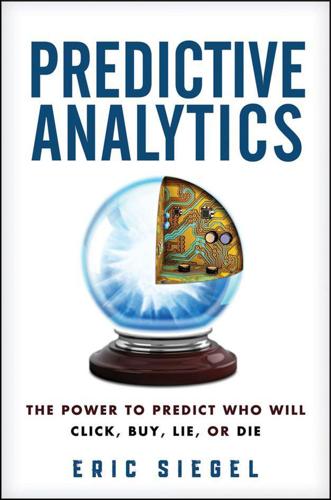
Predictive Analytics: The Power to Predict Who Will Click, Buy, Lie, or Die
by
Eric Siegel
Published 19 Feb 2013
See black box trading Allen, Woody Allstate AlphaGenius Amazon.com employee security access needs machine learning and predictive models Mechanical Turk personalized recommendations sarcasm in reviews American Civil Liberties Union (ACLU) American Public University System Ansari X Prize Anxiety Index calculating as ensemble model measuring in blogs Apollo 11 Apple, Inc. Apple Mac Apple Siri Argonne National Laboratory Arizona Petrified Forest National Park Arizona State University artificial intelligence (AI) about Amazon.com Mechanical Turk mind-reading technology possibility of, the Watson computer and Asimov, Isaac astronomy AT&T Research BellKor Netflix Prize teams Australia Austria automobile insurance crashes, predicting credit scores and accidents driver inatentiveness, predicting fraud predictions for Averitt aviation incidents Aviva Insurance (UK) AWK computer language B backtesting.
…
A small human chess expert who did not suffer from claustrophobia (chess is a long game) hid inside the desk, viewing the board from underneath and manipulating the mannequin’s arm. Napoleon Bonaparte and Benjamin Franklin had the pleasure of losing to this wonder of innovation—I mean, this crouching, uncomfortable imposter. In the modern-day equivalent, human workers perform low-level tasks for the Amazon Mechanical Turk, a crowdsourcing website by Amazon.com that coordinates hundreds of thousands of workers to do “things that human beings can [still] do much more effectively than computers, such as identifying objects in a photo . . . [or] transcribing audio recordings.” Its slogan is “Artificial Artificial Intelligence.”

Radical Markets: Uprooting Capitalism and Democracy for a Just Society
by
Eric Posner
and
E. Weyl
Published 14 May 2018
Technofeudalism Why, then, do siren servers not voluntarily pay their users to supply the high-quality data that would allow them to develop the best services? If data production is labor, why doesn’t a market for data work emerge as a part of the broader labor market? In fact, we have seen tentative first signs of markets for high-quality, labeled data. Many researchers and some companies use Amazon’s Mechanical Turk (mTurk) marketplace to pay online workers to label and clean data sets, and to participate in social-science experiments. This is not entirely new. Television ratings are still determined by Nielsen, which pays households a small fee to record their viewing. Notice, however, that the buyers of data in these settings are for the most part not the siren servers we have been discussing.
…
Jaron Lanier, Who Owns the Future? (Simon & Schuster, 2013). 2. While Lanier’s work provided the direct inspiration for our work, the themes he raises appeared roughly simultaneously in other scholarship. See, for example, Lilly C. Irani & M. Six Silberman, Turkopticon: Interrupting Worker Invisibility in Amazon Mechanical Turk, CHI’13 Proceedings of the SIGCHI Conference on Human Factors in Computing Systems (2013), and Trebor Scholz, ed., Digital Labor: The Internet as Playground and Factory (Routledge, 2013). 3. Imanol Arrieta-Ibarra, Leonard Goff, Diego Jiménez-Hernández, Jaron Lanier & E. Glen Weyl, Should We Treat Data as Labor?

Angrynomics
by
Eric Lonergan
and
Mark Blyth
Published 15 Jun 2020
That goes someway to explaining low wage growth. As more and more sectors are affected by these forces, many of those stresses will be passed on to workers. We see this in the rise of zero-hours contracts in the UK, the rise in minimum-wage jobs, and the growth of platform driven employment such as Task Rabbit and Amazon Mechanical Turk – the so-called “gig economy”. MARK: The particular form technological innovation has taken has also created aggressive price competition. Today’s “monopolists” – such as Facebook and Google – provide their products (social media and online search) for free, while introducing intense competition in the market for advertising.

Move Fast and Break Things: How Facebook, Google, and Amazon Cornered Culture and Undermined Democracy
by
Jonathan Taplin
Published 17 Apr 2017
Perhaps written from the deck of Perkins’s yacht (one of the world’s largest), the letter was an embarrassment for the other partners at Kleiner Perkins. This sense of class strife in San Francisco could be just a preview of a darker scenario brought about by the robot and artificial-intelligence revolution that Google, Amazon, Facebook, and others are investing in, including the “Uberization” of many tasks. Platforms such as Amazon’s Mechanical Turk allow firms to outsource online piecework, or “crowdwork.” As Mary L. Gray reports in the Los Angeles Times, “Researchers at Oxford University’s Martin Programme on Technology and Employment estimate that nearly 30% of jobs in the U.S. could be organized like this within 20 years. Forget the rise of robots and the distant threat of automation.
…
A direct and limitless supply of labor and tasks should produce a perfectly competitive market; however, data collected from our yearlong study of crowdwork suggests that the reverse is true. Rife with asymmetric information problems, crowdsourcing labor markets are arguably not just imperfect, but imperfect by design. Kingsley found that Amazon could constantly lower the piecework price it paid on Mechanical Turk and that it was continually opening up new low-labor-cost countries, such as India, to the platform. Given that Amazon runs a monopsony book business, it’s no surprise that it might apply the same techniques to other business sectors. But it is not only people working out of their homes doing crowdwork who are going to be threatened.
…
If we think about the world techno-utopians are envisioning, it may be hard for the average citizen to have the freedom and autonomy to enjoy meaningful work. Would a life where your daily existence relied on driving four hours a day for Uber, serving as a concierge for your Airbnb guests in the spare room, and spending your evenings doing crowdwork on Amazon’s Mechanical Turk meet Epicurus’s test? And would you have any time to live an “examined” life? Is the goal of tech success freedom, or addiction? 6. The New Camaldoli Hermitage perches 1,300 feet above the Pacific in Big Sur, California, and is void of cellular service, Wi-Fi, and all other electronic conveniences.
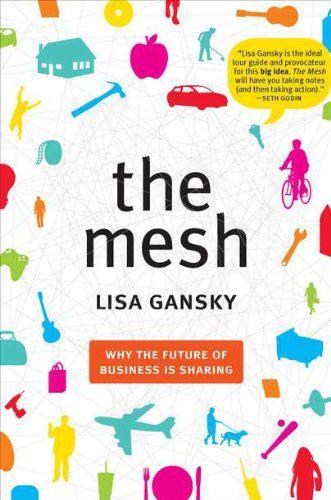
The Mesh: Why the Future of Business Is Sharing
by
Lisa Gansky
Published 14 Oct 2010
Instead of sorting through endless e-mail threads, FriendlyFavor sends an appeal to your peeps using your existing e-mail lists and then archives any responses (Think Evite). The Web site also helps you repay the favor with an exchange of services, gift certificates, or charitable donations. Amazon Mechanical Turk: Marketplace for work. https://www.mturk.com crowdSPRING: Offers affordable graphic design and writing services to small businesses by connecting consumers with creative professionals. http://www.crowdspring.com FriendlyFavor: Request tool that enables users to ask, offer, and manage favors online.

WTF?: What's the Future and Why It's Up to Us
by
Tim O'Reilly
Published 9 Oct 2017
The design of those workflows has to be optimized not just for the creators of the software but for the people who will keep them running day-to-day. The key idea is that a company is now a hybrid organism, made up of people and machines. I had made this point too in my 2003 Amazon all-hands talk. I’d told the story of von Kempelen’s Mechanical Turk, the chess-playing automaton that toured Europe in the late eighteenth and early nineteenth centuries, astonishing (and defeating) such luminaries as Napoleon and Benjamin Franklin. The supposed automaton actually had a chess master hidden inside, with a set of lenses to see the board and a set of levers to move the hands of the automaton.
…
And that dynamic river of content was managed, day in and day out, by all of the people who worked for Amazon. I remember saying “All of you—programmers, designers, writers, product managers, product buyers, customer service reps—are inside the application.” (For a long time, I wondered whether my telling of this story might have inspired Amazon to create the Amazon Mechanical Turk service, which uses a crowdsourced network of workers to perform small tasks that are hard for computers to do. However, while the service was launched in 2005, the patent for it was filed in 2001 though not issued until 2007, so at best I might have inspired the name. The name given to it in the patent diagrams is “Junta.”)
…
Remember that Google Photos is doing this on demand for the photos of more than 200 million users, photos that it’s never seen before, hundreds of billions of them. This is called supervised learning, because, while Google Photos hasn’t seen your photos before, it has seen a lot of other photos. In particular, it’s seen what’s called a training set. In the training set, the data is labeled. Amazon’s Mechanical Turk, or services like it, are used to send out pictures, one at a time, to thousands of workers who are asked to say what each contains, or to answer a question about some aspect of it (such as its color), or, as in the case of the Google Photos training set, simply to write a caption for it.
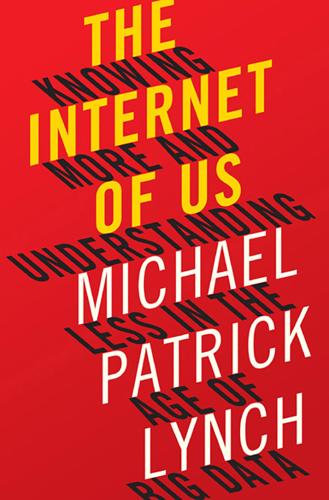
The Internet of Us: Knowing More and Understanding Less in the Age of Big Data
by
Michael P. Lynch
Published 21 Mar 2016
These can run the gamut—from retail product positioning to early detection mechanisms for inflammatory bowel disease. The prizes themselves vary in size, with some topping nearly a million dollars but many being significantly less. InnoCentive is only one example of how crowdsourcing can work, of course. Other famous examples include Amazon’s Mechanical Turk, which allows companies (and scientific researchers) to outsource specific tasks to a huge network of “Turkers” to perform tasks that humans are still better at than computers, such as image identification and translation. Still another is Threadless, an organization that assigns a crowd of T-shirt designers the job of selecting (and creating) new T-shirt designs.
…
Instead of an economy of skilled laborers that require resources to train, equip and compensate, crowdsourcing makes it possible for companies to distribute and generate knowledge without the expense of hiring those experts. This isn’t necessarily more “democratic.” But it is more capitalistic. Even some of the most active workers for Amazon’s Mechanical Turk can make very little, two to five dollars an hour. This may seem reasonable if you think of such laborers as amateurs—doing such work in their “spare time.” But as Brabham has convincingly argued, the idea of the “amateur crowd” is largely a myth. Turkers working for Amazon are generally highly educated professionals working in areas of the world where financially rewarding employment for those skills is significantly less than elsewhere (hence the attraction of Turk).
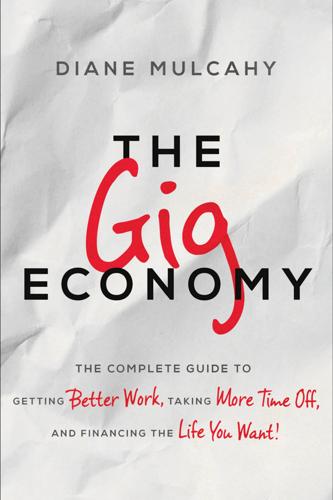
The Gig Economy: The Complete Guide to Getting Better Work, Taking More Time Off, and Financing the Life You Want
by
Diane Mulcahy
Published 8 Nov 2016
Granny might not be able to hold a full-time corporate job into her 70s, but now there are many other options for her to work part time, at home, and on her own schedule. She can dog sit on Rover.com, host dinners for paying diners through Feastly or EatWith, or rent a room of her house on Airbnb. She can work remotely on administrative or other small tasks on Upwork or as an Amazon Mechanical Turk. She can drive for Uber a few hours a week or babysit through Care.com. In the Gig Economy, retirees looking to supplement Social Security or an underfunded IRA can more easily than ever find flexible (and even home-based) work to generate incremental income. Even with more options for flexible work, planning to work longer is a risky plan because we don’t fully control when we’ll stop working.

Survival of the Richest: Escape Fantasies of the Tech Billionaires
by
Douglas Rushkoff
Published 7 Sep 2022
As companies lobby to protect their monopolies, small businesses lose the ability to compete. This leads to more bankruptcies and unemployment. Workers have no social safety net because the companies that have rendered them jobless show no profits and pay no taxes. As a last resort, workers turn to gig economy jobs at Doordash, Uber, or Amazon Mechanical Turk, becoming dependent on the platforms that disempowered them in the first place. The resulting valuations of the larger tech companies—if not their earnings—rival that of many nations. For their part, the people who become billionaires or even centibillionaires off all their stock may start out with good intentions but eventually succumb to The Mindset.
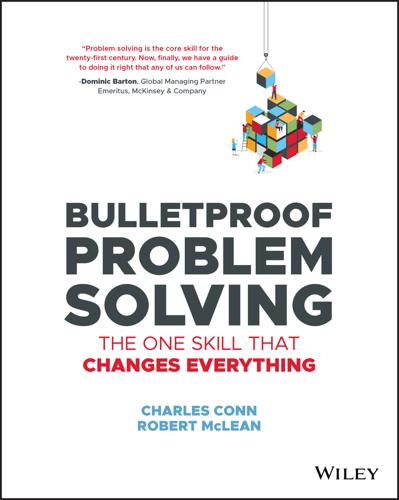
Bulletproof Problem Solving
by
Charles Conn
and
Robert McLean
Published 6 Mar 2019
EXHIBIT 6.7 In this analysis, the crucial independent variable was the perceived race of delegates. To get the data, Evan and David were entrepreneurial: They matched delegates' last names to a dataset from the US Census that provides, for each last name, a share of Americans with a last name who are nonwhite. They also paid online workers on Amazon's Mechanical Turk (mTurk) marketplace to guess, without further information, the racial background of delegates from their names alone, replicating their view of what voters might be doing in the privacy of the voting booth. This is a form of crowdsourcing, which we'll discuss more below. The actual vote counts, their dependent variable, came from the Illinois State Board of Elections.
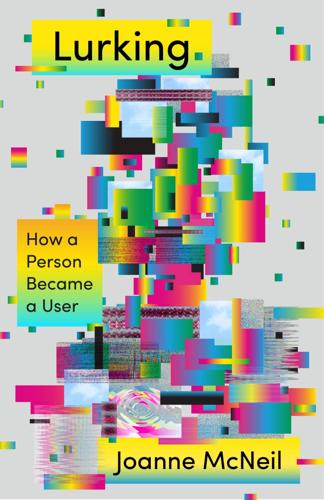
Lurking: How a Person Became a User
by
Joanne McNeil
Published 25 Feb 2020
“Engagement” is the inscrutable basis over which these companies present themselves as commonweal rather than mercenary: these companies—the platforms—show commitment to advertisers before users, while expressing otherwise in corporate communications. “I am a human being, not an algorithm,” Kristy Milland, an Amazon Mechanical Turk worker, once wrote in an email to jeff@amazon.com, describing how she relies on MTurk income to keep her “family safe from foreclosure,” and wishes to be seen on the platform as a “highly skilled laborer,” rather than hidden from requesters like lines of code. She wasn’t speaking as a user, but as a laborer.
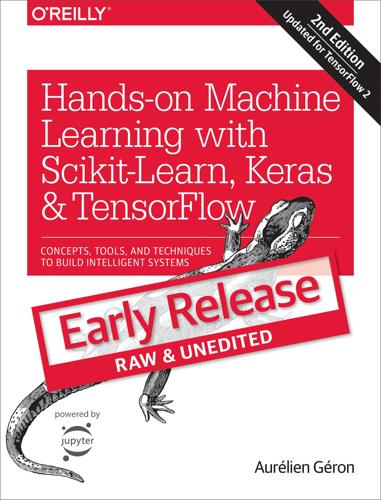
Hands-On Machine Learning With Scikit-Learn, Keras, and TensorFlow: Concepts, Tools, and Techniques to Build Intelligent Systems
by
Aurelien Geron
Published 14 Aug 2019
This is quite common because models tend to “rot” as data evolves over time, unless the models are regularly trained on fresh data. Evaluating your system’s performance will require sampling the system’s predictions and evaluating them. This will generally require a human analysis. These analysts may be field experts, or workers on a crowdsourcing platform (such as Amazon Mechanical Turk or CrowdFlower). Either way, you need to plug the human evaluation pipeline into your system. You should also make sure you evaluate the system’s input data quality. Sometimes performance will degrade slightly because of a poor quality signal (e.g., a malfunctioning sensor sending random values, or another team’s output becoming stale), but it may take a while before your system’s performance degrades enough to trigger an alert.
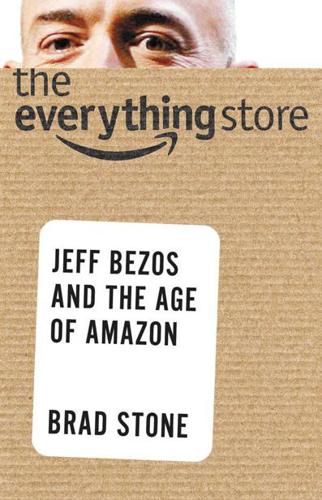
The Everything Store: Jeff Bezos and the Age of Amazon
by
Brad Stone
Published 14 Oct 2013
To their surprise, Bezos then actually developed a version of Project Agreya inside Amazon. He renamed it Mechanical Turk, after an eighteenth-century chess-playing automaton that concealed a diminutive man—a chess master—who hid inside and guided the machine’s moves. About two dozen Amazon employees worked on the service from January 2004 to November 2005. It was considered a Jeff project, which meant that the product manager met with Bezos every few weeks and received a constant stream of e-mail from the CEO, usually containing extraordinarily detailed recommendations and frequently arriving late at night. Amazon started using Mechanical Turk internally in 2005 to have humans do things like review Search Inside the Book scans and check product images uploaded to Amazon by customers to ensure they were not pornographic.
…
Amazon started using Mechanical Turk internally in 2005 to have humans do things like review Search Inside the Book scans and check product images uploaded to Amazon by customers to ensure they were not pornographic. The company also used Mechanical Turk to match the images with the corresponding commercial establishments in A9’s fledgling Block View tool. Bezos himself became consumed with this task and used it as a way to demonstrate the service. As the company prepared to introduce Mechanical Turk to the public, Amazon’s PR team and a few employees complained they were uncomfortable with the system’s reference to the Turkish people. Bezos liked the name for its historical association but agreed to let the communications staff and Mechanical Turk team brainstorm alternatives.
…
They seriously considered Cadabra, an allusion to magic and the original corporate name of Amazon. But in the end, Bezos shrugged off the concerns and said that he personally would bear the responsibility for any backlash. Mechanical Turk quietly launched in November 2005. Now any Internet user could perform what Amazon called human-intelligence tasks, typically earning a few cents per job. Other companies could list jobs on the Mechanical Turk website, with Amazon taking a 10 percent cut of the payments.11 One of the first applications, from a company called Casting Words, paid workers a few cents per minute to listen to and transcribe podcasts. Mechanical Turk gave Bezos another opportunity to demonstrate Amazon’s ability to innovate outside of its core retail business and show off his own curious attempts to crystallize abstract concepts.

The Future of the Internet: And How to Stop It
by
Jonathan Zittrain
Published 27 May 2009
InnoCentive Frequently Asked Questions, http://www.innocentive.com/faqs.php (last visited Sept. 30, 2007) (“If your solution is selected as ‘best’ by the Seeker, prior to receiving a financial award you must transfer your intellectual property rights in the solution.”). 22. Amazon’s Mechanical Turk, http://www.mturk.com/mturk/welcome (last visited Sept. 30, 2007); see also Posting of Elinor Mills to Tech News Blog, Amazon’s Mechanical Turk Lets You Make $$$, Sort Of, http://www.news.com/8301-10784_3-9782813-7.html (Sept. 21, 2007, 12:35 PDT). Index accessibility, 29, 72–73, 77, 93, 131, 188, 232 accountability, 32, 162–63 acoustic separation, 122 adaptability, 71–72, 93, 125 Adler, Michael, 110 advertising industry, 56 affordance theory, 78 amateur innovation, 26, 27 Amazon.com, 214; differential pricing by, 204–5; Mechanical Turk, 246; “mouse droppings,” 217, 219; and user ratings, 146, 147, 151, 215 AMD, Telmex Internet Box, 59 Anderson, Chris, 85 Anderson County, Tennessee, jailcams in, 209–10 anonymity, 33 Answers.com, 145 antiabortion activism, 215 AOL (America Online), 174; adding new features to, 23, 106–7; control exercised by, 3, 7, 57, 81, 82; and dumb terminals, 101–2; and hyperlinks, 89; and PlayMedia, 104; walled gardens of, 29, 89, 254n7 Apache Web server, 192 APIs (application programming interfaces), 124, 184–85, 215 Apple Computers: Apple II personal computers, 1–2, 3; business model of, 17; Dashboard, 272n55; data gathering by, 160; iPhone, 1, 2–3, 5, 101, 106, 182; iPod, 1, 101, 233; iTunes, 105, 121, 197; VisiCalc, 2; word processing software of, 17 appliance model, 17 appliances: consumer information technology in, 13; contingent, 107; intended for individual use, 18; ownership of, 106; regulability of, 107, 125; remote updates of, 106–7; security worries with, 106–7, 123–24, 150; smarter, 107; tethered, 3, 4, 5, 8–9, 59, 101–3, 106, 107.
…
Peer production alone does not guarantee collaborative meaning making. Services like InnoCentive place five-figure bounties on difficult but modular scientific problems, and ask the public at large to offer solutions.20 But the solutions tendered then become the full property of the institutional bounty hunter.21 Amazon’s Mechanical Turk has created a marketplace for the solving of so-called human intelligence tasks on the other side of the scale: trivial, repetitive tasks like tracing lines around the faces in photographs for a firm that has some reason to need them traced.22 If five years from now children with XOs were using them for hours each day primarily to trace lines at half a penny per trace, it could be a useful economic engine to some and a sweatshop to others—but either way it would not be an activity that is generative at the content layer.
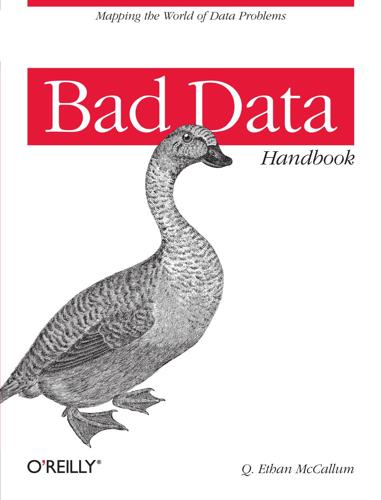
Bad Data Handbook
by
Q. Ethan McCallum
Published 14 Nov 2012
Conclusion We’re still using the results of the competition very successfully in our product today. I hope this walk-through gave you an idea of how to work effectively with outside machine-learning experts, whether through a contest like Kaggle or through a more traditional arrangement. * * * [73] “Kaggle: making data science a sport.” (http://www.kaggle.com/) [74] Amazon Mechanical Turk: “Artificial Artificial Intelligence.” (https://www.mturk.com/) [75] scikit-learn: machine learning in Python (http://scikit-learn.org/) Chapter 17. Data Traceability Reid Draper Your software consistently provides impressive music recommendations by combining cultural and audio data.
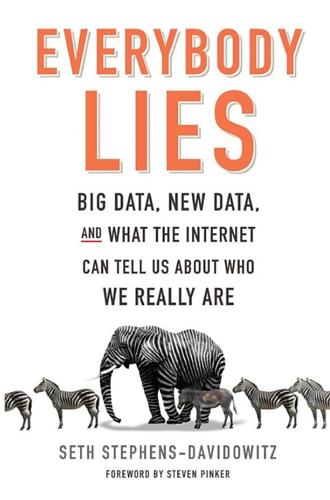
Everybody Lies: Big Data, New Data, and What the Internet Can Tell Us About Who We Really Are
by
Seth Stephens-Davidowitz
Published 8 May 2017
47 a food’s being shaped like a phallus: I coded foods as being shaped as a phallus if they were significantly more long than wide and generally round. I counted cucumbers, corn, carrots, eggplant, squash, and bananas. The data and code can be found at sethsd.com. 48 errors collected by Microsoft researchers: The dataset can be downloaded at https://www.microsoft.com/en-us/download/details.aspx?id=52418. The researchers asked users of Amazon Mechanical Turk to describe images. They analyzed the keystroke logs and noted any time someone corrected a word. More details can be found in Yukino Baba and Hisami Suzuki, “How Are Spelling Errors Generated and Corrected? A Study of Corrected and Uncorrected Spelling Errors Using Keystroke Logs,” Proceedings of the Fiftieth Annual Meeting of the Association for Computational Linguistics, 2012.

The Thinking Machine: Jensen Huang, Nvidia, and the World's Most Coveted Microchip
by
Stephen Witt
Published 8 Apr 2025
Here was the man who would build CUDA’s killer app. To train his neural network, Krizhevsky used the ImageNet database, a collection of images assembled by the Stanford computer scientist Fei-Fei Li. Disappointed by the limited scope of training datasets available online, Li had assembled her own by hiring workers from Amazon’s Mechanical Turk service to manually label more than fifteen million images across twenty-two thousand categories. ImageNet was hundreds of times bigger than any comparable dataset; Li’s advisers had questioned the wisdom of the effort, but it turned out to be exactly what Krizhevsky needed. His network had some 650,000 individual neurons, roughly the same number as a honeybee.
…
These were not idle speculations; with image recognition handled, Fei-Fei Li was now trying to build this solved world. She had unveiled her initiative, called Behavior-1K, at Nvidia’s 2024 GTC conference. Onstage with Bill Dally, Li described how she had assembled a diverse group of respondents using Amazon’s Mechanical Turk to rank thousands of answers to a single question: “How much would you benefit if a robot did this for you?” At the top were the tasks that people least enjoyed: scrubbing toilets, washing floors, and cleaning up after parties. At the bottom were those activities that inspired some measure of human joy: picking out jewelry, playing squash, and opening presents.

Exponential: How Accelerating Technology Is Leaving Us Behind and What to Do About It
by
Azeem Azhar
Published 6 Sep 2021
But these new working arrangements, rather than automation, are what raises the trickiest questions relating to employment in the Exponential Age. While Uber is probably the most successful platform-based freelance work company, it did not pioneer the concept. The origins of the gig economy – where short-term, freelance tasks are allocated by an online service – lie in the Amazon Mechanical Turk platform, launched in 2005, a few years before the term ‘gig working’ was coined. The service gets its odd name from a famous chess-playing device of the late eighteenth century. From the 1770s, the ‘Mechanical Turk’ – a mannequin affixed to a chessboard that was mounted on a wooden crate – made waves by beating successive royals, aristocrats and statesmen at chess.

The Stack: On Software and Sovereignty
by
Benjamin H. Bratton
Published 19 Feb 2016
In the ongoing technologicization of intelligence, we see cute slippages of position between humans and machines. For example, the original mechanical turk in the eighteenth century was a chess-playing machine, apparently an automaton exhibiting human intelligence, but in fact operated from afar by a human User. Today Amazon Mechanical Turk restages this arrangement, not just for chess but for any menial task the User can devise. Behind the browser are at least half a million “workers” who complete piecemeal tasks for micropayment.47 We see not AIs appearing as if they were human, but humans appearing as if they were AIs. As it's been since Karel Čapek's “universal robots” introduced on the stage in 1921, the robot not only mimics the human, but provides a portrait of the human as an object viewable to itself from the outside, and with the human negotiates an ongoing dance of reciprocal idealization.
…
If we follow the thread of Alex Rivera's Sleep Dealer (2008), a film in which California's agriculture is served by drone pilot/robot fruit pickers working remotely from behind the sovereign wall separating the United States and Mexico, it is not unreasonable to imagine a further logistic dehumanization of Fresno's on-site population.21 Perhaps the costs of piloting agricultural labor will be held down by global wage arbitrage, pickers in Tijuana competing with pickers in Jakarta and Juneau to provide fast and cheap results. That is, formal national jurisdiction may have far less to do with the economics of Cloud feudalism than with whichever Cloud Polis, enclave platform, or urban camp happens to counts a given worker as one of its Users. The elevation of labor systems like Amazon's Mechanical Turk, TaskRabbit, and Uber to infrastructural scale suggests several paradoxical and even contradictory outcomes, both positive and negative. One of these is well summarized as: “I'm really looking forward to a future in which service employees are leased Google Glass so they can complete courses in for-profit trade schools while simultaneously earning health care vouchers instead of actual currency and Soylent instead of actual food.”22 We should add, however, that the lease terms on that Glass set are conditional on whether the User actually won the bid to pilot-pick avocados.
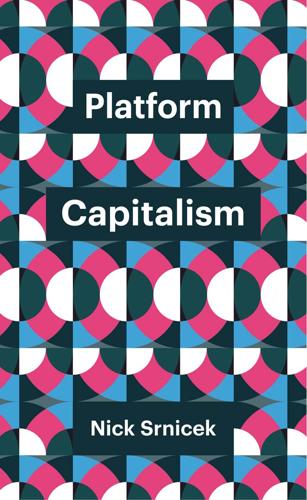
Platform Capitalism
by
Nick Srnicek
Published 22 Dec 2016
In this context, self-employment is not a freely chosen path, but rather a forced imposition. A look at the demographics of lean platform workers seems to support this. Of the workers on TaskRabbit, 70 per cent have Bachelor’s degrees, while 5 per cent have PhDs.76 An International Labour Organization (ILO) survey found that workers on Amazon’s Mechanical Turk (AMT) also tend to be highly educated, 37 per cent using crowd work as their main job.77 And Uber admits that around a third of its drivers in London come from neighbourhoods with unemployment rates of more than 10 per cent.78 In a healthy economy these people would have no need to be microtasking, as they would have proper jobs.
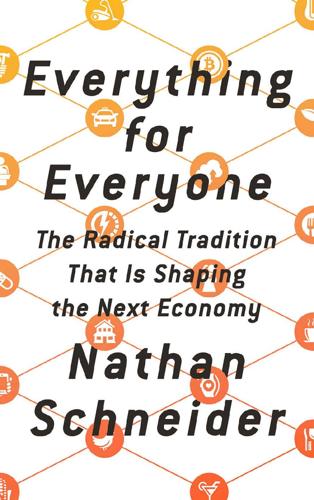
Everything for Everyone: The Radical Tradition That Is Shaping the Next Economy
by
Nathan Schneider
Published 10 Sep 2018
Without owning any guestrooms of its own, Airbnb was by then more valuable than Hyatt; Zipcar, which rents cars by the hour, had been bought by the international car-rental company Avis Budget. The sharing economy was also changing the way at least some people worked. Online labor brokers such as Amazon’s Mechanical Turk enticed hundreds of thousands of people to take up digital piecework—data entry, transcribing audio, running errands—without expectation of paid leave, health insurance, or even a minimum wage. But it was also alluringly permissionless—no application process, no fixed hours, no managers.
…
These people are the leading edge of a growing workforce that is permanently part-time, gig-to-gig—part empowered freelancer, part exile from the rights and benefits that once accompanied employment.14 Their offline lives, too, can start to feel like a kind of piecework. Rochelle LaPlante, once a social worker, began a second career on Amazon’s Mechanical Turk platform in 2012, doing tasks to help support her family, such as moderating offensive images and taking academic surveys. With this came new habits of mind. She told me, “You go to the grocery store and see a candy bar, and you think, Is that worth two surveys?” The piecework mentality is spreading, with little legal restraint, from Amazon’s newer Flex delivery platform to countless other contenders beckoning an underemployed workforce into ephemeral gigs.
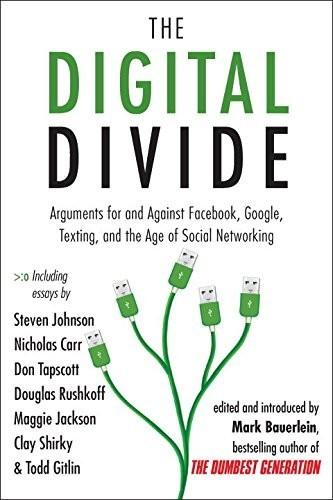
The Digital Divide: Arguments for and Against Facebook, Google, Texting, and the Age of Social Netwo Rking
by
Mark Bauerlein
Published 7 Sep 2011
Many people also understand that applications can be constructed in such a way as to direct their users to perform specific tasks, like building an online encyclopedia (Wikipedia), annotating an online catalog (Amazon), adding data points onto a map (the many Web-mapping applications), or finding the most popular news stories (Digg, Twine). Amazon’s Mechanical Turk has gone so far as to provide a generalized platform for harnessing people to do tasks that are difficult for computers to perform on their own. But is this really what we mean by collective intelligence? Isn’t one definition of intelligence, after all, that characteristic that allows an organism to learn from and respond to its environment?
…
Another striking story we’ve recently heard about a real-time feedback loop is the Houdini system used by the Obama campaign to remove voters from the Get Out the Vote calling list as soon as they had actually voted. Poll watchers in key districts reported in as they saw names crossed off the voter lists; these were then made to “disappear” from the calling lists that were being provided to volunteers. (Hence the name Houdini.) Houdini is Amazon’s Mechanical Turk writ large: one group of volunteers acting as sensors, multiple real-time data queues being synchronized and used to affect the instructions for another group of volunteers being used as actuators in that same system. Businesses must learn to harness real-time data as key signals that inform a far more efficient feedback loop for product development, customer service, and resource allocation. >>> in conclusion: the stuff that matters All of this is in many ways a preamble to what may be the most important part of the Web Squared opportunity.
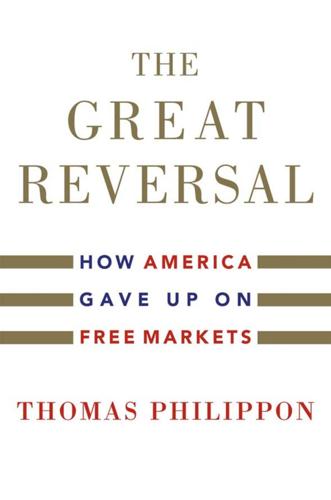
The Great Reversal: How America Gave Up on Free Markets
by
Thomas Philippon
Published 29 Oct 2019
In Box 2.2 we showed that national concentration measures can differ from local concentration measures and give a misleading picture of the economy. You might think that local labor market concentration matters less today because of online labor markets. Arindrajit Dube, Jeff Jacobs, Suresh Naidu, and Siddharth Suri (2018) study exactly this issue. They examine one of the largest on-demand labor platforms, Amazon Mechanical Turk. Online platforms make it easier to search for a job, and one might have conjectured that they would lead to near-perfect competition. But the authors find a surprisingly high degree of market power, even in this large and diverse spot-labor market, suggesting that much of the surplus created by this online labor market platform is captured by employers.
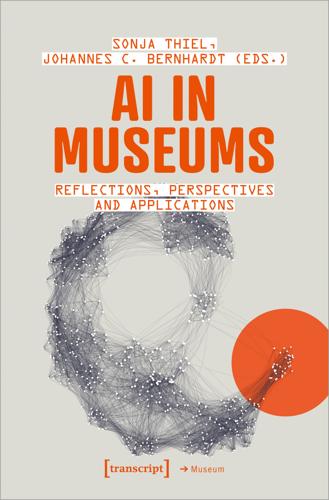
AI in Museums: Reflections, Perspectives and Applications
by
Sonja Thiel
and
Johannes C. Bernhardt
Published 31 Dec 2023
Critiques of AI are confronted with the confusing need to be everywhere at once: the computational material that AI runs on requires the extraction of rare minerals, which often come from developing countries, where miners work under horrible conditions. AI is trained on labelled images, a categorization that is again outsourced to developing countries or organized through crowdsourcing using platforms such as Amazon’s Mechanical Turk, and, as such, is based on precarious work. Even if this work is organized with care, datasets are often biased, and models amplify biases further (Chun 2021). The training of machine learning models is energy-intensive and problematic for the environment. The workplaces involved in developing AI systems struggle with diversity issues.
…
These algorithms are improving because, among other things, they have been trained on vast sets of classifications, for example, images found on Wikipedia or discussions in the online forum Reddit, to name just a couple of popular sources for training AI. The ImageNet algorithm, also often used by museums, utilizes Amazon’s Mechanical Turk work platform to have people describe images for micro-pay- Lukas Fuchsgruber: Dead End or Way Out? ments. AI is thus based directly or via detours (for instance, Wikipedia or Reddit) on the work of the many people who have described images. These workers are often overlooked in discussions of AI, an aspect that is associated with many of the problems addressed in the discourse on AI.
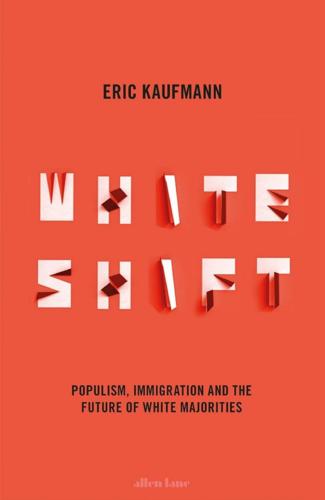
Whiteshift: Populism, Immigration and the Future of White Majorities
by
Eric Kaufmann
Published 24 Oct 2018
Data doesn’t have to be quantitative to be valid – it might consist of large numbers of interviews, or accounts based on historical documents – but, in order to make causal claims, information needs to be as representative as possible. Where I don’t have large-scale representative data I run small opt-in surveys on Amazon’s Mechanical Turk (MTurk) or Prolific Academic, which aren’t too expensive, contain enough cases to compare between groups and are widely used by academics. These aren’t as good as mass surveys but are better than anecdotes and impressions. There isn’t the space in these pages to present everything, so I encourage you to visit this book’s companion website.8 We hear a lot about populism, and some analysts encompass its left, right, Western, Eastern and non-European variants.9 I’m less ambitious.
…
Not only this, but even within white America, despite all the melting, the WASP remains the all-American archetype. In 1982, a survey asked Americans to rate the contributions of ethnic groups and discovered that the English were highest ranked, followed by the Irish, Jews and Germans, with non-European groups lower down.62 In a convenience sample across three surveys on Amazon Mechanical Turk (MTurk) between 19 March and 1 April 2017, I asked 467 Americans, ‘All surnames are equally American, but if someone from another country asked you what a characteristic American surname was, which of the following would you choose?’ Answers were (rotated): Browning, Graziano, Hernandez, Schultz and Wong.

The Fourth Industrial Revolution
by
Klaus Schwab
Published 11 Jan 2016
Table 2: Examples of professions most and least prone to automation Source: Carl Benedikt Frey and Michael Osborne, University of Oxford, 2013 It is interesting to note that it is not only the increasing abilities of algorithms, robots and other forms of non-human assets that are driving this substitution. Michael Osborne observes that a critical enabling factor for automation is the fact that companies have worked hard to define better and simplify jobs in recent years as part of their efforts to outsource, off-shore and allow them to be performed as “digital work” (such as via Amazon’s Mechanical Turk, or MTurk, service, a crowdsourcing internet marketplace). This job simplification means that algorithms are better able to replace humans. This job simplification means that algorithms are better able to replace humans. Discrete, well-defined tasks lead to better monitoring and more high-quality data around the task, thereby creating a better base from which algorithms can be designed to do the work.
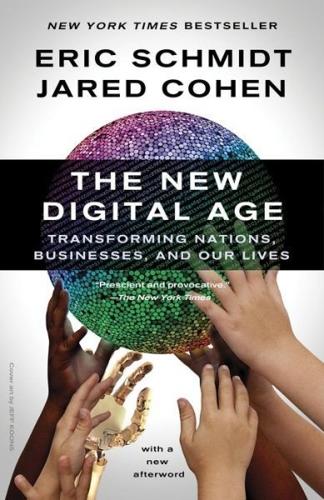
The New Digital Age: Transforming Nations, Businesses, and Our Lives
by
Eric Schmidt
and
Jared Cohen
Published 22 Apr 2013
Skilled young adults in Uruguay will find themselves competing for certain types of jobs against their counterparts in Orange County. Of course, just as not all jobs can or will be automated in the future, not every job can be conducted from a distance—but more can than you might think. And for those living on a few dollars per day, there will be endless opportunities to increase their earnings. In fact, Amazon Mechanical Turk, which is a digital task-distribution platform, offers a present-day example of a company outsourcing small tasks that can be performed for a few cents by anyone with an Internet connection. As the quality of virtual interactions continues to improve, a range of vocations can expand the platform’s client base; you might retain a lawyer from one continent and use a Realtor from another.

Evil by Design: Interaction Design to Lead Us Into Temptation
by
Chris Nodder
Published 4 Jun 2013
Increase the perceived value of the reward by making it harder to achieve, but keep it sufficiently attainable so that the right number of customers will act. Use language such as “winning” or “award” rather than “coupon” to make it clear that effort was involved in attaining the prize. Consider a small reward rather than a big one Customers will be forced to create justifications, which increase the perceived value of the reward. Amazon.com’s Mechanical Turk is an online marketplace where individuals get paid to perform small tasks that computers aren’t good at, such as making preference choices, composing descriptive sentences, searching for an item in an image, transcribing audio, or extracting meaning from phrases. These tasks are called Human Intelligence Tasks or HITs.
…
But despite this low payout, providers (who tend to refer to themselves as Turkers) keep coming back. One commenter, posting on Turkernation.com says, “I am spending way too much time on turking, kinda like when I used to play WoW. Do you guys find it addictive? The payout is like a score, and as you get qualifications, it's like getting levels. It's like I'm playing a game.” Amazon.com’s Mechanical Turk—in this HIT, you’ll earn six cents for checking the classification of a set of products on the site. Why do people commit so much time to something that—even for experienced Turkers—pays out so little? For some people, there are good reasons: unemployment, ability to work from home in micro-shifts between other tasks such as child minding, or the ability to work from work—either students during dull lectures, or others at their regular workplace using their work Internet access.
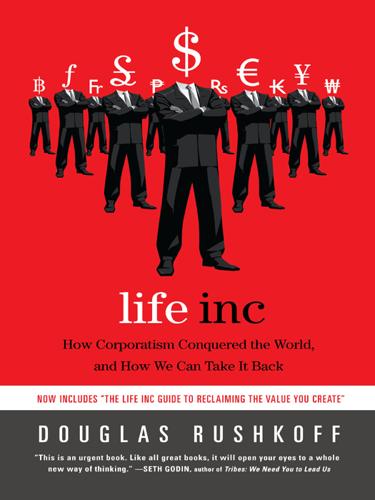
Life Inc.: How the World Became a Corporation and How to Take It Back
by
Douglas Rushkoff
Published 1 Jun 2009
While implantation isn’t yet mandatory for existing laborers, the additional and convenient access to sensitive materials it affords makes voluntary implantation a plus for worker recognition and advancement. Increasingly, we find ourselves working on behalf of our computers rather than the other way around. The Amazon Mechanical Turks program gives people the opportunity to work as assistants to computers. Earning pennies per task, users perform hundreds or thousands of routine operations for corporate computers that don’t want to waste their cycles. There are credits available for everything from finding the address numbers in photos of houses (three cents a pop) to matching Web-page URLs with the product that is supposed to appear on them (a whopping nickel each).

The Long History of the Future: Why Tomorrow's Technology Still Isn't Here
by
Nicole Kobie
Published 3 Jul 2024
Each needed to be carefully labelled – this is a cat, it is orange, and so on. Initially she intended to pay undergrad students to label the images, but realised it would take a century or so too long. She tried an algorithm instead, but it lacked accuracy. A grad student supplied an answer: Amazon’s Mechanical Turk. This freelance work platform meant she could scale up the work by hiring huge numbers of people to do small amounts of work each. After two years, ImageNet had 3.2 million images labelled and categorised; there are now 14 million. That gave researchers a data set comprising objects, scenes and images on which to train AI, letting them test their systems – but they also noticed that the data could help improve their systems.
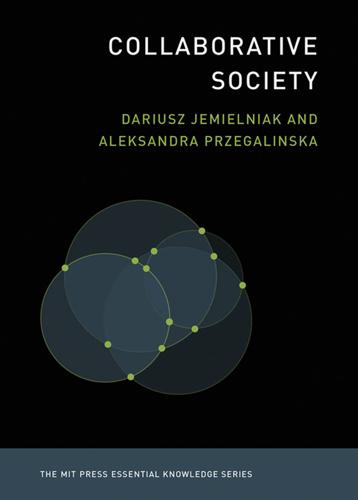
Collaborative Society
by
Dariusz Jemielniak
and
Aleksandra Przegalinska
Published 18 Feb 2020
At the same time, however, stark critics of the phenomenon insist that collaborative communities based on sharing may be yet another cover for social injustice and user exploitation.32,33 With the advent of highly successful corporations that have embraced the collaborative rhetoric, such as Facebook, Uber, or Amazon’s Mechanical Turk, the early promises—that internet users would be empowered through their participation in creating the online world—seem evermore distant considering the ubiquitous online presence of these companies and their influence on users’ lives. For some companies attempting to benefit from the “sharing economy,” the notion of sharing has become a marketing strategy, thus redefining sharing in the eyes of the millions who partake in these practices.
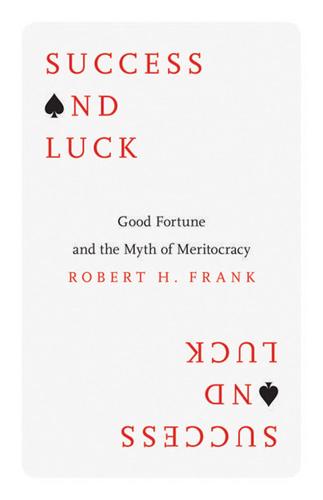
Success and Luck: Good Fortune and the Myth of Meritocracy
by
Robert H. Frank
Published 31 Mar 2016
Falsely believing themselves to be more skillful apparently induced a powerful sense of entitlement to claim the lion’s share, while falsely believing themselves to be less skillful had much less of an effect. My very able research assistant Yuezhou Huo designed a simple survey that sheds additional light on how focusing on the importance of external factors can affect people’s willingness to contribute to the common good. She began by asking subjects recruited online from Amazon’s Mechanical Turk worker pool7 to recall a good thing that had recently happened to them. She then asked one group to list external factors beyond their control that contributed to the event, a second group to list personal qualities or things they had done personally, and a control group to simply list reasons that the good thing had happened.
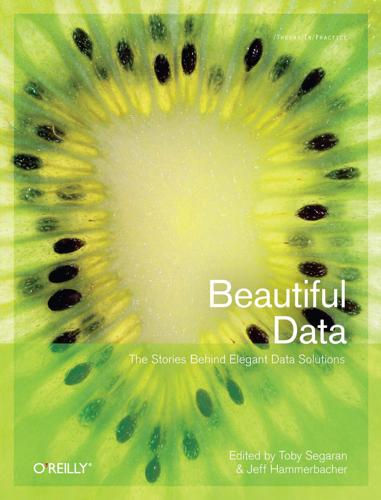
Beautiful Data: The Stories Behind Elegant Data Solutions
by
Toby Segaran
and
Jeff Hammerbacher
Published 1 Jul 2009
Motivation Finally, although we’ve talked about concerns over how to make it possible for respondents to use the form, as well as the problems of getting them to trust us enough to keep participating, avoiding scaring them off with a lot of questions, and making sure we didn’t subconsciously influence their answers, we haven’t mentioned perhaps the most important part of any survey: why should the person want to participate at all? For this type of research survey, there is no profit motive to participate, unlike online forums such as Amazon’s Mechanical Turk, in which users complete tasks in their spare time for a few dollars or cents per task. But when there is no explicit profit to be made, how do you convince a person to take the time to answer your questions? Designing Our Solution We’ve talked about some of the pitfalls inherent in a data-collecting project; in the next few sections, we discuss the nuts and bolts of our design, including typography, web browser compatibility, and dynamic form elements.
…
When an individual decides whether to lend money to a member of the network, the lender (unlike a bank) takes into account a number of “softer” factors: the borrower’s statement of purpose, the accompanying image, spelling, grammar, and other profile information. To incorporate some of these features into our models, I used human workers (from Amazon’s Mechanical Turk) to code images from Prosper.com members, first for content—whether the image depicts a person, a family, a vehicle, etc.—and then for a “trustworthiness” score: that is, for the answer to the question, “Would you lend money to this person?” 216 CHAPTER THIRTEEN Download at Boykma.Com But the models still fell short: social factors play into loan dynamics in unexpected ways.

Your Computer Is on Fire
by
Thomas S. Mullaney
,
Benjamin Peters
,
Mar Hicks
and
Kavita Philip
Published 9 Mar 2021
Six Silberman, “Stories We Tell about Labor: Turkopticon and the Trouble with ‘Design,’” CHI ’16: Proceedings of the 2016 Conference on Human Factors in Computing Systems (New York: Association for Computing Machinery, 2016), 4573–4586; Lilly Irani and M. Six Silberman, “Turkopticon: Interrupting Worker Invisibility in Amazon Mechanical Turk,” CHI ’13: Proceedings of the SIGCHI Conference on Human Factors in Computing Systems (New York: Association for Computing Machinery, 2013), 611–620. 6. Irani and Silberman, “Stories We Tell about Labor.” 7. Michel-Rolph Trouillot, Silencing the Past: Power and the Production of History (Boston: Beacon Press, 1995). 8.

Blood in the Machine: The Origins of the Rebellion Against Big Tech
by
Brian Merchant
Published 25 Sep 2023
We might marvel at the progress of, say, the self-driving car, but its autonomous navigation requires the labor of numerous invisible workers who do the thankless, drudgery-filled toil, often for very low wages, of labeling image after image to make the datasets the algorithm needs in order to operate. From Amazon’s Mechanical Turk to refugee camps in Europe, workers are paid pennies to sort endless reams of data, the raw materials for computer vision programs and self-driving vehicles. The researchers Mary L. Gray and Siddharth Suri call this “ghost work”—and it’s still ascendent today. The autonomous delivery robots now common on American college campuses and downtown areas may replace delivery people—but they are digitally overseen by other workers who can control them remotely, from places like Colombia, for $2 an hour.
…
Thornton Jonathan Deane Jno Walker Joshua Schorsfiend Jno [Schersfield] Thomas Smith James Starkey—Anthony Walker Joseph Greewood Thomas Green Benjamin Sigg Geo Ludge Wm Hodgson Geo Brook William Barnard Geo Beamont David Moerhouse William Whitehead Joseph Fisher Jon Batley Jon Lum Jon Shore Benjamin Hinchcliff Geo Hanlin Jon Laild Jon Fawset James Whitehouse give my respects to all enquiring Friends and acccept These few Lines from your Friend— 10. “Sit down” This section continues to draw from A Memoir of Robert Blincoe, an Orphan Boy, recorded by John Brown. Blincoe’s visit to Ol’ Beckka is recounted on page 56. 11. From Amazon’s Mechanical Turk Phil Jones discusses the phenomenon of tech companies enabling their “automated” products by employing low-wage workers around the world, often in the global South, and even sourcing labor from refugee camps, in Work without the Worker: Labour in the Age of Platform Capitalism (London: Verso, 2021). 12.

The Launch Pad: Inside Y Combinator, Silicon Valley's Most Exclusive School for Startups
by
Randall Stross
Published 4 Sep 2013
“If you have documents you want to digitize—for example, you take notes in your notebook—that you’d like to have as a PDF, you upload it to our Web site, we’ll chop it up into small pieces, send it to our workers, they’ll digitize the words, send it back to us. We give you a PDF.” “Got it. How did you guys come up with the idea?” Narula explains that they had originally thought they could develop software that would “scrape” the jobs listed on Amazon’s Mechanical Turk service and then have the work done on the cell phones of workers in India. “But once we did our research, we understood it won’t scale,” he says. “How do you guys all know each other?” “The four of us were Berkeley graduate students,” says Kulkarni. “It’s spun out of research that we were doing as part of our graduate work.”
…
Abbott, Ryan, 46, 171, 174, 177, 180, 181 Adidas, 234 Adpop Media, 46–47, 122–23, 129 AeroFS, 231 Airbnb, 4, 43, 88, 95 AirTV, 103–4 circumvention, 177–78 investors seeking next, 207 Kutcher, Ashton, 265n1 marketplace, 179 Sift Science, 210 Vidyard, 103–5, 120 Aisle50, 51–52, 191, 208–9, 223, 233 Akamai, 101 Albertsons, 209 Allen, Paul, 16 AlphaLab, 41 Altair BASIC, 11, 68 AltaVista, 204 Altman, Sam, 220 on buzzwords, 18–19 CampusCred, 111–14 interviewing finalists, 11, 21 Rap Genius, 196–202 Science Exchange, 173 Sift Science, 75–76 speaking style, 114, 115, 196 YC partner, 63, 150 Amarasiriwardena, Thushan, 127–28 Amazon, 126 Interview Street, 213 Mechanical Turk, 89, 90 movie rentals, 106 web services, 32, 101, 131, 132 Andreessen Horowitz, 4, 66, 230 Andreessen, Marc, 1–2, 4, 215, 239 Android, 17, 122, 147, 212 NFC, 157, 158 speech recognition, 210 Andrzejewski, Alexa, 54 angel investors, 28, 86–87, 189–90 AnyAsq, 166–67 Anybots, 12, 27, 40, 63 AOL, 124, 126 AppJet, 64, 204 Apple, 69 App Store, 100, 127 cofounders, 161 headquarters, 251n1 iOS devices, 122, 127–28, 142, 147, 172, 187, 209, 212 Sequoia Capital, 3 Snapjoy, 187 Arrington, Michael, 48–49 The Art of Ass-Kicking blog (Shen), 9 Artix, 25, 27, 29 Ask Me Anything, 166 Auburn University, 29 Auctomatic, 64, 66, 159, 204 Austin, TX, 42 Australia, 17, 238 Ballinger, Brandon, 70–76, 121, 134–38, 209–10 Barbie, 53 Bard College at Simon’s Rock, 52 Beatles, 200 Bechtolsheim, Andy, 86 Bellingham, WA, 101 Benchmark Capital, 5 Berkeley (UC) CampusCred, 20, 111 graduates of, 9, 68, 135, 164 Information, School of, 89, 90 newspaper, 136 students, 20, 52–53, 135 Venture Lab Competition, 53 women in computer science, 53 Bernstam, Tikhon, 122, 166, 185–86, 212, 228, 230–31 Bernstein, Mikael, 213–14 Betaspring, 42 Bible, 127, 197, 199, 200 Bill of Rights, 197 Bing Nursery School, 52 Birmingham, AL, 29, 33, 51, 203, 223 BizPress, 125, 147–48, 192 BlackBerry, 157, 184 Blackwell, Trevor Anybots, 27 interviewing finalists, 10, 11–12, 32–33 Kiko, 16 Viaweb, 25 YC partner, 27, 40, 57, 63 Blank, Steve, 77 Blogger, 57 Blomfield, Tom, 191 Bloomberg, Michael, 227 Bloomberg TV, 55 Blurb.com, 12 BMW, 165 Books On Campus, 164 BoomStartup, 42 Boso, 57–58, 60 Boston, MA, 56 Boston University, 112 Boucher, Ross, 64 Boulder, CO, 41, 43, 53, 130 Box, 54 Boyd, E.

Human + Machine: Reimagining Work in the Age of AI
by
Paul R. Daugherty
and
H. James Wilson
Published 15 Jan 2018
Even if the entire mind of an AI system can’t be known, some insights into its inner workings can be very beneficial. Explainers should understand both what’s useful for people to see in a visualization and what’s important for the system to share. Minimize “Moral Crumple Zones” For services like Uber, Lyft, and Amazon’s Mechanical Turk, AI-based software is augmenting some management roles: it doles out tasks, gives feedback and ratings, and helps people track progress toward goals. AI-enhanced management is a necessary innovation if these companies’ business models are to scale and employ hundreds of thousands of people worldwide.
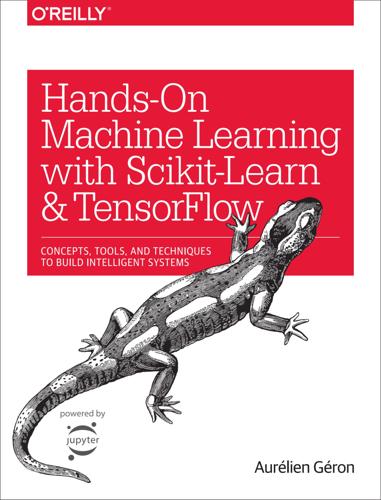
Hands-On Machine Learning With Scikit-Learn and TensorFlow: Concepts, Tools, and Techniques to Build Intelligent Systems
by
Aurélien Géron
Published 13 Mar 2017
This is quite common because models tend to “rot” as data evolves over time, unless the models are regularly trained on fresh data. Evaluating your system’s performance will require sampling the system’s predictions and evaluating them. This will generally require a human analysis. These analysts may be field experts, or workers on a crowdsourcing platform (such as Amazon Mechanical Turk or CrowdFlower). Either way, you need to plug the human evaluation pipeline into your system. You should also make sure you evaluate the system’s input data quality. Sometimes performance will degrade slightly because of a poor quality signal (e.g., a malfunctioning sensor sending random values, or another team’s output becoming stale), but it may take a while before your system’s performance degrades enough to trigger an alert.
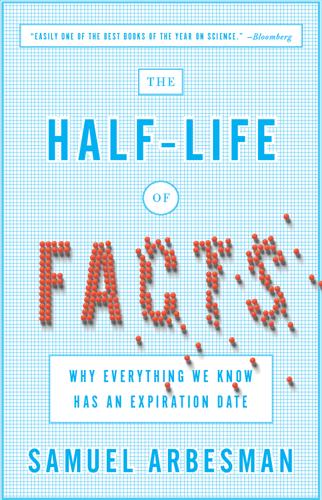
The Half-Life of Facts: Why Everything We Know Has an Expiration Date
by
Samuel Arbesman
Published 31 Aug 2012
I decided to conduct a simple experiment to actually get a handle on people’s factual inertia. To do this, I used a Web site created by Amazon called Mechanical Turk. The label Mechanical Turk derives from a well-known hoax from the eighteenth and nineteenth centuries. The Turk was a complex device that was displayed all throughout Europe. While appearing to be a chess-playing automaton, the Turk actually had a person in a hidden compartment, controlling the machine. In homage to this, Amazon named its online labor market—a clearinghouse for simple tasks humans can easily perform but computers cannot—Mechanical Turk. These tasks include things like labeling photographs when they are posted, and Turkers, as the laborers are called, will often solve these problems for pennies.
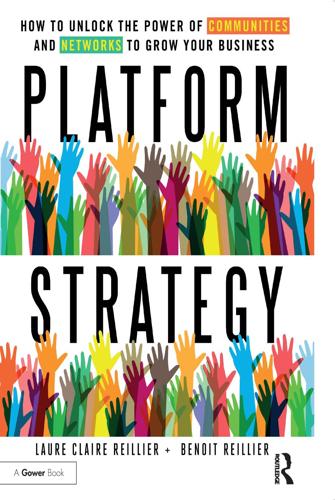
Open for Business Harnessing the Power of Platform Ecosystems
by
Lauren Turner Claire
,
Laure Claire Reillier
and
Benoit Reillier
Published 14 Oct 2017
As the physical location of platform workers is increasingly irrelevant for some jobs, the cost of work can be driven down significantly. This has been happening for years in the manufacturing sector, with China becoming the world’s factory. Platforms are now enabling this for services. Entire businesses now rely on externalized flexible workforces for a range of activities. Amazon’s Mechanical Turk,6 for example, provides ‘businesses and developers access to an on-demand scalable workforce’, while ‘workers can select from thousands of tasks and work whenever it’s convenient’. Tasks are called HITs (human intelligence tasks) The future of platforms 207 and can be posted – and carried out – by anybody.
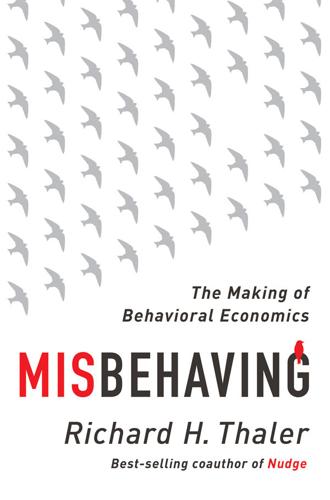
Misbehaving: The Making of Behavioral Economics
by
Richard H. Thaler
Published 10 May 2015
If we faxed a bunch of questions each Monday morning, they would fax us back the responses Thursday night. That gave us Friday and the weekend to figure out what we had learned from the week’s questions and to write some new ones for the following week. Today this sort of research can be done online using services like Amazon’s “Mechanical Turk,” but back then weekly access to a random sample of a few hundred residents of Ontario (and later British Columbia) was an incredible luxury. We were able to try out lots of ideas, get quick feedback, and learn in the best possible way: theory-driven intuition tested by trial and error. Here is an example of the kind of question we were asking: A hardware store has been selling snow shovels for $15.
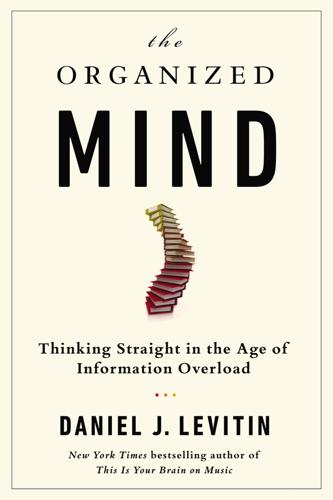
The Organized Mind: Thinking Straight in the Age of Information Overload
by
Daniel J. Levitin
Published 18 Aug 2014
But reCAPTCHAs pair the unknown words with known words; they assume that if you solve the known word, you’re a human, and that your guess on the unknown word is reasonable. When several people agree on the unknown word, it’s considered solved and the information is incorporated into the scan. Amazon’s Mechanical Turk is typically used for tasks that computers aren’t particularly good at but humans would find repetitively dull or boring. A recent cognitive psychology experiment published in Science used Amazon’s Mechanical Turk to find experimental participants. Volunteers (who were paid three dollars each) had to read a story and then take a test that measured their levels of empathy. Empathy requires the ability to switch between different perspectives on the same situation or interaction.
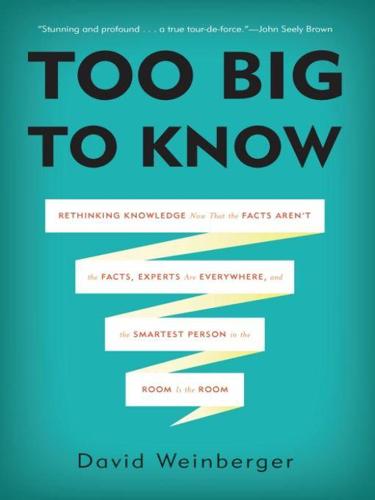
Too Big to Know: Rethinking Knowledge Now That the Facts Aren't the Facts, Experts Are Everywhere, and the Smartest Person in the Room Is the Room
by
David Weinberger
Published 14 Jul 2011
“DARPA would have you believe that it’s the brilliance of modern-day social networks that led an MIT-based team to win its red balloon challenge this weekend” when it was just that MIT offered to split the money.16 That objection misses the point: Without the network, the offer of money would have gone nowhere. Indeed, some of the most powerful ways to crowdsource expertise involve paying people. Amazon’s Mechanical Turk, launched in 2005, enables vast numbers of people to work on small, distributed tasks for a small amount of money per transaction. (It’s named after an eighteenth-century chess-playing “machine” that beat almost all comers, including Napoleon and Ben Franklin, by concealing a human chess expert within it.)

Rule of the Robots: How Artificial Intelligence Will Transform Everything
by
Martin Ford
Published 13 Sep 2021
Over a two-and-a-half-year period, she set out to give titles to more than three million images across over 5,000 categories. This work had to be done manually; only a human being could make the proper association between a photograph and a descriptive label. Because the cost of hiring even undergraduates to take on such a massive task would have been prohibitive, Li’s team turned to Amazon’s Mechanical Turk, a newly developed platform that crowdsourced information-oriented tasks to remote workers, often in low-wage countries.12 Li’s project, known as ImageNet, was published in 2009 and soon became an indispensable resource for research into machine vision. Beginning in 2010, Li organized an annual competition in which teams from universities and corporate research labs turned their algorithms loose to try to label images drawn from the massive dataset.

You've Been Played: How Corporations, Governments, and Schools Use Games to Control Us All
by
Adrian Hon
Published 14 Sep 2022
A legion of services have sprung up that pay people to transcribe audio, write copy, design artwork, test applications, and even conduct research—all without hiring those people, meeting them, paying them directly, or even being aware of their individual existence.84 These tasks require no less skill than they did twenty years ago, but the principles of Taylorism coupled with the reach of the internet have disintegrated the full-time employment that millions of those workers might have once found. Now, they’re merely labour robots to be switched on and off at will. All of these services were undoubtedly inspired by the same company, one that brings us full circle: Amazon. In 2005, Amazon launched Mechanical Turk, a service that allows businesses to hire “crowdworkers” from anywhere in the world. Unlike other task-specific platforms, Mechanical Turk is generalised; crowdworkers can perform online tasks of any kind, from classifying objects in satellite images to finding phone numbers for restaurants.

No Ordinary Disruption: The Four Global Forces Breaking All the Trends
by
Richard Dobbs
and
James Manyika
Published 12 May 2015
This type of shift has already occurred in the legal profession. In the 2000s, jobs for paralegals and legal assistants grew at 2.5 times the rate that jobs for attorneys did, shifting the overall composition of employment in the sector. Disaggregation of more complex tasks can give rise to new businesses and recruiting models. Amazon’s Mechanical Turk is a website where businesses can find workers to do simple tasks such as writing product descriptions or identifying people in photographs. Positions requiring higher skills can be filled on platforms such as InnoCentive’s challenge platform and topcoder, where people compete for software development and digital asset creation work.
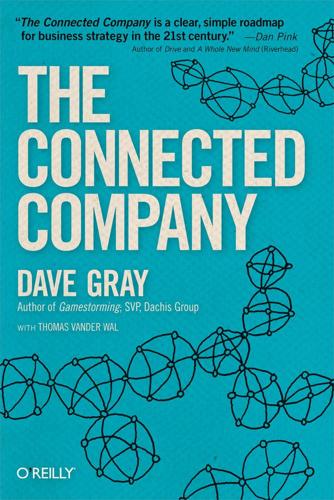
The Connected Company
by
Dave Gray
and
Thomas Vander Wal
Published 2 Dec 2014
A platform is a support structure that increases the effectiveness of a community. Some platforms are public. For example, a local farmers’ market or swap meet clusters sellers together so they can attract more buyers. Like local swap meets, eBay and Craigslist provide platforms for people to buy and sell used goods or unique items. Amazon’s Mechanical Turk provides a marketplace for buyers and sellers of human labor at a micro scale—tiny bits of work for tiny bits of money. The Internet is another public platform. So is the Global Positioning System (GPS) that allows you to track your location by satellite. Companies can provide platforms that are more restricted in their use.
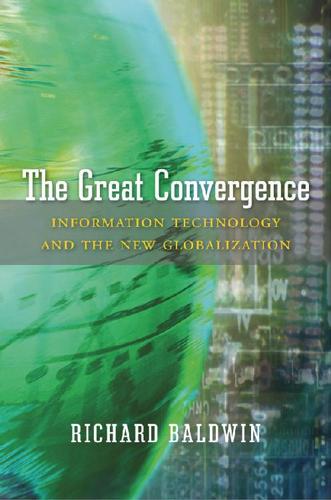
The Great Convergence: Information Technology and the New Globalization
by
Richard Baldwin
Published 14 Nov 2016
“Microwork” or “micro-outsourcing” is the ability to get individuals to perform small, disjointed tasks as part of a larger project with all the work taking place over the Web. Virtual presence will make the fractionalization and offshoring much easier to coordinate. Think of it as micro-outsourcing on steroids; for example, something like Amazon’s Mechanical Turk but far more pervasive. Of course, the offshoring of simple, modular services is an old story. All sorts of back-office tasks have been offshored or outsourced already. This could go much further. Leading providers of services ranging from banking to legal advice pay large numbers of expensive people to sit in expensive buildings in expensive cities since in-person interactions matter.

Mindwise: Why We Misunderstand What Others Think, Believe, Feel, and Want
by
Nicholas Epley
Published 11 Feb 2014
The last seven lines show what these respondents thought was the ideal amount of inequality in the United States; all of them, by large margins, think a more equitable distribution would be more ideal. I thank Mike Norton for sending me these results. 4. I conducted this survey online in the fall of 2012, using Amazon’s Mechanical Turk. This is an online crowdsourcing site that coordinates the use of human intelligence for all sorts of tasks that computers are currently unable to perform. It also allows researchers to conduct survey experiments like this one with a reasonably representative sample of respondents. 5. Ashmore, R., and F.
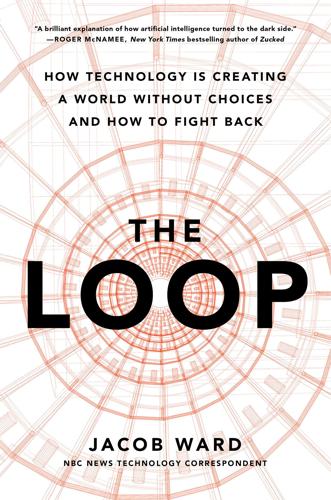
The Loop: How Technology Is Creating a World Without Choices and How to Fight Back
by
Jacob Ward
Published 25 Jan 2022
, passing each photograph through a convolutional layer, which scans and simplifies each image, and then through a max pooling layer, which breaks the image into sections, and keeps only the section with the most representative information, before identifying the image as a dog or cow. (And in order to get good at the distinction, that supervised-learning process would have first been endlessly adjusted by human “trainers” who marked the results correct or incorrect, typically paid pennies per photo on a site like Amazon’s Mechanical Turk.) If, instead, the system was only given a list of attributes—size of animal, color, panting or not, hooved or soft-footed—reinforcement learning might simply begin guessing (dog! cow!) and adjust its verdict as the training algorithm compares those guesses to what it infers the humans want out of the matter.
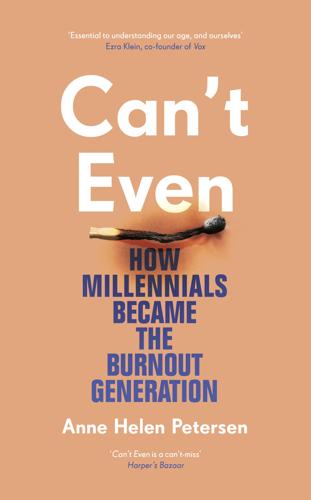
Can't Even: How Millennials Became the Burnout Generation
by
Anne Helen Petersen
Published 14 Jan 2021
This work was framed as particularly suitable for supposedly self-centered, picky, self-righteous millennials; as the gig economy grew in visibility, Forbes declared, “The 9 to 5 job may soon be a relic of the past, if millennials have their way.”21 But that’s not how it worked out. Not for Handy cleaners, or TaskRabbits, or laborers on Amazon’s Mechanical Turk, who bid to complete menial online tasks (clicking on every photo with a picture of a bird, for example, in order to assist with AI recognition) for pennies. Not for Door Dashers, who until a massive online backlash was using tips to cover their independent contractors’ base pay—meaning that if a Dasher was guaranteed $6.85 per delivery and received a $3 tip, they still received just $6.85; users were essentially tipping DoorDash itself.
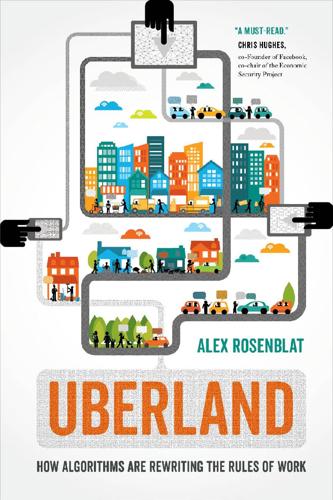
Uberland: How Algorithms Are Rewriting the Rules of Work
by
Alex Rosenblat
Published 22 Oct 2018
Uber drivers are classified as independent contractors in the eyes of the law and termed “driver-partners” in Uber’s official lexicon: these categorizations imply a higher level of autonomy and equity in the company than they have in practice. The company positions drivers as “partners” with messages like “be your own boss and “get paid in fares for driving on your own schedule.” Other digital economy labor platforms, like Amazon’s Mechanical Turk, and sharing economy companies like TaskRabbit, call their workers, respectively, “Turkers” and “Taskers” or “Rabbits” and bill them as entrepreneurs or micropreneurs.46 This careful dance with terminology distances platform employers from the rules and norms of labor law.47 These new platform companies attempt to align themselves with a lineage of “cooperative commerce”48 or acts of mutual help and generosity like hitchhiking, carpooling, and couch surfing.

The Myth of Artificial Intelligence: Why Computers Can't Think the Way We Do
by
Erik J. Larson
Published 5 Apr 2021
The well-known ImageNet competitions present contestants with a large-scale task in supervised learning, drawing on the millions of images that ImageNet has downloaded from websites like Flickr for use in training and testing the accuracy of deep learning systems. All these images have been labeled by humans (providing their services to the project through Amazon’s Mechanical Turk interface) and the terms they apply make up a structured database of English words known as WordNet. A selected subset of words in WordNet represents a category to be learned, using common nouns (like dog, pumpkin, piano, house) and a selection of more obscure items (like Scottish terrier, hussar monkey, flamingo).

Rise of the Robots: Technology and the Threat of a Jobless Future
by
Martin Ford
Published 4 May 2015
* In addition to his work in genetic programming, Koza is the inventor of the scratch-off lottery ticket and the originator of the “constitutional workaround” idea to elect US presidents by popular vote by having the states agree to award electoral-college votes based on the country’s overall popular-vote outcome. * If you find this type of work appealing but lack the requisite legal training, be sure to check out Amazon’s “Mechanical Turk” service, which offers many similar opportunities. “BinCam,” for example, places cameras in your garbage bin, tracks everything you throw away, and then automatically posts the record to social media. The idea is, apparently, to shame yourself into not wasting food and not forgetting to recycle.
…
See artificial intelligence (AI) “AI winters,” 231 Alaska, annual dividend, 268 algorithms acceleration in development of, 71 automated trading, 56, 113–115 increasing efficiency of, 64 machine learning, 89, 93, 100–101, 107–115, 130–131 threat to jobs, xv, 85–86 alien invasion parable, 194–196, 240 “All Can Be Lost: The Risk of Putting Our Knowledge in the Hands of Machines” (Carr), 254 all-payer ceiling, 168–169 all-payer rates, 167–169 Amazon.com, 16–17, 76, 89 artificial intelligence and, 231 cloud computing and, 104–105, 107 delivery model, 190, 190n “Mechanical Turk” service, 125n AMD (Advanced Micro Devices), 70n American Airlines, 179 American Hospital Association, 168 American Motors, 76 Andreesen, Marc, 107 Android, 6, 21, 79, 121 Apple, Inc., 17, 20, 51, 92, 106–107, 279 Apple Watch, 160 apps, difficulty in monetizing, 79 Arai, Noriko, 127–128 Aramco, 68 Ariely, Dan, 47n Arrow, Kenneth, 162, 169 art, machines creating, 111–113 Artificial General Intelligence (AGI), 231–233 dark side of, 238–241 the Singularity and, 233–238 artificial intelligence (AI), xiv arms race and, 232, 239–240 in medicine, 147–153 narrow, 229–230 offshoring and, 118–119 warnings concerning dangers of, 229 See also Artificial General Intelligence (AGI); automation; information technology Artificial Intelligence Laboratory (Stanford University), 6 artificial neural networks, 90–92.
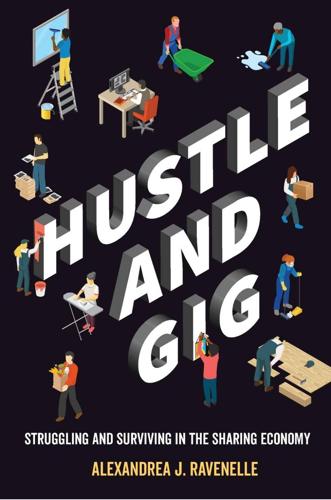
Hustle and Gig: Struggling and Surviving in the Sharing Economy
by
Alexandrea J. Ravenelle
Published 12 Mar 2019
Discussion threads have even been created to “expose Uber employees.”34 Most sharing economy services are a far cry from company towns where workers were paid in script and housed in units owned by the company. One notable exception to this was CrowdFlower, a online platform that allowed for data cleaning and was similar to Amazon’s Mechanical Turk. Although Mechanical Turk has been criticized for paying low wages, sometimes CrowdFlower didn’t even pay workers, instead giving them points for various online reward programs and videogame credits.35 While company towns were most common in the United States in the late 1800s, Uber’s recruiting playbook reaches back much farther.

Calling Bullshit: The Art of Scepticism in a Data-Driven World
by
Jevin D. West
and
Carl T. Bergstrom
Published 3 Aug 2020
Indeed, their basic finding—that an algorithm can guess sexual orientation at a rate better than chance—was replicated using different training and test data in an unpublished master’s thesis by John Leuner, though the algorithm had somewhat lower accuracy in that study. *6 Another concern is that the human judges were recruited through Amazon’s Mechanical Turk crowdsourcing system. As such, they could have been working from anywhere in the world and may have not have been familiar with US cultural norms around how self-presentation varies with sexual orientation. *7 Stand. *8 The authors do find a statistically significant correlation between a measure that they call “facial femininity” and the probability of having a homosexual orientation.

The Master Algorithm: How the Quest for the Ultimate Learning Machine Will Remake Our World
by
Pedro Domingos
Published 21 Sep 2015
But even this narrow phenomenon does not exist in isolation; it’s affected by a myriad others, which means you’re still far from understanding it. The good news today is that sciences that were once data-poor are now data-rich. Instead of paying fifty bleary-eyed undergraduates to perform some task in the lab, psychologists can get as many subjects as they want by posting the task on Amazon’s Mechanical Turk. (It makes for a more diverse sample too.) It’s getting hard to remember, but little more than a decade ago sociologists studying social networks lamented that they couldn’t get their hands on a network with more than a few hundred members. Now there’s Facebook, with over a billion. A good chunk of those members post almost blow-by-blow accounts of their lives too; it’s like having a live feed of social life on planet Earth.
…
See Artificial intelligence (AI) AIDS vaccine, Bayesian networks and, 159–160 Alchemy, 246–259, 309 Markov logic networks and, 246–250 shortcomings, 255–259 tribes of machine learning and, 250–255 alchemy.cs.washington.edu, 250 Algorithms classifiers, 86–87 complexity monster and, 5–6 defined, 1 designing, 4–5 further readings, 298–299 genetic, 122–128 overview, 1–6 structure mapping, 199–200 See also Machine learning; individual algorithms AlphaDog, 21 Amazon, 198, 266, 291 A/B testing and, 227 data gathering, 211, 271, 272 machine learning and, 11, 12 Mechanical Turk, 14 recommendations, 12–13, 42, 184, 268, 286 Analogical reasoning, 179, 197 Analogizers, 51, 53, 54, 172–173 Alchemy and, 253–254 case-based reasoning, 197–200 dimensionality, 186–190 Master Algorithm and, 240–241 nearest-neighbor algorithm, 178–186 similiarity and, 179 support vector machines, 53, 190–196 symbolists vs., 200–202 Analogy, 175–179, 197–200 AND gate, 96 AND operation, 2 Anna Karenina (Tolstoy), 66 Apple, 272 Aristotle, 58, 64, 72, 178, 243 Artificial intelligence (AI) human control of, 282–284 knowledge engineers and, 35–36 machine learning and, 8, 89–90 ASIC (application-specific integrated circuit) design, 49 Asimov, Isaac, 232, 280 Assumptions ill-posed problem and, 64 of learners, 44 learning from finite data and, 24–25 prior, 174 simplifying to reduce number of probabilities, 150 symbolists and, 61–62 Atlantic (magazine), 273–274 AT&T, 272 Attribute selection, 186–187, 188–189 Attribute weights, 189 Auditory cortex, 26 Autoencoder, 116–118 Automation, machine learning and, 10 Automaton, 123 The Average American (O’Keefe), 206 Average member, 206 Axon, 95 Babbage, Charles, 28 Backpropagation (backprop), 52, 104, 107–111, 115, 302 Alchemy and, 252 genetic algorithms vs., 128 neural networks and, 112–114 reinforcement learning and, 222 Bagging, 238 Baldwin, J.
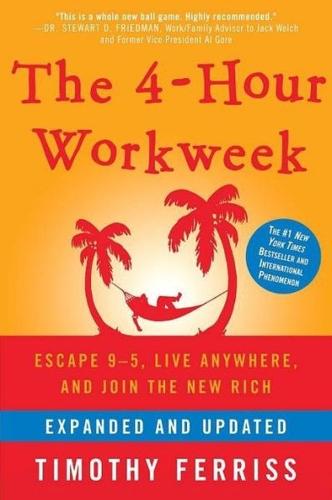
The 4-Hour Workweek: Escape 9-5, Live Anywhere, and Join the New Rich
by
Timothy Ferriss
Published 1 Jan 2007
It’s a “bug tracker” aimed at software development companies, but I use it every day for both personal and business tasks. It’s almost like a VA, as you can route your mail through it and it will help you sort it and keep track of it. It has great features to track e-mails, and there’s a free version for two users (me + VA!). —RB CARTER A really useful service is Amazon’s Mechanical Turk. With a small investment in time or money, a business that requires hundreds of people doing small bits of defined work becomes possible for extraordinarily low work-per-unit costs. Examples include the search for Steve Fosset (literally thousands of people looked at satellite photos that would have overwhelmed SAR agencies) and a trouble-ticket business that utilizes qualified labor all over the world (see Amazon.com/webservices).
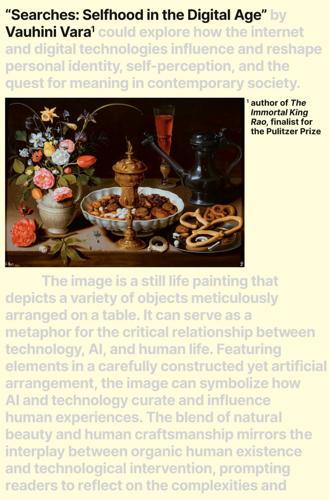
Searches: Selfhood in the Digital Age
by
Vauhini Vara
Published 8 Apr 2025
Chapter 16, “What Is It Like to Be Alive?”: I created the survey underlying this essay in the fall of 2023 using Google Forms. The text within it is made up of answers solicited, over a couple of months from 2023 to 2024, through several means: emails to friends; posts on Reddit and Twitter; and Amazon’s Mechanical Turk service, through which I paid strangers 25 to 50 cents to fill it out. In the published version, I have left respondents’ text largely as is, though my editors and I have fixed typos and made very slight grammatical and style edits. Illustration Credits 1Courtesy of Vauhini Vara 2Courtesy of Vauhini Vara 3Screenshot from Kevin Systrom’s Instagram 4Image courtesy of Professor Christopher Henshilwood; photo credit: Craig Foster 5AA Oktaviana, photograph of a painting by an unknown artist or artists dating to at least 45,500 years ago at Leang Tedongnge 6Painting by Clara Peeters in Museo Nacional del Prado; image courtesy of Bridgeman Images 7Venus of Willendorf by unknown artist or artists; photo credit: Wikipedia Commons user MatthiasKabel, Creative Commons Attribution 2.5 8African-American Girl Nude, Reclining on Couch by Thomas Eakins; courtesy of Charles Bregler’s Thomas Eakins Collection; purchased with the partial support of the Pew Memorial Trust, courtesy of the Pennsylvania Academy of the Fine Arts, Philadelphia. (1985.68.2.565) 9Domestic Data Streamers Synthetic Memories Project 10Federico Bianchi et al., generated using Stable Diffusion XL in 2022 11Dana Mauriello, generated using OpenAI’s Dall-E 3 in 2024 12© Silvano de Gennaro 13Courtesy of Vauhini Vara 14Vauhini Vara 15Vauhini Vara, generated using OpenAI’s GPT-4o in September 2024 16Vauhini Vara, generated using OpenAI’s GPT-4o in September 2024 17Vauhini Vara, generated using Microsoft Image Creator in July 2024 18Vauhini Vara, generated using Microsoft Image Creator in July 2024 19Vauhini Vara, generated using Microsoft Image Creator in July 2024 20Vauhini Vara, generated using Microsoft Image Creator in June 2024 21Vauhini Vara, generated using Microsoft Image Creator in July 2024 22Vauhini Vara, generated using OpenAI’s GPT-4o in September 2024 23Vauhini Vara, generated using OpenAI’s GPT-4o in September 2024 24Vauhini Vara, generated using OpenAI’s GPT-4o in September 2024 25Vauhini Vara, generated using OpenAI’s Dall-E 3 in July 2024 26Vauhini Vara, generated using OpenAI’s Dall-E 3 in July 2024 27Vauhini Vara, generated using OpenAI’s Dall-E 3 in July 2024 28Vauhini Vara, generated using OpenAI’s Dall-E 3 in July 2024 29Vauhini Vara, generated using OpenAI’s Dall-E 3 in July 2024 30Vauhini Vara, generated using OpenAI’s Dall-E 3 in July 2024 31Vauhini Vara, generated using OpenAI’s Dall-E 3 in July 2024 32Vauhini Vara, generated using OpenAI’s GPT-4o in September 2024 33Vauhini Vara, generated using Microsoft Image Creator in July 2024 34Vauhini Vara, generated using OpenAI’s Dall-E 3 in July 2024 35Vauhini Vara, generated using OpenAI’s GPT-4o in September 2024 36Vauhini Vara, generated using OpenAI’s Dall-E 3 in July 2024 37Vauhini Vara, generated using OpenAI’s Dall-E 3 in July 2024 38Vauhini Vara, generated using OpenAI’s Dall-E 3 in July 2024 39Vauhini Vara, generated using OpenAI’s Dall-E 3 in July 2024 40Vauhini Vara, generated using OpenAI’s Dall-E 3 in July 2024 41Vauhini Vara, generated using OpenAI’s Dall-E 3 in July 2024 42Vauhini Vara, generated using OpenAI’s Dall-E 3 in July 2024 43Vauhini Vara, generated using OpenAI’s Dall-E 3 in July 2024 44Vauhini Vara, generated using OpenAI’s Dall-E 3 in July 2024 45Vauhini Vara, generated using OpenAI’s Dall-E 3 in July 2024 46Vauhini Vara, generated using OpenAI’s Dall-E 3 in July 2024 47Vauhini Vara, generated using OpenAI’s Dall-E 3 in July 2024 48Vauhini Vara, generated using OpenAI’s Dall-E 3 in July 2024 49Vauhini Vara, generated using OpenAI’s Dall-E 3 in July 2024 50Vauhini Vara, generated using OpenAI’s GPT-4o in September 2024 51Vauhini Vara, generated using Microsoft Image Creator in July 2024 52Vauhini Vara, generated using OpenAI’s GPT-4o in September 2024 53Vauhini Vara, generated using Microsoft Image Creator in July 2024 A Note About the Author Vauhini Vara has been a reporter and editor for The Atlantic, The New Yorker, and The New York Times Magazine, and is the prizewinning author of The Immortal King Rao and This Is Salvaged.

The Job: The Future of Work in the Modern Era
by
Ellen Ruppel Shell
Published 22 Oct 2018
Equally promising, and perhaps even more unexpected, is the online “platform cooperative” designed to allow workers to exchange their labor without the interference—and cost—of a middleman. Platform cooperatives rose as an alternative to old-school online labor brokerages like Upwork and Amazon’s Mechanical Turk (MTurk), currently the most popular online work “marketplace.” MTurk is an online platform that employers (or “requesters”) use to “distribute” what Amazon calls “Human Intelligence Tasks,” snippets of work like filling out surveys, tagging photos, transcribing podcasts, or entering data into Excel spreadsheets.
…
Requesters complain of workers doing a slipshod job, and workers accuse Amazon of “crowd-fleecing,” preying on a desperate worldwide digital workforce to grab the lion’s share of profits. (As filmmaker Alex Rivera put it in his cult hit Sleep Dealer, “all the work without the worker.”) Amazon’s own website all but confirms this charge, boasting that the company “significantly lowers costs” by “leveraging the skills of Mechanical Turk Workers from around the world.” MIT mathematician and philosopher Norbert Wiener once warned that under capitalism the very job of new technology was to intensify the exploitation of workers. “Crowd-sourced” work marketplaces have certainly contributed to this problem.

Platform Revolution: How Networked Markets Are Transforming the Economy--And How to Make Them Work for You
by
Sangeet Paul Choudary
,
Marshall W. van Alstyne
and
Geoffrey G. Parker
Published 27 Mar 2016
The division of labor into smaller and smaller units of work, which Adam Smith recognized as a key to the productive capability of organizations almost three centuries ago, is likely to continue, powered by increasingly smart algorithms that are capable of breaking down a complex job into tiny, simple tasks to be handled by hundreds of workers, then reassembling the results into a unified whole. Amazon’s Mechanical Turk already applies this logic to many assignments. The trend toward freelance work, self-employment, contract labor, and nontraditional career paths will also continue to accelerate. The Freelancers Union estimates that one in three American workers already does some freelance work; that percentage is likely to increase in the years to come.

The Future Is Faster Than You Think: How Converging Technologies Are Transforming Business, Industries, and Our Lives
by
Peter H. Diamandis
and
Steven Kotler
Published 28 Jan 2020
They leverage (that is, rent out) the assets (spare bedrooms) of the crowd. These models also lean on staff-on-demand, which provides a company with the agility needed to adapt to a rapidly changing environment. Sure, this once meant call centers in India, but today it’s everything from micro-task laborers behind Amazon’s Mechanical Turk on the low end to Kaggle’s data scientist-on-demand service on the high end. The Free/Data Economy: This is the platform version of the “bait and hook” model, essentially baiting the customer with free access to a cool service (like Facebook) and then making money off the data gathered about that customer (also like Facebook).

New Laws of Robotics: Defending Human Expertise in the Age of AI
by
Frank Pasquale
Published 14 May 2020
The digital / non-digital divide is, however, very useful in another way: it is much easier to imagine a future machine-vision system effortlessly parsing the difference between paint and pixels than convincingly distinguishing between a still from the beginning of a pornographic film and a photograph documenting the lives of sex workers in a tasteful and artistic way. The former is a mere pattern-recognition task, and we can imagine hundreds of thousands of images uncontroversially classified as one or the other, perhaps by workers on Amazon’s Mechanical Turk platform (and perhaps even via unsupervised machine learning).55 The latter is a matter of moral and aesthetic judgment—and that judgment may change over time, or vary by place. We should not allow the limits of a tool (AI) to dictate a partial or ham-handed approach to a difficult cultural and political question (how much nudity is appropriate in social media venues easily accessible to children).56 In well-ordered polities, communities debate the scope of the obscene, regulators must decide what to suppress and what to ignore, and courts can step in to defend the rights of those unfairly singled out by prejudiced or biased decision makers.

The Equality Machine: Harnessing Digital Technology for a Brighter, More Inclusive Future
by
Orly Lobel
Published 17 Oct 2022
Earlier studies on the software found that certain algorithms charged with flagging who is likely to reoffend are inherently flawed, labeling Black defendants as future criminals twice as often as white defendants and frequently mislabeling white defendants as “low risk.” One high-profile, much-cited study from 2018 found that COMPAS is no more accurate than predictions by people with no criminal justice expertise. The study looked at 400 online participants on Amazon’s Mechanical Turk who crowdsourced short descriptions of real defendants from a publicly available COMPAS data set. The participants were asked to predict whether the defendants were likely to commit a crime in the future. The study found that the overall accuracy of the lay humans was 62 percent, compared to the 65 percent accuracy of algorithmic COMPAS predictions.12 More recent studies do question these findings, however: one from 2020 argues that the first research wasn’t a good reflection of human judgment in the real world, and that the first study’s experimental setting focused participants’ attention on the most predictive factors and gave them feedback along the way, artificially boosting their results.13 In each of the fifty rounds, participants made a prediction, were informed whether the prediction was correct—that is, received immediate feedback—and then received the next scenario.

The People vs Tech: How the Internet Is Killing Democracy (And How We Save It)
by
Jamie Bartlett
Published 4 Apr 2018
I was told repeatedly in the magical Silicon Valley bubble where everything is possible that unemployed truckers in their fifties could retrain as web-developers and machine learning specialists – a convenient self-delusion that no one really believes. It is far more likely that many truck drivers, without the necessary skills, will drift off to more precarious, piecemeal, low-paid work – perhaps becoming taxi drivers (assuming they still exist) or Amazon warehouse operators or Mechanical Turk labourers who are paid an hourly rate to train software or fill in surveys. Perhaps they could clean the machines that clean the machines that repair the driverless trucks that they once occupied.* Routine and non We should be reasonably confident that AI will result in forward leaps in productivity and overall wealth.
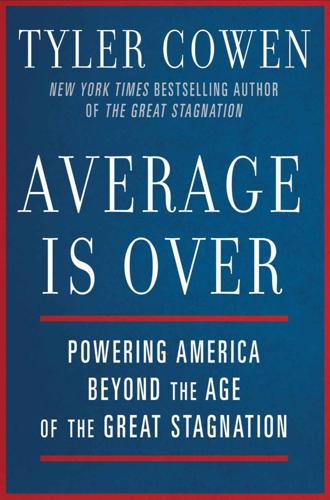
Average Is Over: Powering America Beyond the Age of the Great Stagnation
by
Tyler Cowen
Published 11 Sep 2013
In the eighteenth and nineteenth centuries, the trick was to sneak a human chess player inside a machine and pretend to have created a technological marvel—a machine that played a good game of chess. This formed the basis of a sensational traveling exhibition called a Mechanical Turk, which hid a human inside—in a nontransparent manner—using principles now associated with magicians. (If you are wondering, the name of Amazon’s current Mechanical Turk service, which combines man and machine to perform programming tasks, is based on this history.) The machine “operated” from 1770 until its destruction by fire in 1854, although it was exposed as a fake at least as early as 1820. It was originally designed to impress Queen Maria Theresa of Austria, and the contraption is said to have defeated both Benjamin Franklin and Napoleon Bonaparte at chess.

Exponential Organizations: Why New Organizations Are Ten Times Better, Faster, and Cheaper Than Yours (And What to Do About It)
by
Salim Ismail
and
Yuri van Geest
Published 17 Oct 2014
When Proctor and Gamble needs to know how and where its merchandise is being placed on Walmart shelves around the world, it can use Gigwalk’s platform to instantly deploy thousands of people who are paid a few dollars to walk into Walmart and check the shelves. Results come in within an hour. Staff-on-demand initiatives similar to Gigwalk are springing up everywhere: oDesk, Roamler, Elance, TaskRabbit and Amazon’s venerable Mechanical Turk are platforms where all levels of work, including highly skilled labor, can be outsourced. These companies, which represent just the first wave of this new business model, optimize the concept of paying for performance to lower customer risk. For talented workers, working on and getting paid for multiple projects is a particularly welcome opportunity.

Connectography: Mapping the Future of Global Civilization
by
Parag Khanna
Published 18 Apr 2016
THE GLOBAL DIGITAL WORKFORCE At any given time, my wife and I might be employing a Filipino during a typhoon, an Indian during a power outage, a Ukrainian during a war, a Tunisian during an upheaval—and even once a Malaysian unfortunately named Saddam Hussein—to manage our schedules or do Internet searches. They all work on short-term, delivery-based tasks via Upwork, the largest of the mushrooming number of virtual work portals (alongside Amazon’s Mechanical Turk and Freelancer.com) that collectively provide at least 100 million people with more income than they would otherwise have. While Silicon Valley technology companies employ fewer workers than their industrial-age counterparts such as General Motors, their global services platforms facilitate portable and digital work for the connected masses whether posting advertisements, verifying addresses, photographing for registries, comparing prices for companies, or performing other basic tasks.
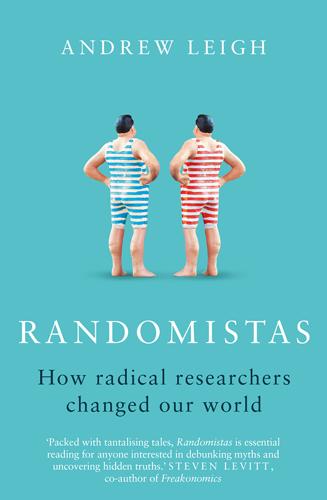
Randomistas: How Radical Researchers Changed Our World
by
Andrew Leigh
Published 14 Sep 2018
In a randomised experiment of condom sellers in urban Zambia, a team of researchers compared the effect of bonus pay with social recognition of star employees.43 In that setting, it turns out that the promise of being publicly recognised has twice as large an impact as financial rewards. Who knew that being ‘condom seller of the month’ could be such an incentive? But other kinds of ‘recognition’ can have the opposite effect. In a randomised experiment run on workers on Amazon’s online Mechanical Turk platform, some employees were given feedback about their relative ranking, compared to their co-workers.44 Telling workers their place in the pecking order turned out to reduce productivity. If you’re a boss, these experiments are a reminder that the most productive people in the workplace are bringing in a double dividend.
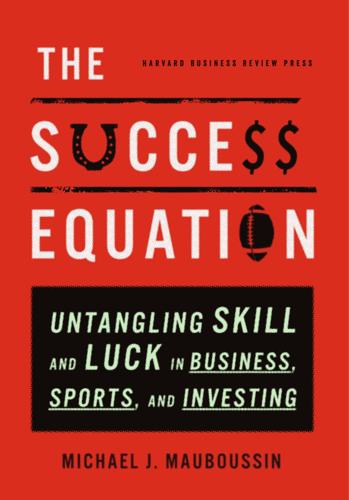
The Success Equation: Untangling Skill and Luck in Business, Sports, and Investing
by
Michael J. Mauboussin
Published 14 Jul 2012
If a prospective reader likes a title, then she might be more likely to open the book and take a look, and that would increase the likelihood that she'd buy it. As we saw in the discussion of the shape of luck, there are many factors that go in to book sales beyond the title. All things being equal, though, a good title is better than a bad one. So I took matters into my own hands and set up a tournament. I used a service from Amazon.com called Mechanical Turk. The site allows you to offer micropayments to people willing to complete a “human intelligence task,” often a question that needs an answer. I asked my editor for her favorite seven titles and added Think Twice, paired them randomly, and offered turkers $0.10 to “select the best title for a book.”
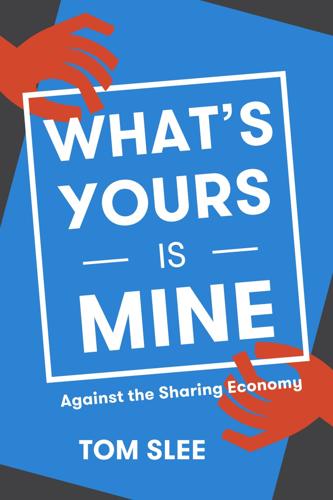
What's Yours Is Mine: Against the Sharing Economy
by
Tom Slee
Published 18 Nov 2015
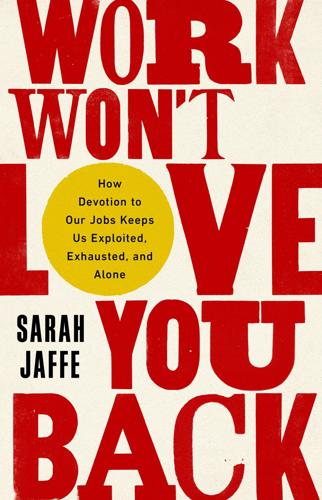
Work Won't Love You Back: How Devotion to Our Jobs Keeps Us Exploited, Exhausted, and Alone
by
Sarah Jaffe
Published 26 Jan 2021
Silicon Valley later outsourced it to other countries, such as the Philippines, or even to refugee camps in Gaza, where the disturbing work of purging social networks of violence, porn, and anything else that might prove offensive to users was done for a fraction of what US wages would be. One article estimated the number of such workers at over one hundred thousand. Astra Taylor called the process Fauxtomation, whereby actual humans perform jobs that most people probably assume are done by algorithm. It is the secret of Silicon Valley, nodded to by Amazon with its Mechanical Turk service—the Mechanical Turk was a gadget created centuries before the computer to, purportedly, play chess. Inside the Turk was a human making the decisions. Now Amazon’s “Turkers,” many of them inside the United States, do repetitive “microtasks” for pennies, but the myth of the genius programmer helps to mystify the work still being done by human hands and human minds. 32 The Silicon Valley workplace, created in the image of the boy king, seemed almost designed to erase the caring labor discussed in earlier chapters.

On the Edge: The Art of Risking Everything
by
Nate Silver
Published 12 Aug 2024
This answer might minimize the loss function in the training data because the moon being made out of cheese is a centuries-old trope. But this is still misinformation, however harmless in this instance. So LLMs undergo another stage in their training: what’s called RLHF, or reinforcement learning from human feedback. Basically, it works like this: the AI labs hire cheap labor—often from Amazon’s Mechanical Turk, where you can employ human AI trainers from any of roughly fifty countries—to score the model’s answers in the form of an A/B test: A: The Moon is made out of cheese. B: The Moon is primarily composed of a variety of rocks and minerals. Its surface is mostly covered with regolith, a layer of loose, fragmented material that includes dust, soil, and broken rock.[*28] The human judges will presumably pick B.

Is the Internet Changing the Way You Think?: The Net's Impact on Our Minds and Future
by
John Brockman
Published 18 Jan 2011
Nowadays open-source development moves around in the infosphere and is being improved constantly on whatever side of the planet happens to be in sunshine (and often on the other side as well). There is grandeur in this new way of computer life, where the normal sleep-wake cycle is replaced by the constant churning of silicon and mind. But there is much inherent danger in it as well. Take a look at Amazon’s aptly named Mechanical Turk, and you’ll find an alternative Website where largely profitable enterprises in developed countries offer short-term, badly paid computer jobs to the third world’s poor. For a few pennies, they propose a number of thankless assignments ironically called “human intelligence tasks” that require completing forms, categorizing images, or typing handwritten notes—anything computers still cannot do.

Filterworld: How Algorithms Flattened Culture
by
Kyle Chayka
Published 15 Jan 2024
The photo was then sent to your phone and stored in an app that built an encyclopedia of your wardrobe—you could scroll through your own clothes as if they were a private Instagram account (not unlike Cher Horowitz in Clueless). But the camera also judged your clothes with a function called “Style Check,” using a combination of algorithmic analysis and human workers (recall Amazon’s faux-automated Mechanical Turk) to tell you if the garments matched or if the combination was fashionable. To see how the Echo evaluated style, I tried wearing two different T-shirt and jeans outfits—one set all black and the other all gray—standing in front of the Echo Look like it was my mother before picture day at elementary school.

Palo Alto: A History of California, Capitalism, and the World
by
Malcolm Harris
Published 14 Feb 2023
Though the firms had no official relationship—for what it’s worth, Wylie writes that Nix often paid contractors in cash, avoiding a paper trail—Palantir’s London office helped out anyway.62 A staffer there was working on winning new commercial business for the firm, and he advised SCL to just create another app. To make sure everything was kosher, Cambridge Analytica used online microlabor platforms (including Amazon’s Mechanical Turk) to pay survey takers to expose their Facebook data and, as it turned out, that of their friends as well. The result was a database, the kind RapLeaf and PRISM tended toward: integrated information’s clean white beam of light. Nix and Bannon took turns calling Americans, surveying them on their preferences, delighted to see the information match up with the profiles on the computer screen.
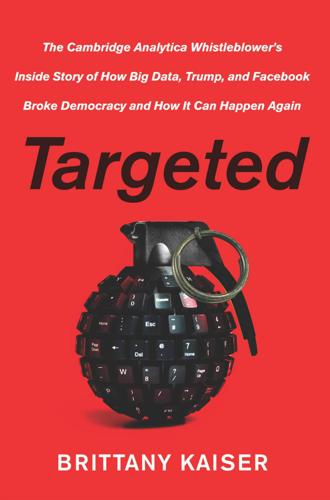
Targeted: The Cambridge Analytica Whistleblower's Inside Story of How Big Data, Trump, and Facebook Broke Democracy and How It Can Happen Again
by
Brittany Kaiser
Published 21 Oct 2019
Kogan had done was back in 2013, which was well before the cut-off date. The story gained traction overnight. It was reprinted everywhere, and led to additional reporting in influential publications such as Fortune and Mother Jones and on sites such as Business Insider and Gizmodo. Kogan’s 2013 data gathering had first taken place on an Amazon Marketplace platform called “Mechanical Turk.” He had paid users a dollar apiece to take the personality quiz This Is Your Digital Life. When users completed the quiz on Facebook, the app connected to the Friends API to take their data and that of their entire list of friends. From the answers Kogan had obtained through This Is Your Digital Life, he created a training set to model all the participants’ personalities and then reportedly sold the modeling and the data set to CA, where Alex Tayler and the team tested Kogan’s models and then created new, more accurate ones based on similar concepts of personality measurement.

Messy: The Power of Disorder to Transform Our Lives
by
Tim Harford
Published 3 Oct 2016
As Brad Stone writes, “Amazon survived through a combination of conviction, improvisation, and luck.”14 Most companies would have retrenched at that point. Instead, over the next few years, Amazon launched products as disparate as the Kindle (which immediately and repeatedly sold out, as Amazon struggled to manufacture it), Mechanical Turk (an unsettlingly named global clearinghouse for labor, which pioneered crowdsourcing but was criticized as being a sweatshop), the Fire Phone (widely reviewed as ugly, weird, and disappointing), Marketplace (where competitors to Amazon would use Amazon’s own product listings to advertise their own cheaper alternatives), and Amazon Web Services.

Driverless: Intelligent Cars and the Road Ahead
by
Hod Lipson
and
Melba Kurman
Published 22 Sep 2016

The Future of the Professions: How Technology Will Transform the Work of Human Experts
by
Richard Susskind
and
Daniel Susskind
Published 24 Aug 2015
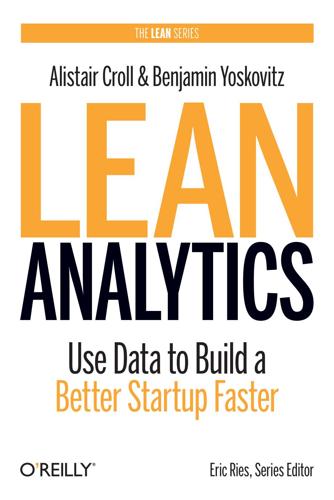
Lean Analytics: Use Data to Build a Better Startup Faster
by
Alistair Croll
and
Benjamin Yoskovitz
Published 1 Mar 2013

Empire of AI: Dreams and Nightmares in Sam Altman's OpenAI
by
Karen Hao
Published 19 May 2025
See also data privacy; existential risks alignment and, 122–23, 124, 145–46, 316–18 effective altruism and, 55–56, 230–34, 321–22 Frontier Model Forum, 305–6, 309 Senate Judiciary Hearing, 301–3, 307–9, 314–15 thresholds, 301–2, 305–8, 310–11 AI Scientist, 183, 318–19, 325, 347, 375 “AI takeoff,” 232 “AI winter,” 97, 435n Alameda Research, 231 Algorithmic Justice League, 161 algorithms, 51–52, 56, 373–74 Algorithms of Oppression (Noble), 162 Alibaba, 15, 159 Alignment Manhattan Project, 315–18 Allen & Company, 67–68 Alphabet, 105 AlphaFold, 309–10 AlphaGo, 59, 93 Altman, Annie, 43–45, 326–40, 352–55, 406, 458–59n appeals to family for financial help, 327, 331–32 death of father, 329–31 early life and education of, 29, 30, 328–29 mental health struggles of, 44–45, 329–30, 331–32, 339–40 New York magazine article, 326–27, 328–29, 332–33, 336–40, 343, 352 physical health struggles of, 329, 332–33 sexual abuse allegations of, 3, 44–45, 327–28, 334–38, 352–53, 406 sex work of, 326, 332–36 Altman, Jack, 29, 30, 35–36, 41, 69, 185, 327–28, 331, 336 Altman, Jerold “Jerry,” 29–31, 44, 329–31, 332 Altman, Max, 29, 30, 36, 326, 327–28, 331 Altman, Sam AI chip company plan, 3, 377–78 background of, 23, 29–30 benefits of AGI, 19, 405 birth and early life of, 29, 30–31 board of directors and, 40, 252–53, 320–25, 375–76 leadership questions, 345–65 business structure of OpenAI, 13–14, 61–64, 66–67, 86, 402–3, 407 ChatGPT, 260, 261, 262, 280, 346 commercialization plan, 66–67, 150–51 compute phases, plan, 278–81 conflicts and rifts at OpenAI, 149, 150–51, 233–34, 313–16, 396 congressional testimony of, 301–3, 314–15 education of, 30–32 effective altruism ideology and, 233–34 equity crisis and, 388–90, 392–96 firing and reinstatement of, 1–12, 14, 364–73 the investigation, 369–70, 375–76, 377, 392 founding of OpenAI, 12–13, 26–28, 46, 47–51, 53–54 fundraising, 61–62, 65–68, 71–72, 132, 141, 156, 262, 320–21, 331, 367, 377, 405 GPT-3, 133–34, 278–79 GPT-4, 246, 248–52, 279, 346, 383–84, 386, 390–91 Graham and, 28, 32, 36–39, 40, 69 “Intelligence Age,” 19, 405 Jobs comparisons with, 2, 34, 35, 37 Johansson crisis, 382, 390–92, 393 leadership of, 64–65, 69–70, 75, 141–44, 243–44, 354–55, 403–4 leadership behavior, 345–60, 361–65, 382–83, 385–86 Loopt and, 32–37, 43, 68 Manhattan Project, 146–47, 315–17 Mayo’s office design and, 74 media relations of, 33, 34, 383 mission of OpenAI, 5, 400–402 MIT Technology Review and, 86–87 on Napoleon, 399–400 net worth of, 35, 44, 188, 389, 390 other investment projects of, 3, 185–88 paranoia of, 147–48 personality of, 31, 34, 42–45, 333, 346 politics of, 41–42, 43, 62 research road map, 59, 175–78 retreat of October 2022, 256–57 Scallion, 379–80, 380, 382 sexuality of, 31, 41 sister Annie and, 43–45, 326–40, 385–86, 406 sexual abuse allegations, 3, 44–45, 327–28, 334–38, 352–53, 356 success formula of, 32–35, 37, 142–44 vision for OpenAI, 9, 83, 142–43, 262 World Tour of, 312, 313, 337 at Y Combinator (YC), 23, 27–28, 32, 34, 36–38, 39, 43, 68–69, 75, 141, 142, 185, 186, 187–88, 321 altruism, 13, 14, 400. See also effective altruism Amazon, 41, 46, 142, 161 data centers, 274–75, 277, 287 Mechanical Turk, 194 American Sign Language, 254 Amodei, Daniela, 55–56, 58, 144–45, 156, 157, 230 Amodei, Dario, 55–58 AI safety and risks, 55–56, 57–58, 87, 122–27, 131, 133, 134, 145–46, 147, 149–52, 156–57, 362 Altman’s firing, 366 at Anthropic, 58, 60, 115, 128, 157, 213–14, 230 background of, 55 The Divorce, 57–58, 156–57, 181, 213, 230, 233, 242, 353 Dota 2, 129, 144–45 founding of OpenAI, 28, 55 GPT-2, 125, 129–32, 150 GPT-3, 133–34, 134–35, 144–45, 156 Nest, 134–35, 144–45, 150, 151, 156, 244 promotion to director of research, 125, 133 scaling, 129–33, 156–57 Android, 100, 239 “anonymous crowd work” model, 206 Antel, 291–92 Anthropic, 6, 60, 115, 157, 233 Claude, 261, 358, 379, 400, 404–5, 406 founding of, and The Divorce, 58, 128, 157, 213, 230 Frontier Model Forum, 305–6, 309 FTX bankruptcy and, 257–58 Leike joins, 388 valuation, 18 AP Bio, 245–46 APEC CEO Summit, 2 APIs (application programming interfaces), 150–51.

The Second Machine Age: Work, Progress, and Prosperity in a Time of Brilliant Technologies
by
Erik Brynjolfsson
and
Andrew McAfee
Published 20 Jan 2014
It took a large problem (finding the duplicates among millions of pages), broke it down into many small tasks (are these two pages duplicates?), sent the tasks out to a large group of people, collected their responses, and used them to make progress on the problem (eliminating the duplicates). The software was originally intended only for internal use, but in November of 2005 Amazon released it to the public under the name Mechanical Turk, in honor of a famous eighteenth-century chess-playing ‘robot’ that turned out to have a human inside it.25 The Mechanical Turk software was similar to this automaton in that it too appeared to accomplish tasks automatically, but in reality made use of human labor. It was an example of what Amazon CEO Jeff Bezos called “artificial artificial intelligence,” and another way for people to race with machines, although not one with particularly high wages.26 Mechanical Turk, which quickly became popular, was an early instance of what came to be called crowdsourcing, defined by communications scholar Daren Brabham as “an online, distributed problem-solving and production model.”27 This model is interesting because instead of using technology to automate a process, crowdsourcing makes it deliberately labor intensive.

The Black Box Society: The Secret Algorithms That Control Money and Information
by
Frank Pasquale
Published 17 Nov 2014
Matthew Yglesias, “A Great iOS Google Maps Product Vindicates Apple’s Strategy,” Slate MoneyBox (blog), December 13, 2012, http://www.slate.com /blogs /moneybox /2012/12/13/ios _google _maps _if _it _s _great _thank _apple _s _strat egy.html. 213. Labor experts have sharply criticized Amazon’s labor practices both online (at its Mechanical Turk platform) and its warehouses. Trebor Scholz, ed., Digital Labor: The Internet as Factory and Playground (New York: Routledge, 2013). 214. Norman Solomon, “If Obama Orders the CIA to Kill a U.S. Citizen, Amazon Will Be a Partner in Assassination,” Alternet, February 12, 2014, http://www.alternet.org/print /news-amp-politics/if-obama-orders-cia-kill-us -citizen-amazon-will-be-partner-assassination. 215.
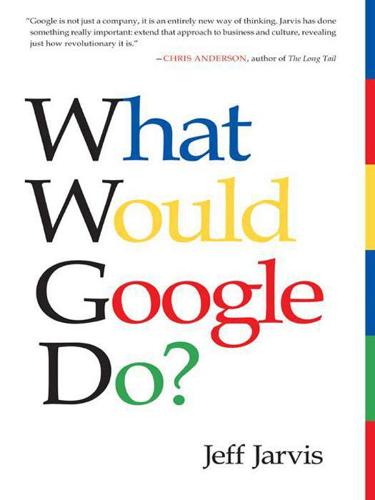
What Would Google Do?
by
Jeff Jarvis
Published 15 Feb 2009
He also took the computer infrastructure he had to build and offered it to any company as a low-cost, pay-as-you-go service: computing power, storage, databases, and a mechanism for paying programmers. Countless companies now use Amazon Web Services as their backend, foregoing or at least forestalling investments in computers and software. Amazon has also created the infrastructure for an on-demand workforce called Mechanical Turk (named after a phony chess-playing automaton from 1769 that had a human chess master hidden inside). Companies post a repetitive task to be done and anyone can earn money—as little as one cent per task—by verifying the address in a picture, for example, or categorizing content.

Listen, Liberal: Or, What Ever Happened to the Party of the People?
by
Thomas Frank
Published 15 Mar 2016
Jobs then forwarded Schmidt’s email around with this comment appended: “:)”19 Amazon, meanwhile, is famous for devising ways to goad its executives into fighting with one another—engaging in what the New York Times calls an “experiment in how far it can push white-collar workers”—while its blue-collar workers, often recruited through local temp agencies, are electronically tracked so that their efficiency is maximized as they go about assembling items in the company’s enormous fulfillment centers.20 For the rest of us, Amazon has come up with a nifty device for casual employment called “the Mechanical Turk,” in which tasks that can’t be done by computers are tossed to the reserve army of the millions, who receive pennies for their trouble. This last is a good introduction to the so-called sharing economy—“sharing” because you’re using your own car or apartment or computer, not your employer’s—which has been one of the few robustly growing employment opportunities of the Obama years.

12 Bytes: How We Got Here. Where We Might Go Next
by
Jeanette Winterson
Published 15 Mar 2021

Utopia Is Creepy: And Other Provocations
by
Nicholas Carr
Published 5 Sep 2016

Facebook: The Inside Story
by
Steven Levy
Published 25 Feb 2020